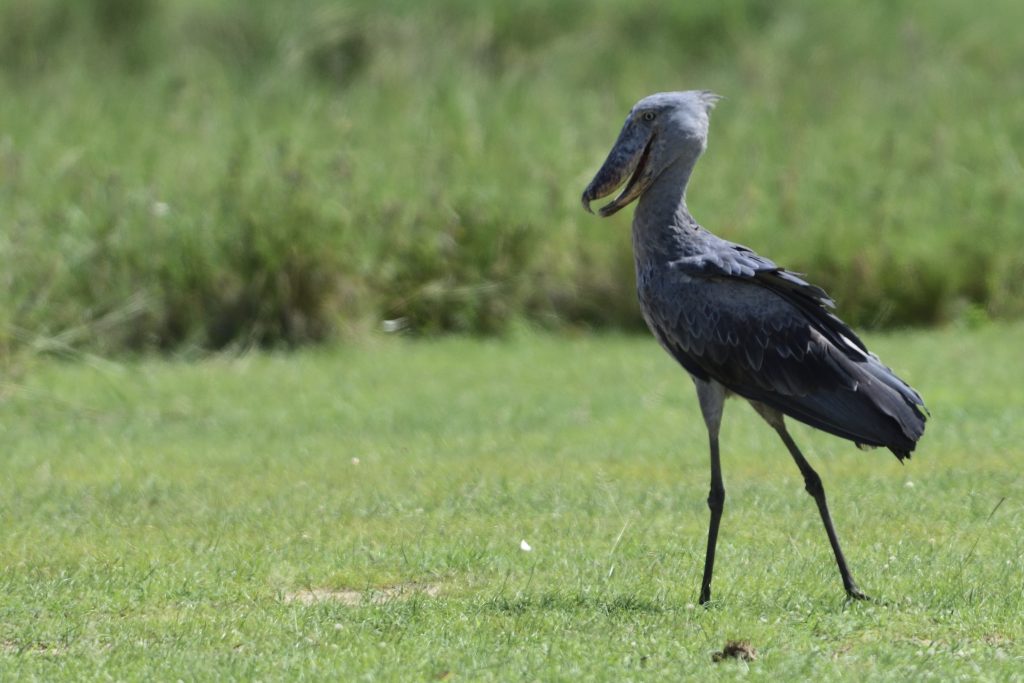
Day 1, Monday, May 27: Kiligolf to West of Nakuru (Molo), Kenya
Adam Scott Kennedy and I had planned this trip for a long time. It was to be the trip of a lifetime with a huge target list for both Uganda and Rwanda. I had never been to any of those countries so the expectations were very high. Adam arrived on May 26th and we set out from Kiligolf early in the morning on May 27th with my trusty old Land Rover, heading for the Uganda border via Kenya. We managed to make it to a little west of Nakuru, Kenya to a place called Molo the first day (about 510 km). We did a little birding in the garden of the lodge we stayed at and we had a trip list going. We did not find anything exciting. We soon settled for the night having a big drive the day after as well. All bird names in bold denotes lifers for me.
Day 2, Tuesday, May 28: Molo, Kenya – Kumi, Uganda
Adam had made contact with a guy in Kumi that had a guest house and also could take us to a spot for the Fox´s Weaver. The border crossing between Kenya and Uganda went fine and soon we were on our way to Kumi. We arrived in the afternoon, too late for any birding although we managed to see quite a few birds including a Marsh Owl in the garden of the lodge.
Day 3, Wednesday, May 29: Kumi, Uganda – Fox´s Weaver spot – Kumi
It turned out we had to take a boat ride across Lake Busina in order to get to the spot where the Fox´s Weaver were to be found. Once on the other side of the lake, it was still some distance to travel before we reached the marshy area where the Weaver were holding out. We picked up Black-rumped Buttonquail, Harlequin Quail, Black Coucal, African Crake and Fire-fronted Bishop before we parked the car. We were prepared for a long wet walk, but it turned out that the site was only about 500 meters from the road. After some searching we found a single male Fox´s Weaver (the only bird endemic to Uganda). It did play games with us and flew around. The second we managed to find it again, it was off and it proved very hard to get a proper picture of it. After a while we decided that enough was enough and that we had to settle with the pictures we did get. Other birds in the area included Karamoja Apalis, Little Weaver, Silverbird and White-headed Barbet. We were too late to catch the ferry back, so we had to drive around the lake, but I picked up a new lifer on the way Piapac.
Below you will find some pictures from Day 3
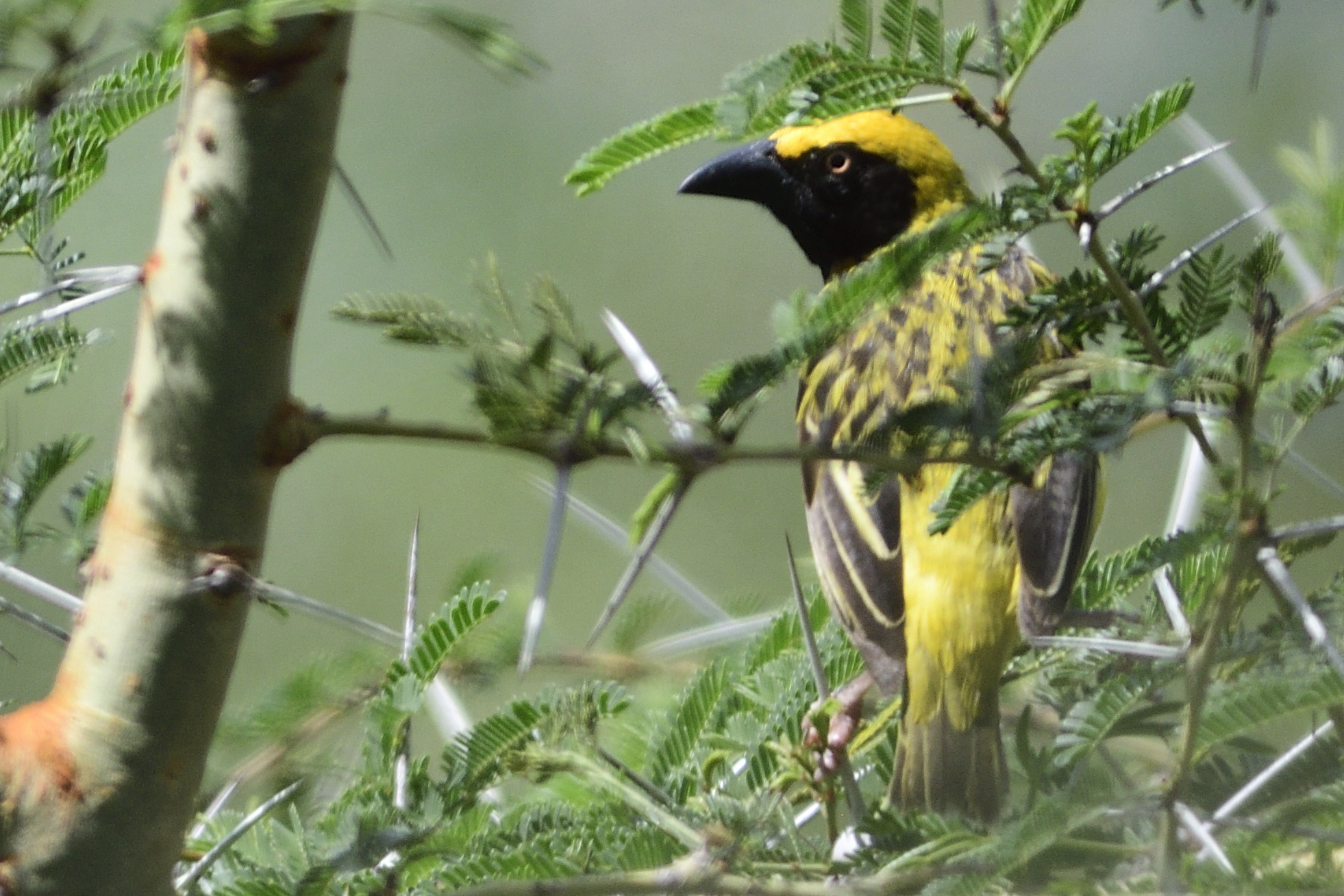
Fox´s Weaver, Ploceus spekoides – Endemic to Uganda – Lifer
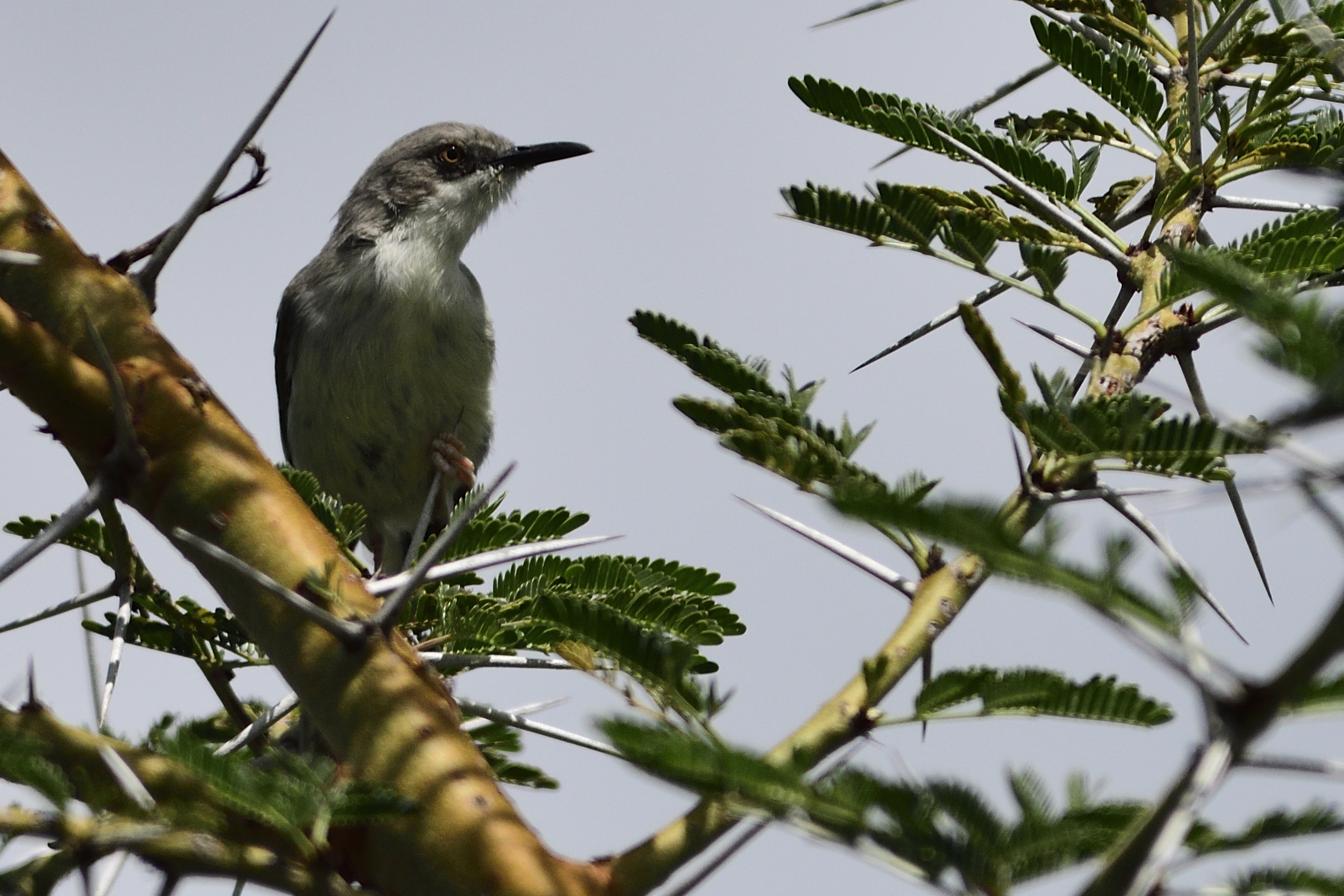
Karamoja apalis – Apalis karamojae – Localised endemic to E Africa
Day 4, Thursday May 30: Kumi to Mabira
We set of for Mabira forest in the morning. We stopped at a wetland on the way and saw both Carruther´s Cisticola and Papyrus Gonolek. We arrived late and only had time for a little bit of birding. Unfortunately, the local guide was not present, but Adam proved to be a very good bird guide. The forest was very quiet, but he managed to find a Grey-throated Tit Flycatcher. We went back to camp. There was an area with a flowering tree and a male Blue-throated Brown Sunbird hung around there and gave some nice photographic opportunities. Other birds encountered included Black-and-white Casqued Hornbill, African Pied Hornbill, Great Blue Turaco, and a brief flyby of a Cassin´s Hawk-Eagle.
Some pictures from Day 4:
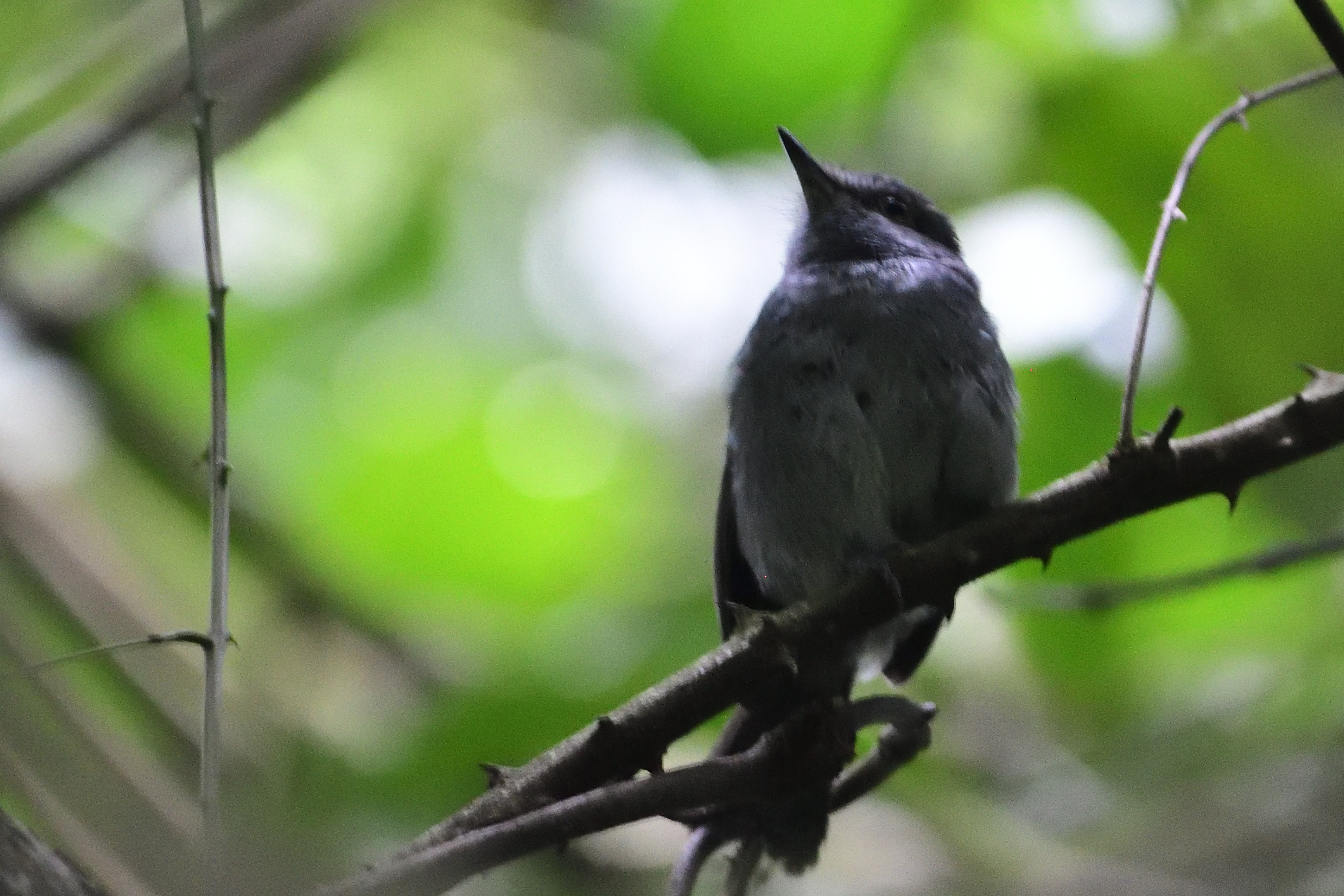
Grey-throated Tit Flycatcher, Myioparus griseigularis – Lifer
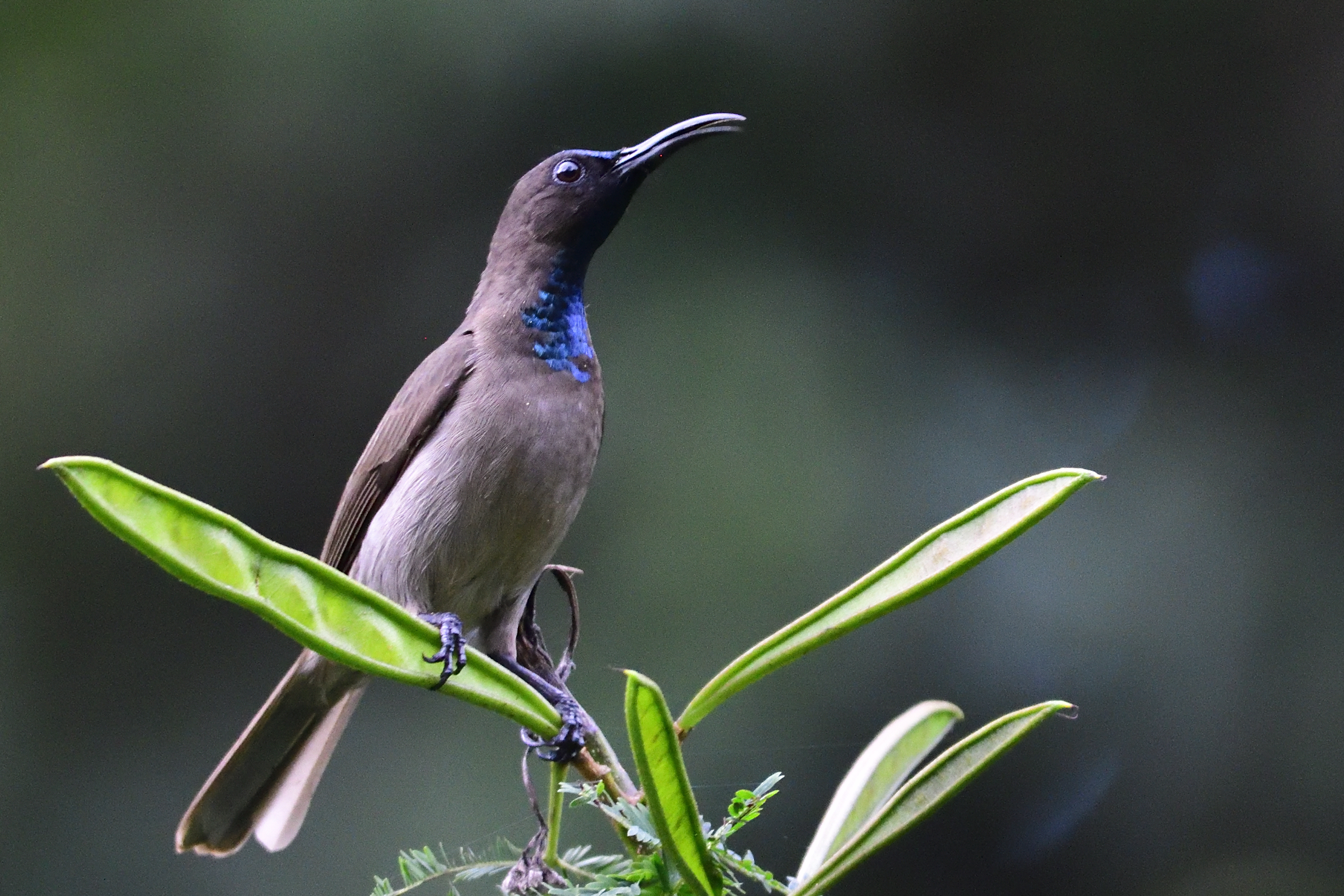
Blue-throated Brown Sunbird, Cyanomitra cyanolaema – Lifer
Day 5, Friday May 31 – All day Mabira Forest.
We were exploring more of the forest that day and was quite hansomely rewarded. Fire-crested Alethe, Fraser´s Rufous Thrush, Scaly-breasted Illadopsis, Forest Wood Hoope, African Shrike-flycatcher, Brown-eared Woodpecker, Western Oriole, Chestnut Wattle-eye, Forest Robin, Yellow-whiskered Greenbul, White-breasted Nigrita, Grey-headed Nigrita, Cabanis´s Greenbul, Buff-spotted Woodpecker, Green Hylia, and Black-crowned Waxbill was some of the species we saw. We returned to camp and while sitting on the porch observed African Pygmy Kingfisher and Black-necked Weaver. In the afternoon, we birded a more open area and found Vieillot´s Black Weaver, Black-and-white Mannikin, Superb Sunbird, Black-and-white Shrike Flycatcher, Black Bishop, African Blue Flycatcher, Red-tailed Ant-Thrush and we heard White-spotted Flufftail and Blue-shouldered Robin-Chat. In the late afternoon, we again photographed the Blue-throated and a Olive Sunbird in the garden.
Some pictures from Day 5:
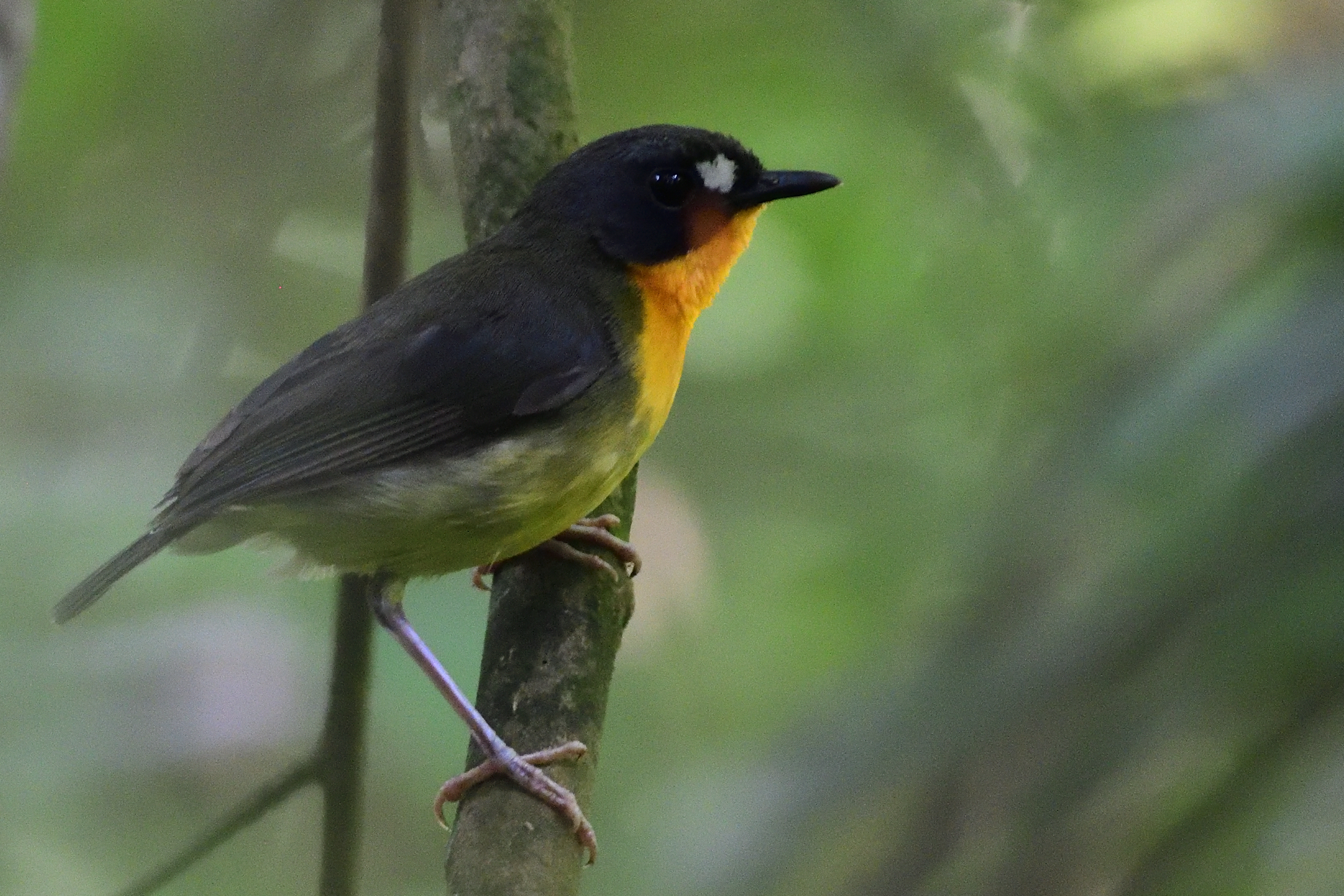
Forest Robin, Striphrornis erythrothorax – Lifer
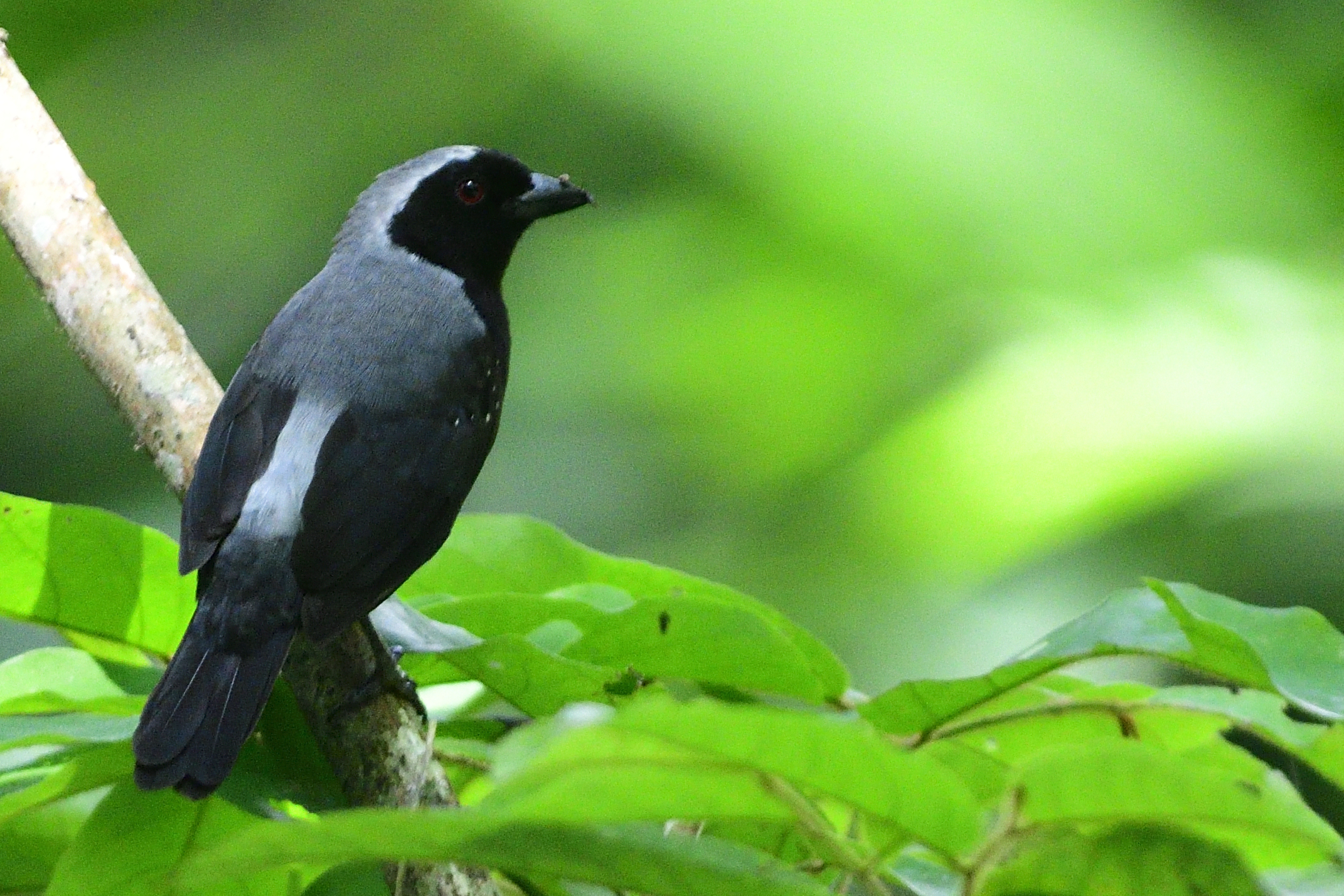
Grey-headed Nigrita, Nigrita canicapillus
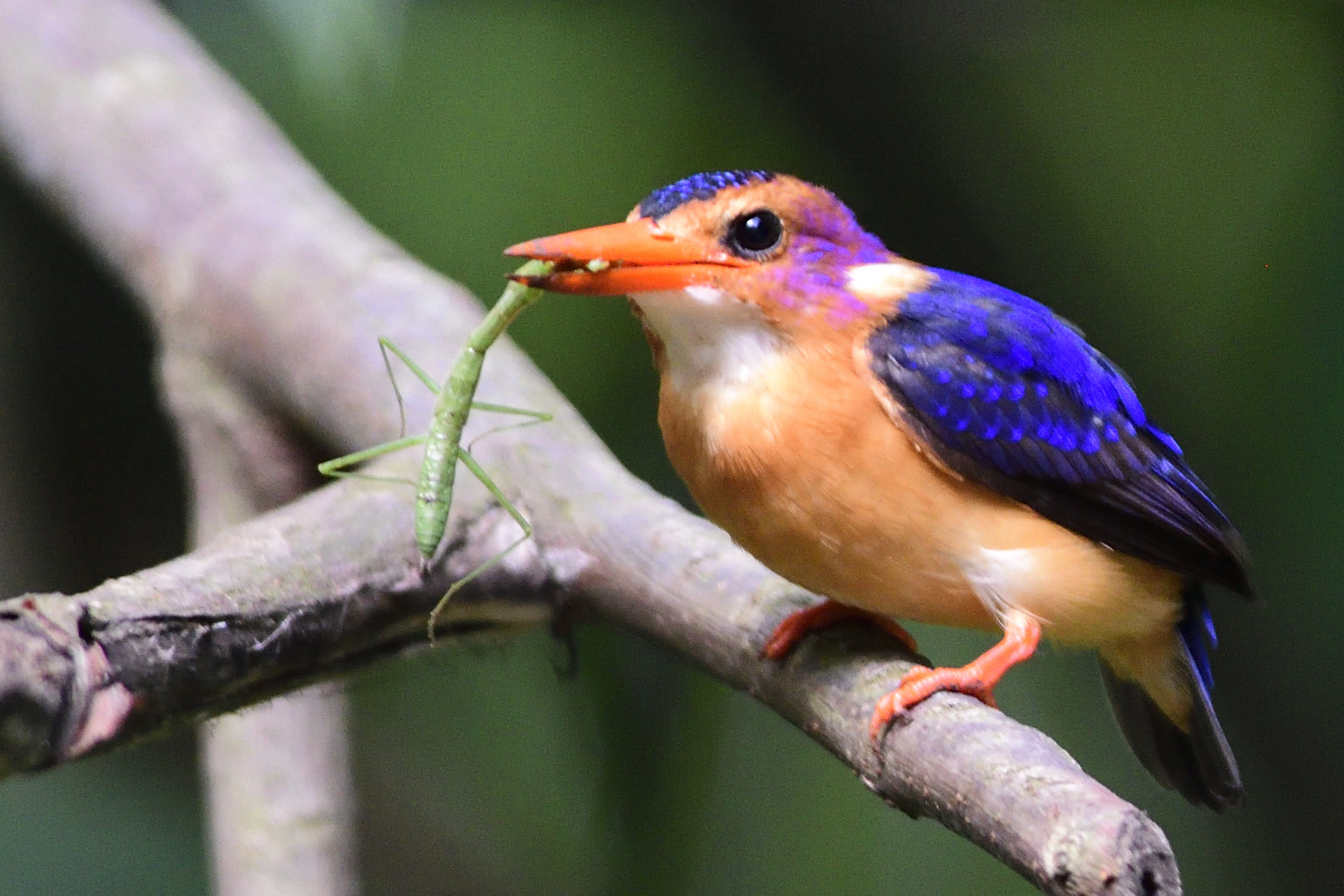
African Pygmy Kingfisher, Ispidina picta
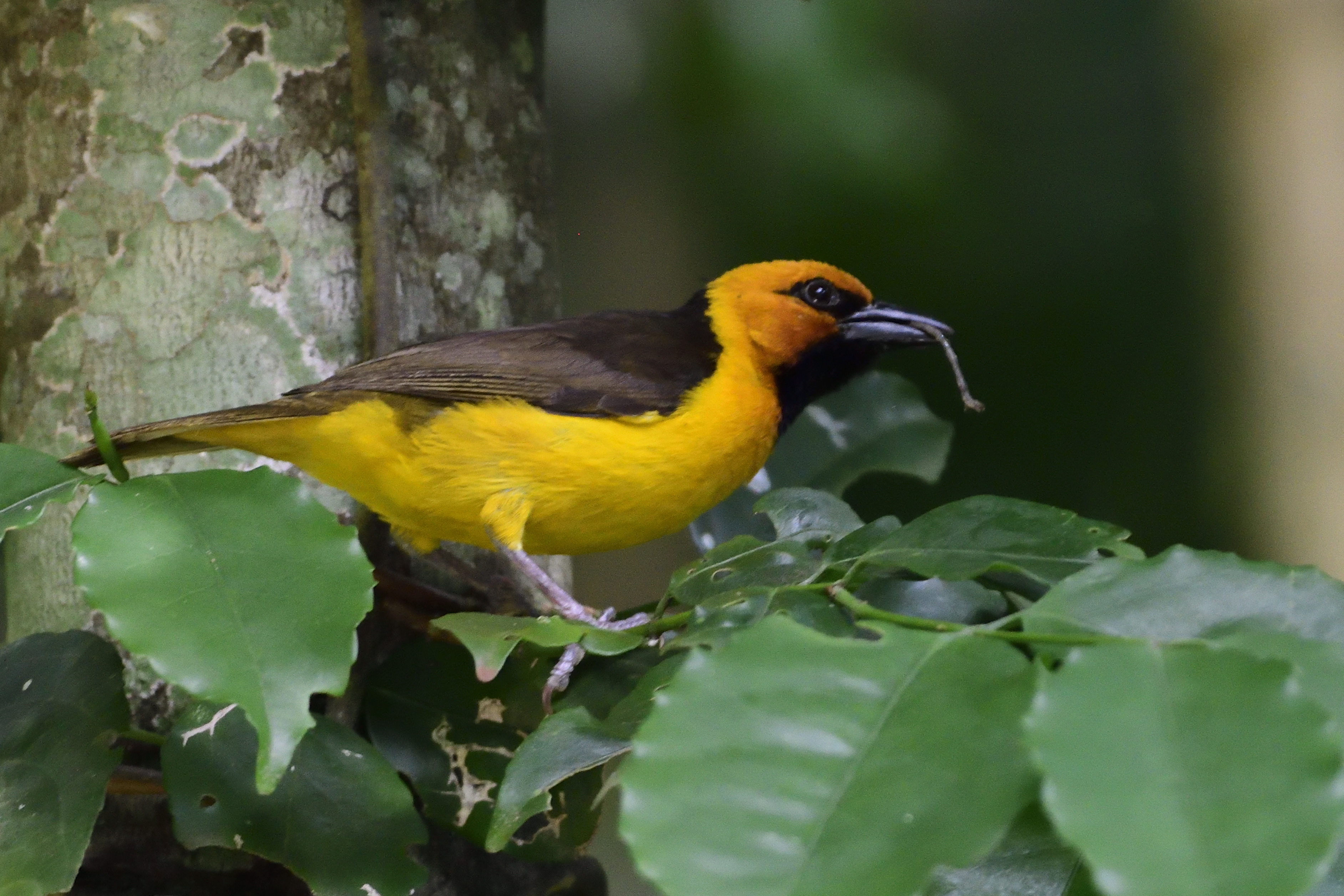
Black-necked Weaver, ploceus nigricollis
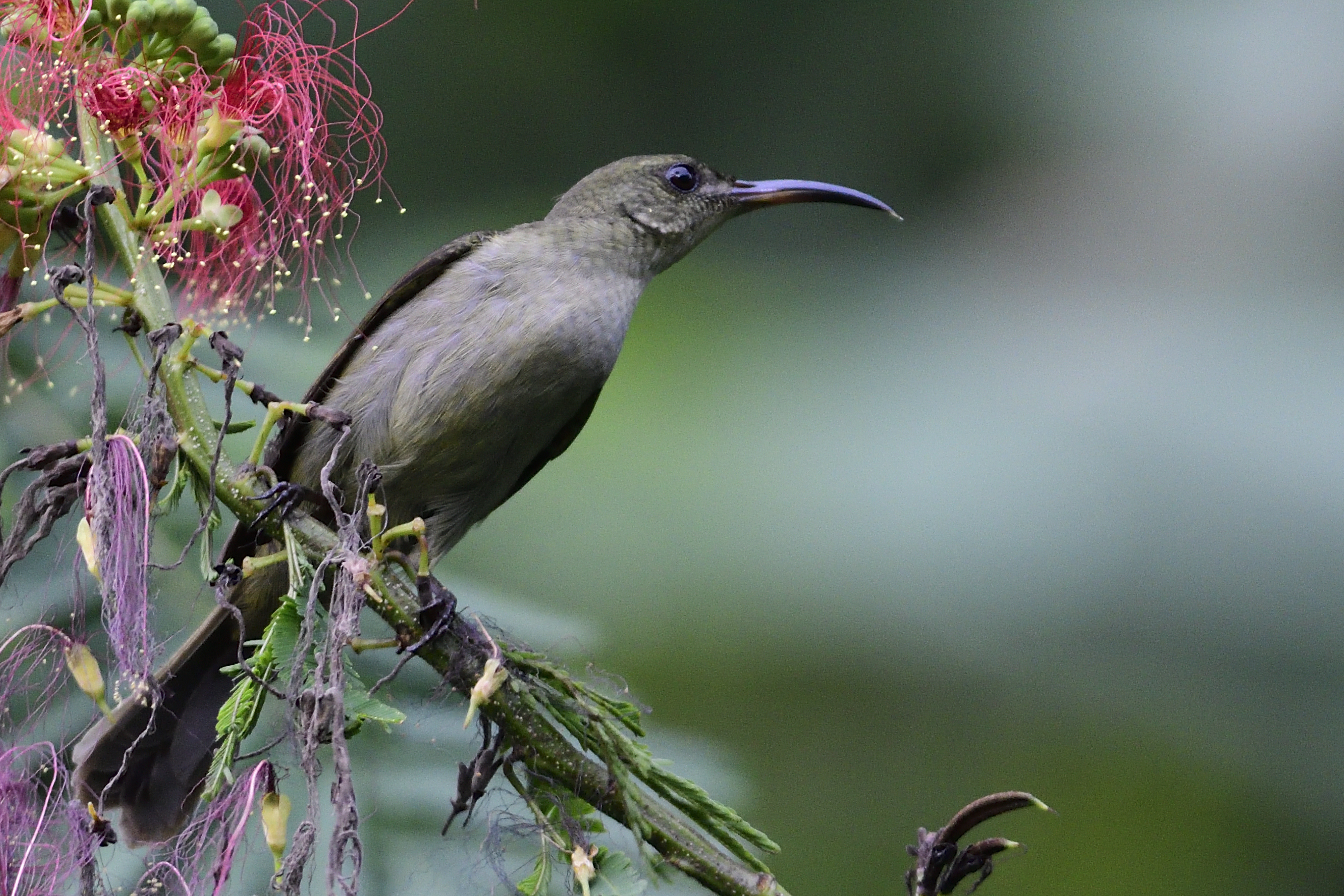
Olive Sunbird, Cyanomitra olivacea
Day 6, Saturday, June 1: Mabira to Entebbe
We decided to bird another part of the forest this morning near the visitor centre. We even had a guide, we had a long walk, but the forest was very quiet. We picked up Olive-green Camaroptera in the start, but then did not register any birds for a long time. Towards the end of the forest, we started seing some birds including Forest Wood Hoope, Grey-throated and Hairy-breasted Barbet, Red-headed Malimbe and Grey Longbill. We started our journey towards Entebbe. We stayed in Entebbe with a nice lady called Judith. She had a magnificent place overlooking a lagoon of Lake Victoria. We did a small walk in her garden and encountered amongst other birds: Black-headed Weaver, White-throated Bee-eater, Red-chested Sunbird, African Thrush, Gull-billed Tern and Yellow-throated Leaflove. Judith cooked a lovely meal for us and we retired early to bed.
Some pictures from Day 6:
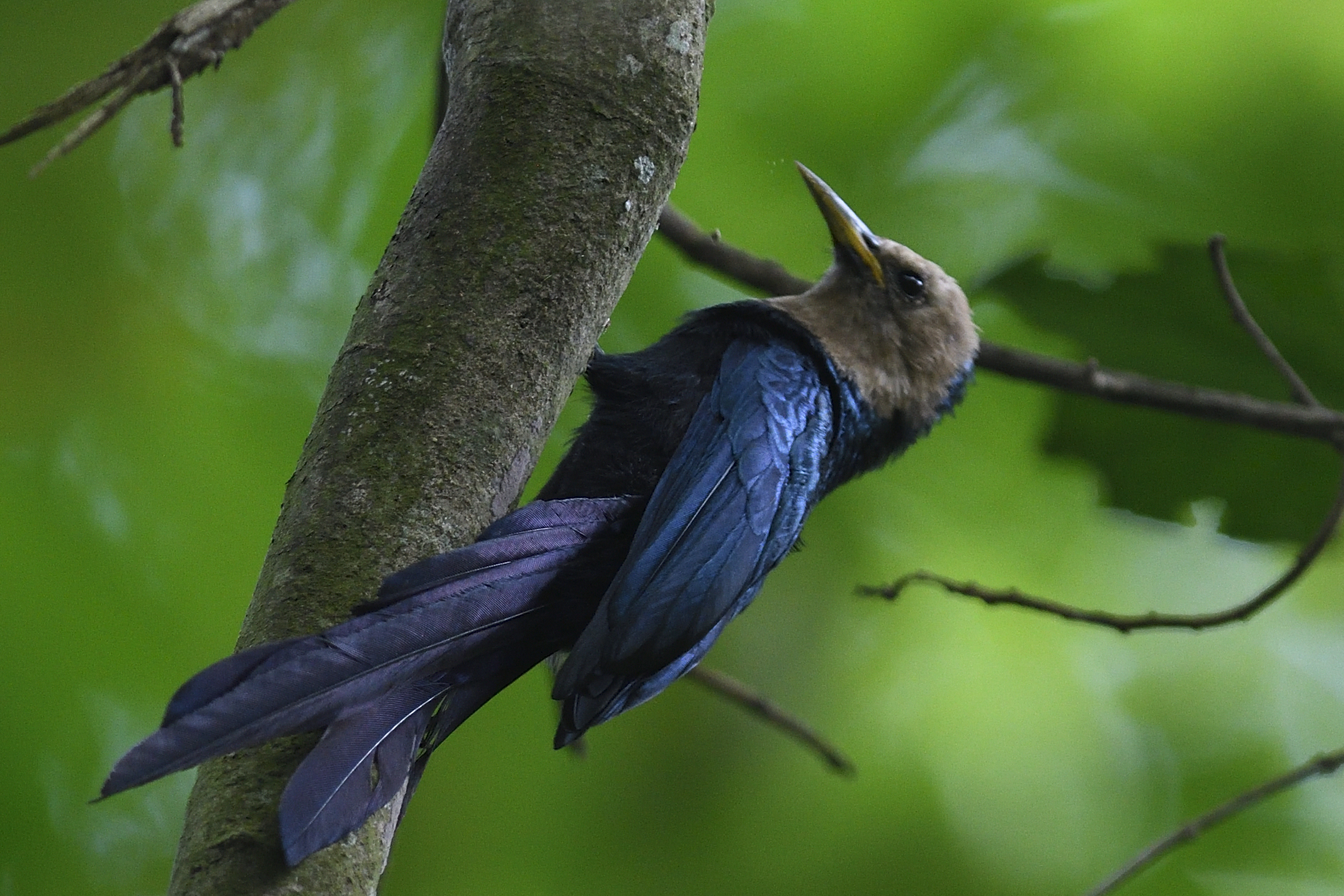
Forest Wood-Hoopoe, Phoeniculus castaneiceps – Lifer
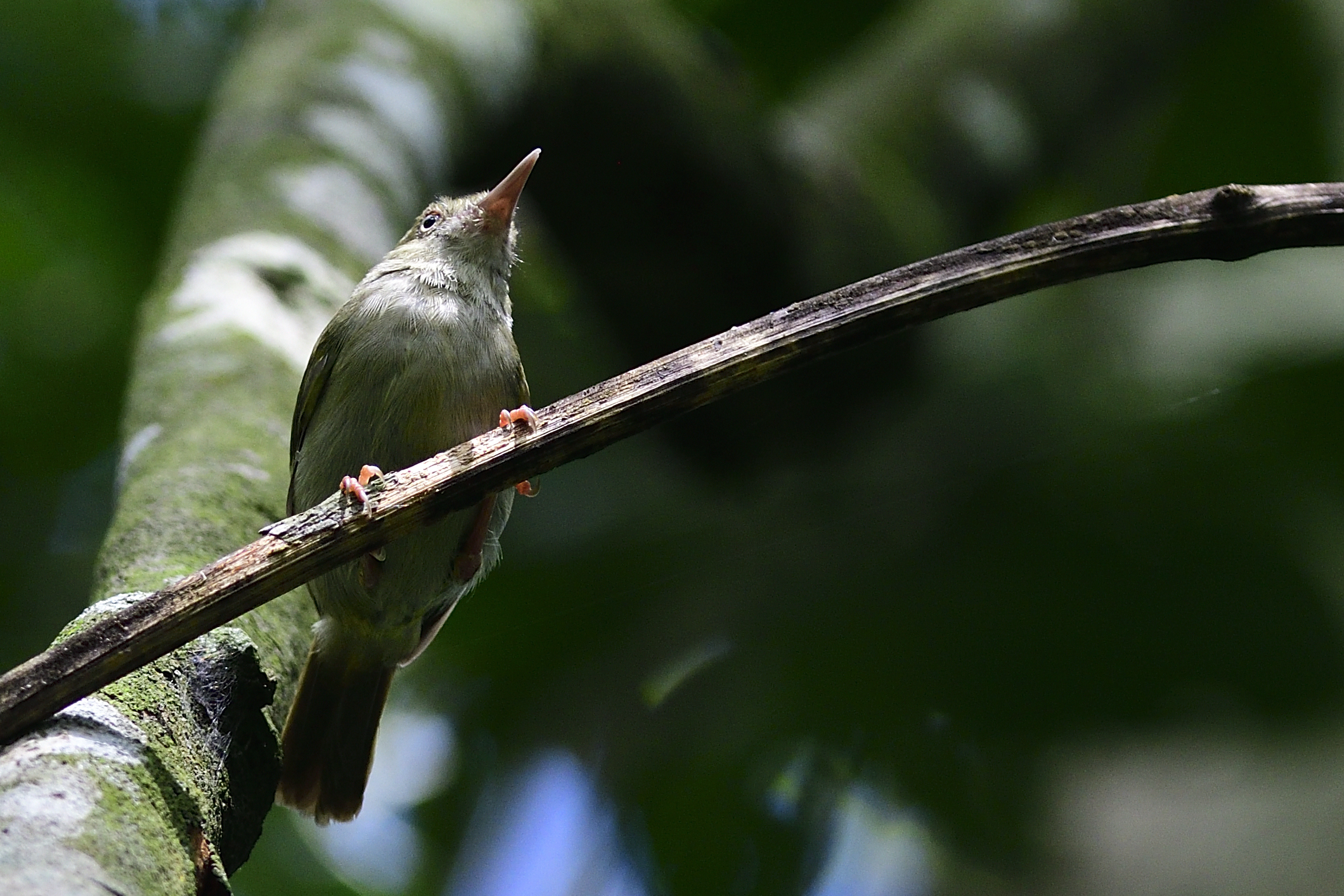
Grey Longbill, Macrospenus concolor – Lifer
Day 7, Sunday June 2, Entebbe – Mabamba Swamp – Entebbe Botanical Garden
We set off early for the famous Mamamba swamp. My google map took us direct into the swamp, but we were saved by a young man on a motorcycle. Swamp Flycatcher, Palm-nut Vulture, Sooty Chat and Greater Swamp Warbler were seen before we encountered our target bird: The Shoebill. We stayed with the Shoebill for a while before we moved on and added birds like Lesser Jacana, Malachite Kingfisher, Blue-throated Bee-eater, Slender-billed Weaver, African Pygmy Goose, Long-toed Lapwing, Lesser Moorhen, Allen´s Gallinule, Cape Wagtail (New EA bird for me), Weyns´s Weaver, African Openbill, Fan-tailed Widowbird, Brown-throated Wattle-eye and Grey-capped Warbler. It was getting hot and we decided to head for Entebbe Botanical Gardens. We walked through the gardens and had lunch down by the water. Birds recorded in the garden included: Northern Black Flycatcher, Ross´s and Great Blue Turaco, Orange Weaver, Yellow-billed Kite, Water Thick-knee, Meyer´s Parrot and Shikra. We went back to Judith´s place and once again enjoyed her home cooked meal.
Some pictures from Day 7:
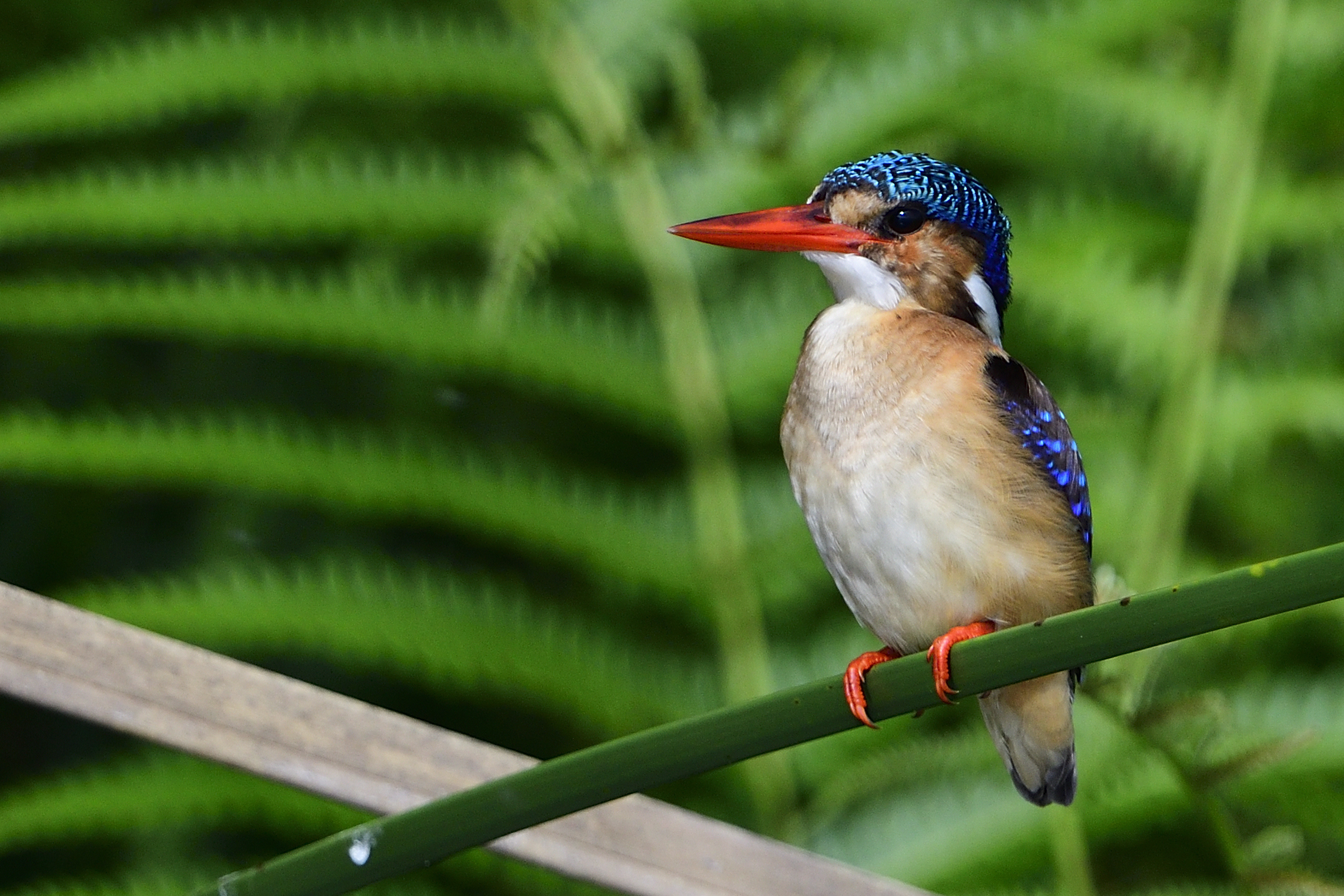
Malachite Kingfisher, Alcedo christata
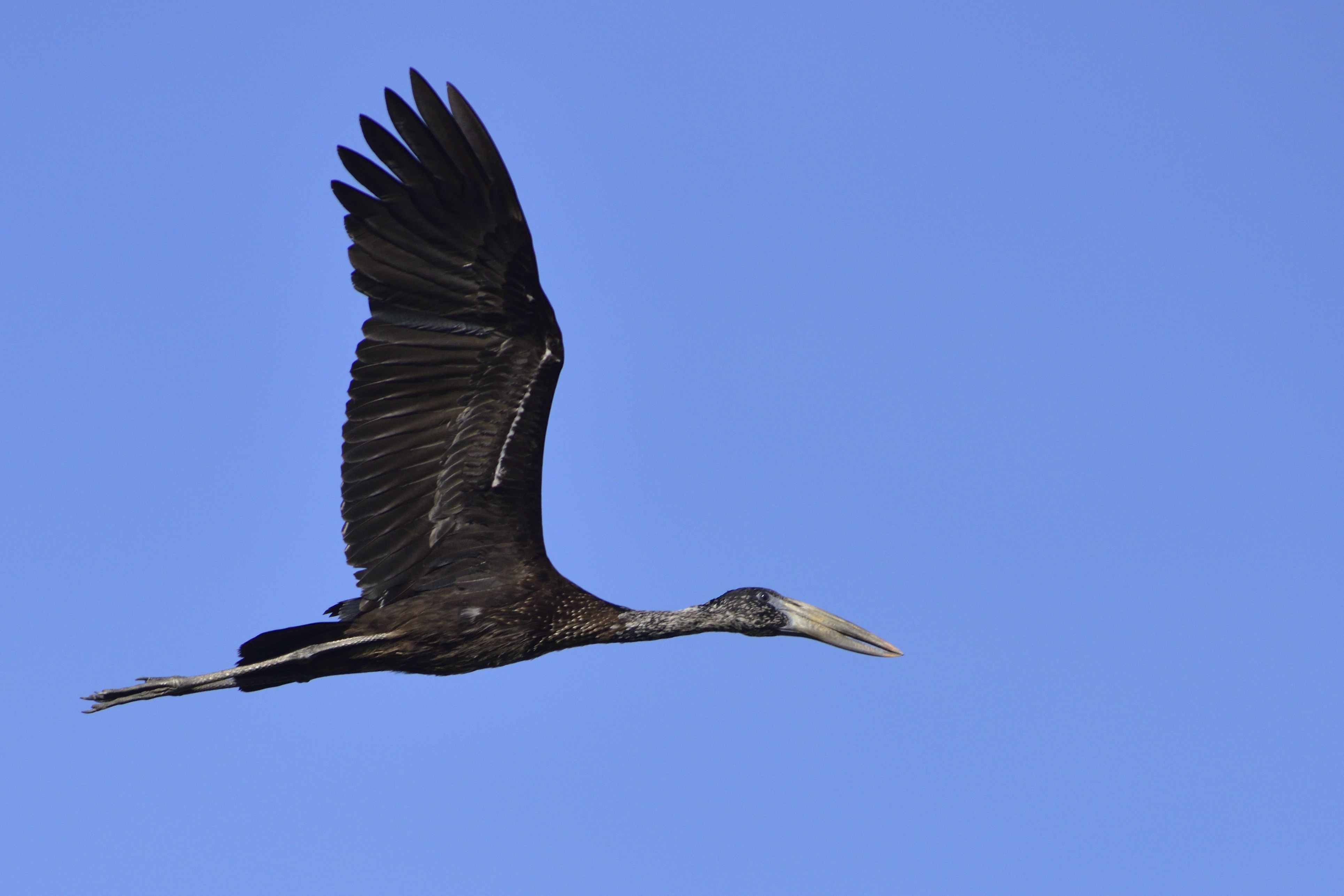
African Openbill, Anastomus lamelligerus
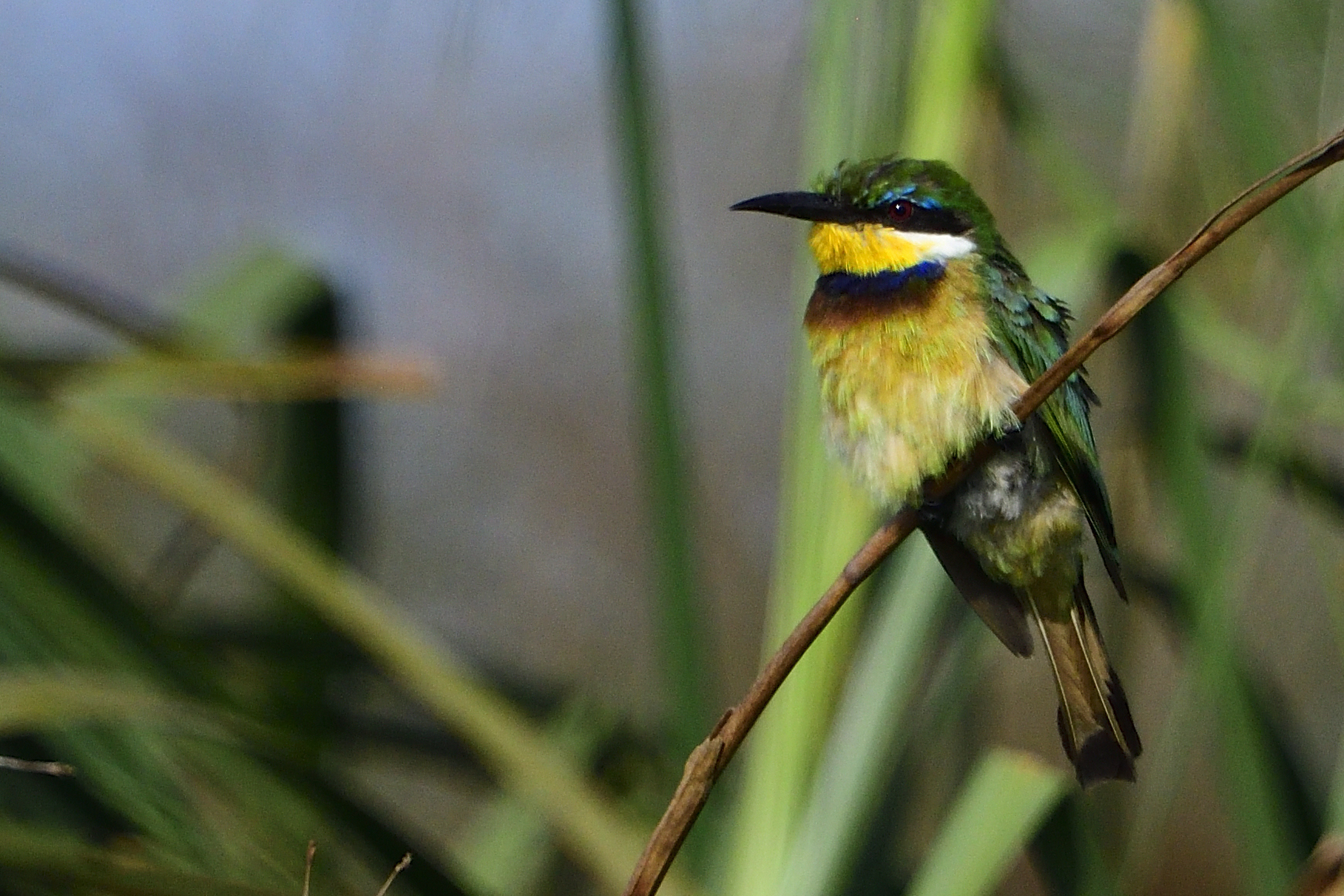
Blue-breasted Bee-eater, Merops variegatus
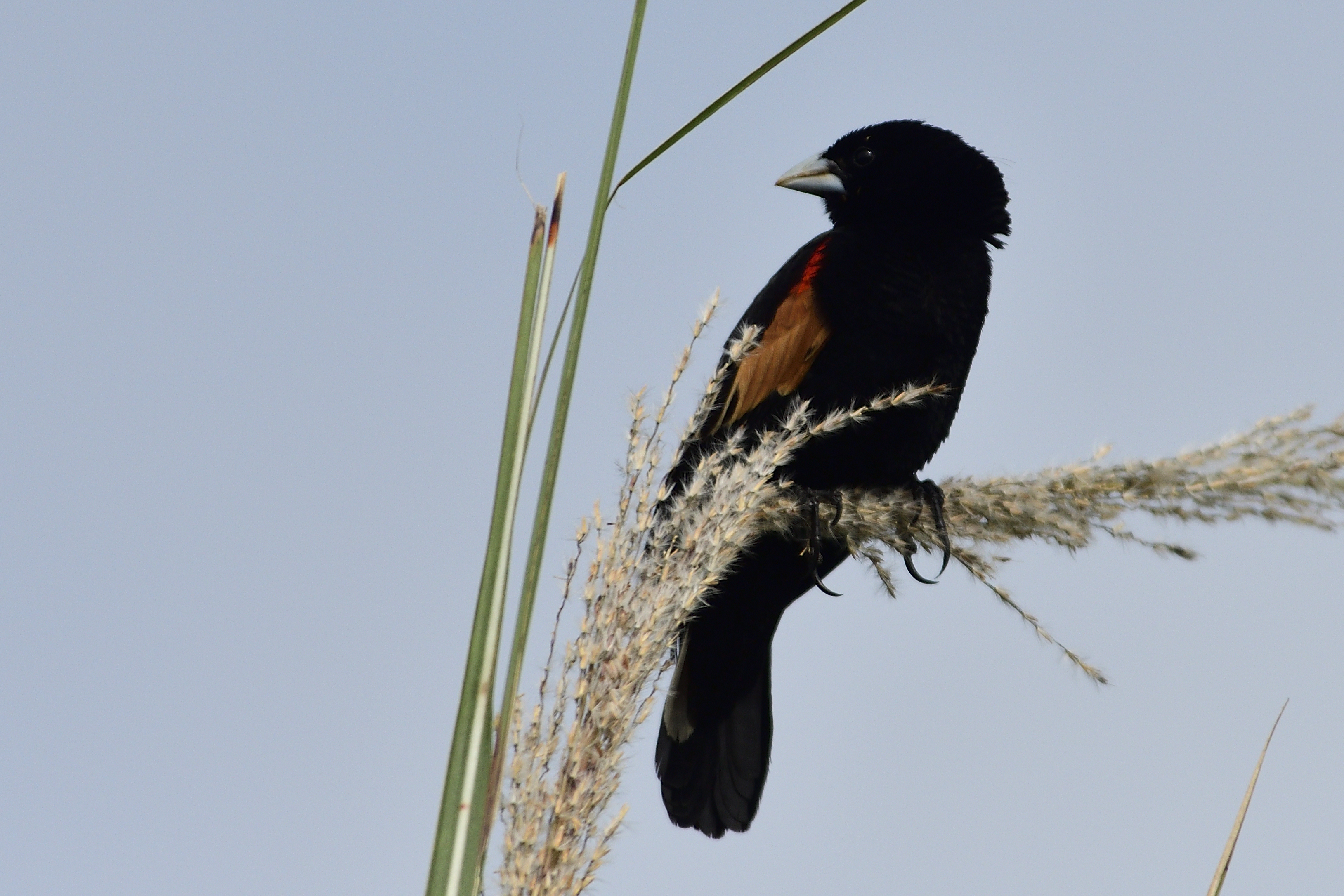
Fan-tailed Widowbird, Euplectes axillaris
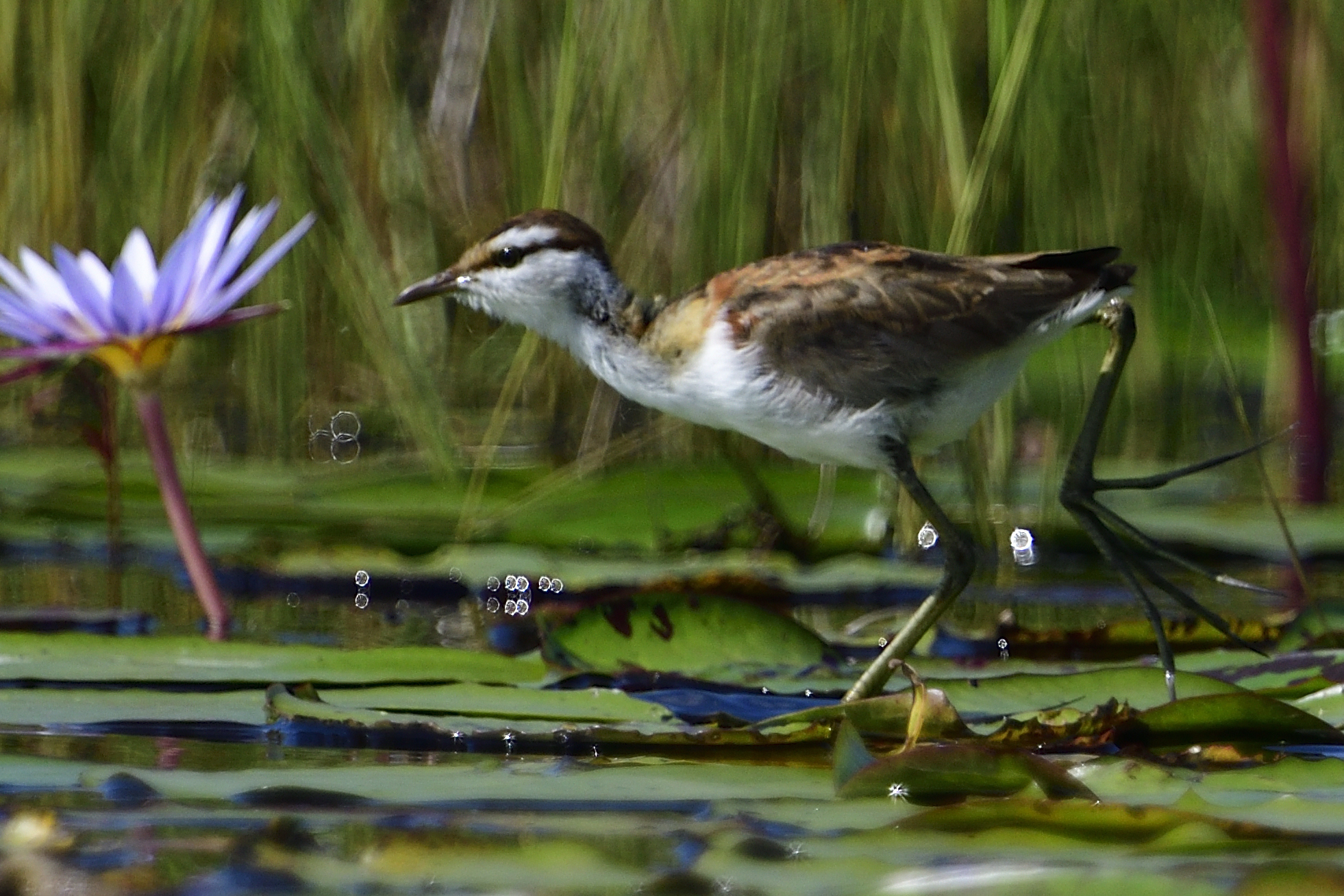
Lesser Jacana, Microparra capensis
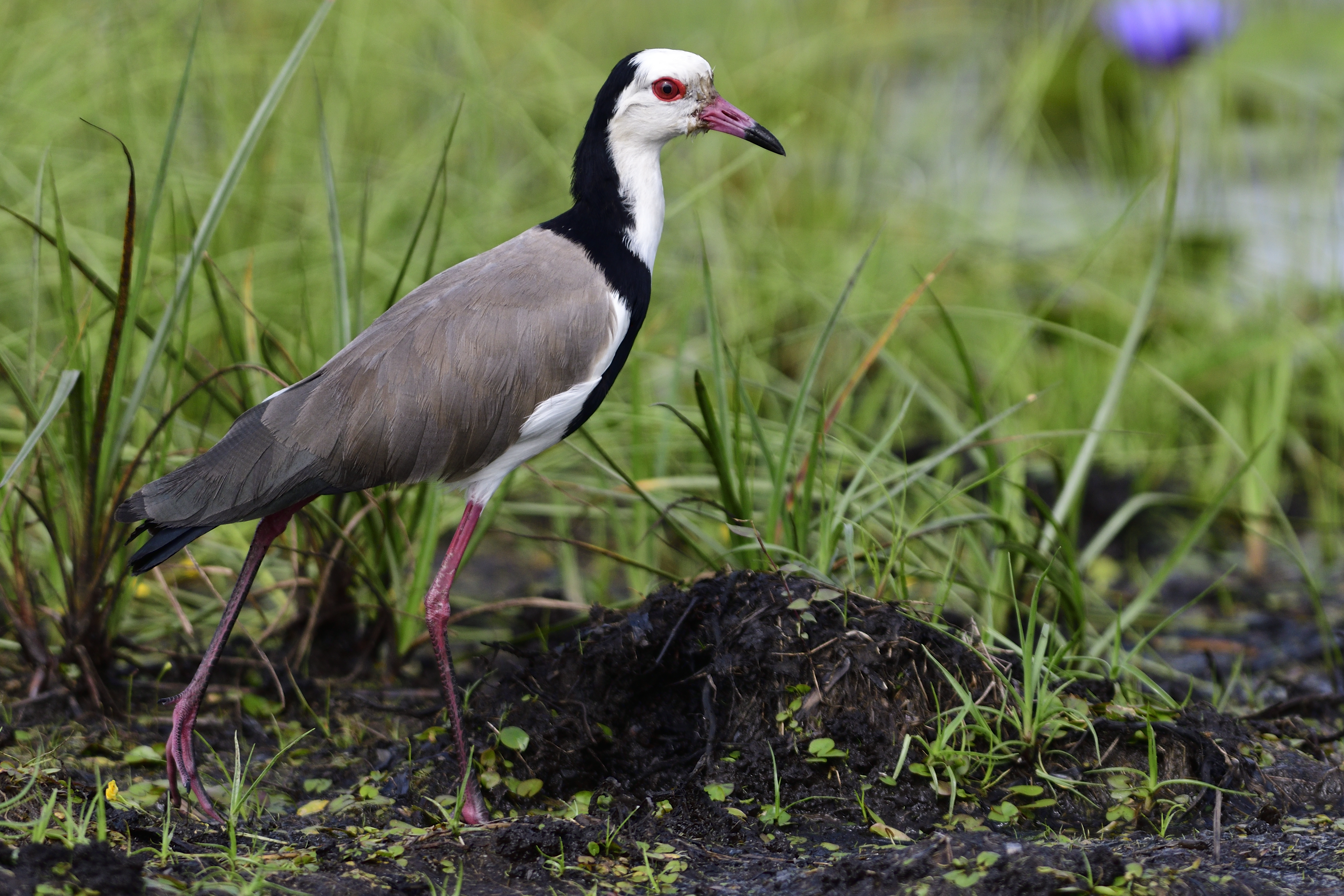
Long-toed Lapwing, Vanellus crassirostris
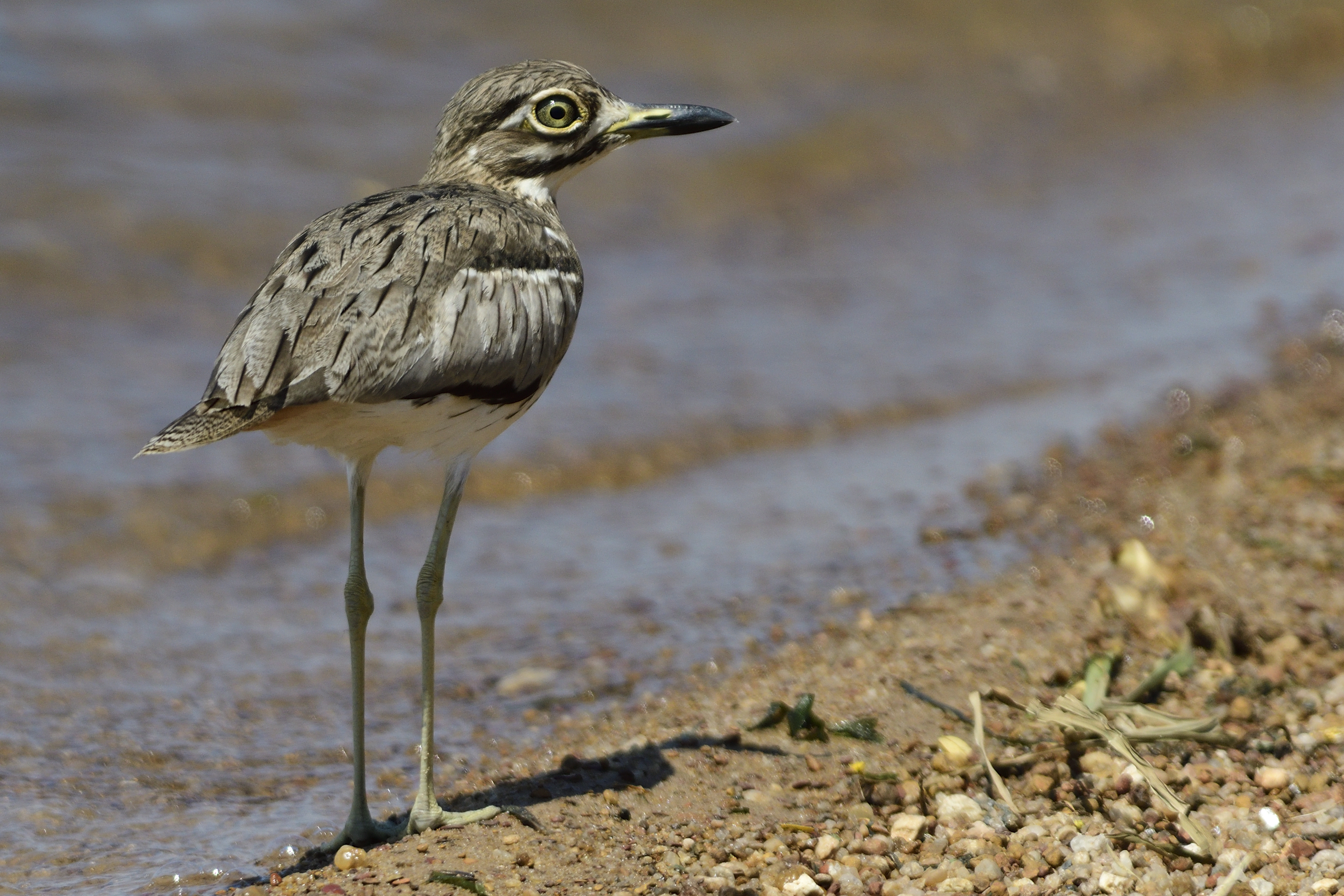
Water Thick-knee, Burhinus vermiculatus
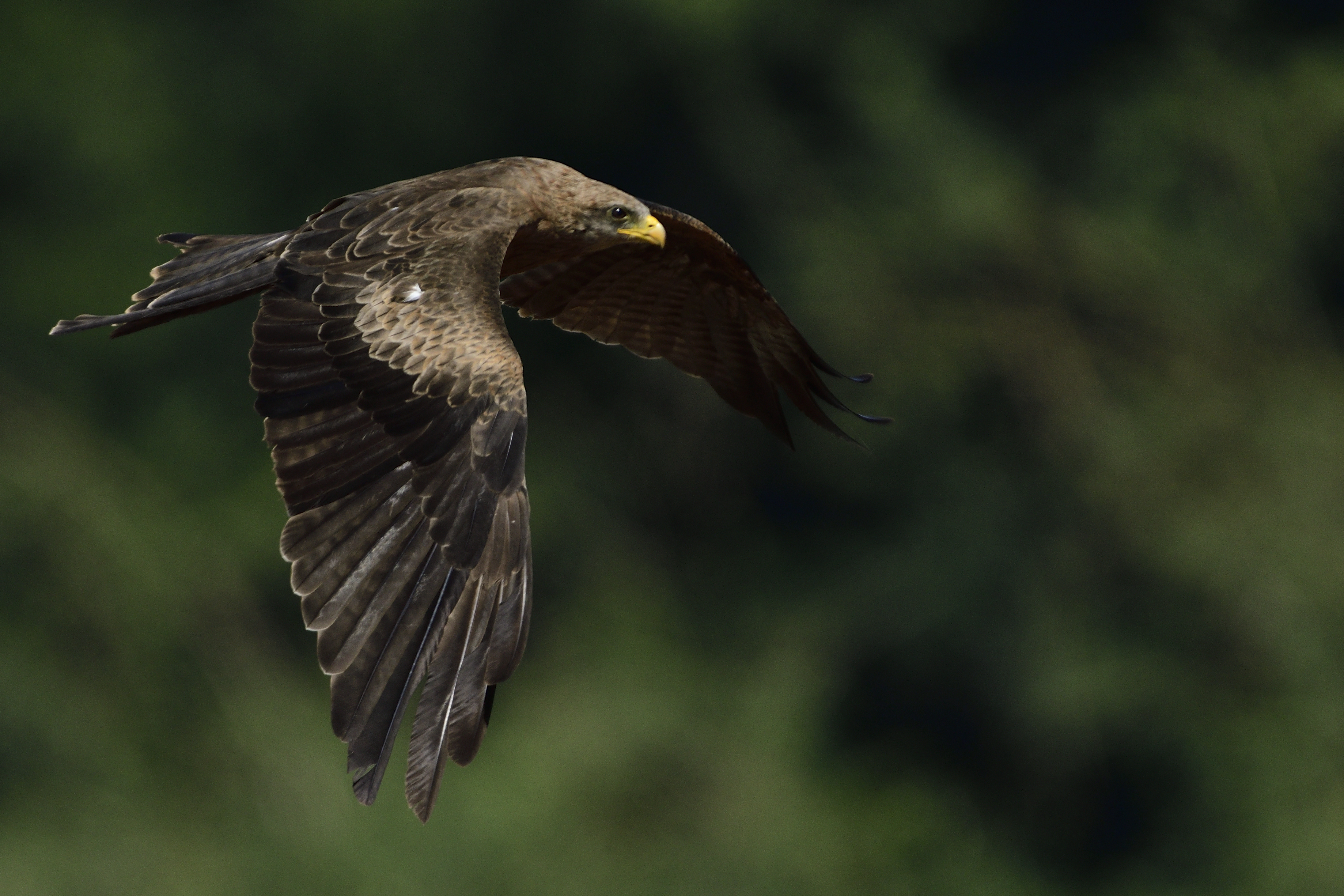
Yellow-billed Kite, Milvus aegyptus
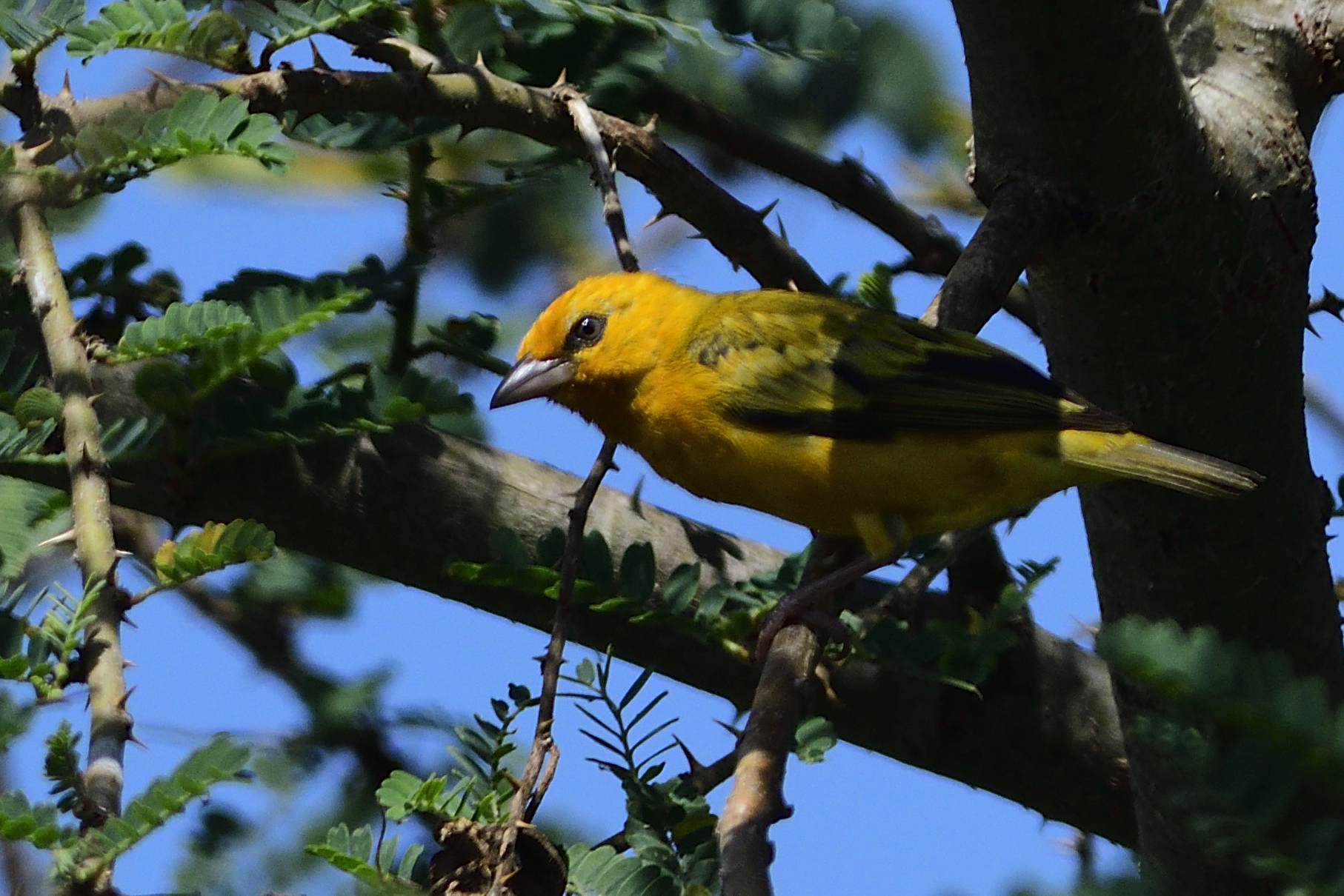
Orange Weaver, Ploceus aurantius – Lifer
Day 8, Monday, June 3, Entebbe – Mpanga – Entebbe
We had decided to go to Mpanga forest just outside Entebbe this morning. We arrived a little before our guide Prossy, but she soon caught up with us. We started in the forest, but it was very very quiet. We saw briefly the Yellow-throated Tinkerbird, White-throated Greenbul, Fire-crested Alethe and Western Nicator and heard the White-spotted Flufftail. Prossy suggested that we went out of the forest and birded some Shambas instead. That turned out to be a very good idea. In the Shamba, Adam got a lifer in the form of a Black-throated Canary, and we continued to encounter good birds there like White-shouldered Black Tit, Magpie Mannikin, Red-headed Lovebird, Purple-headed Starling, Yellow-spotted Barbet, African Thrush, Village Weaver and Speckled Tinkerbird. We finished up in Mpanga and said good bye to Prossy. She was a very knowledgable lady about her local forest patch. We drove back to Judith and birded a little in her garden and beyond. We had an overflying African hobby and also got Blue-headed Coucal, and Slender-billed Weaver. Judith again served us a delicious meal.
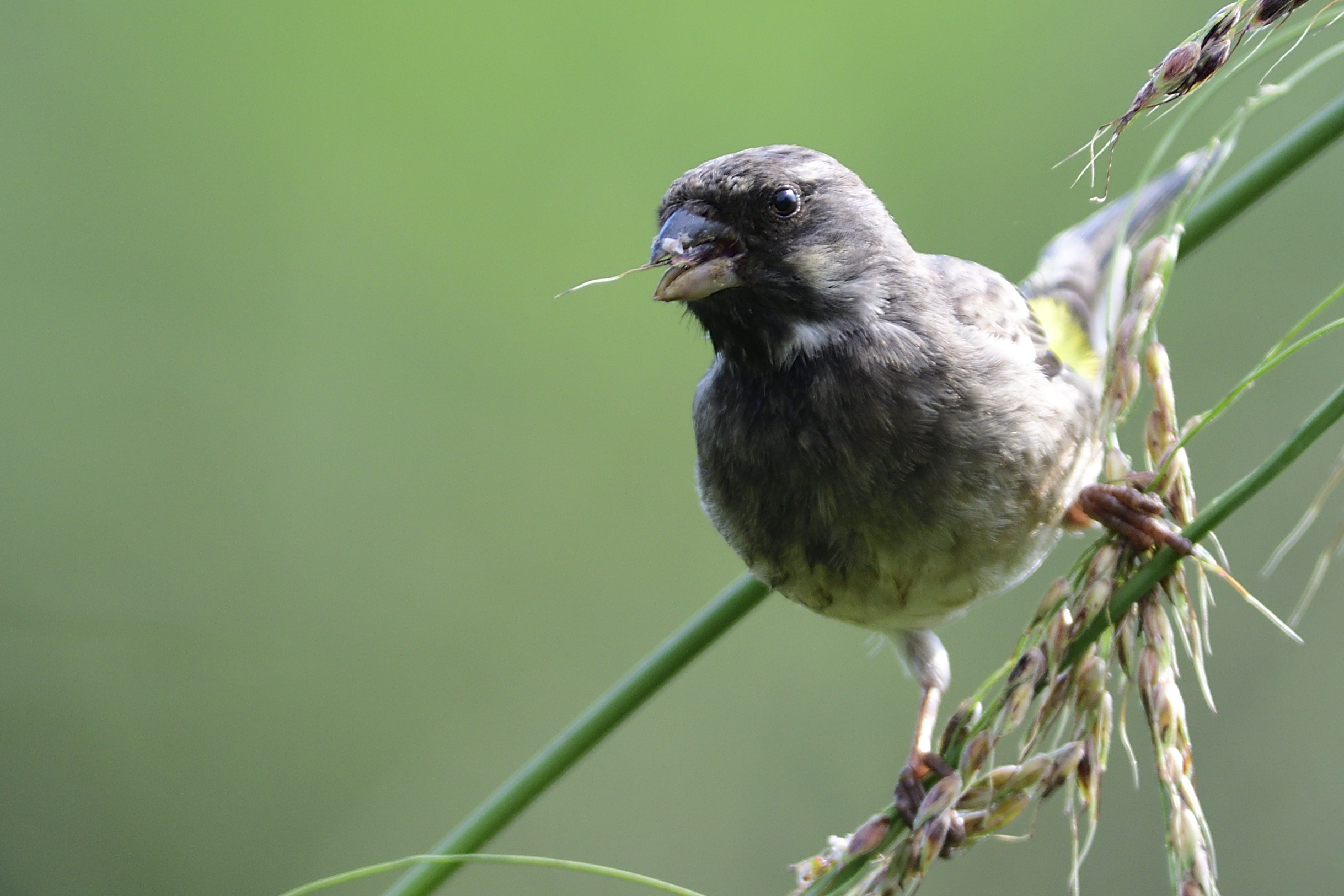
Black-throated Canary, Chritagra atrogularis
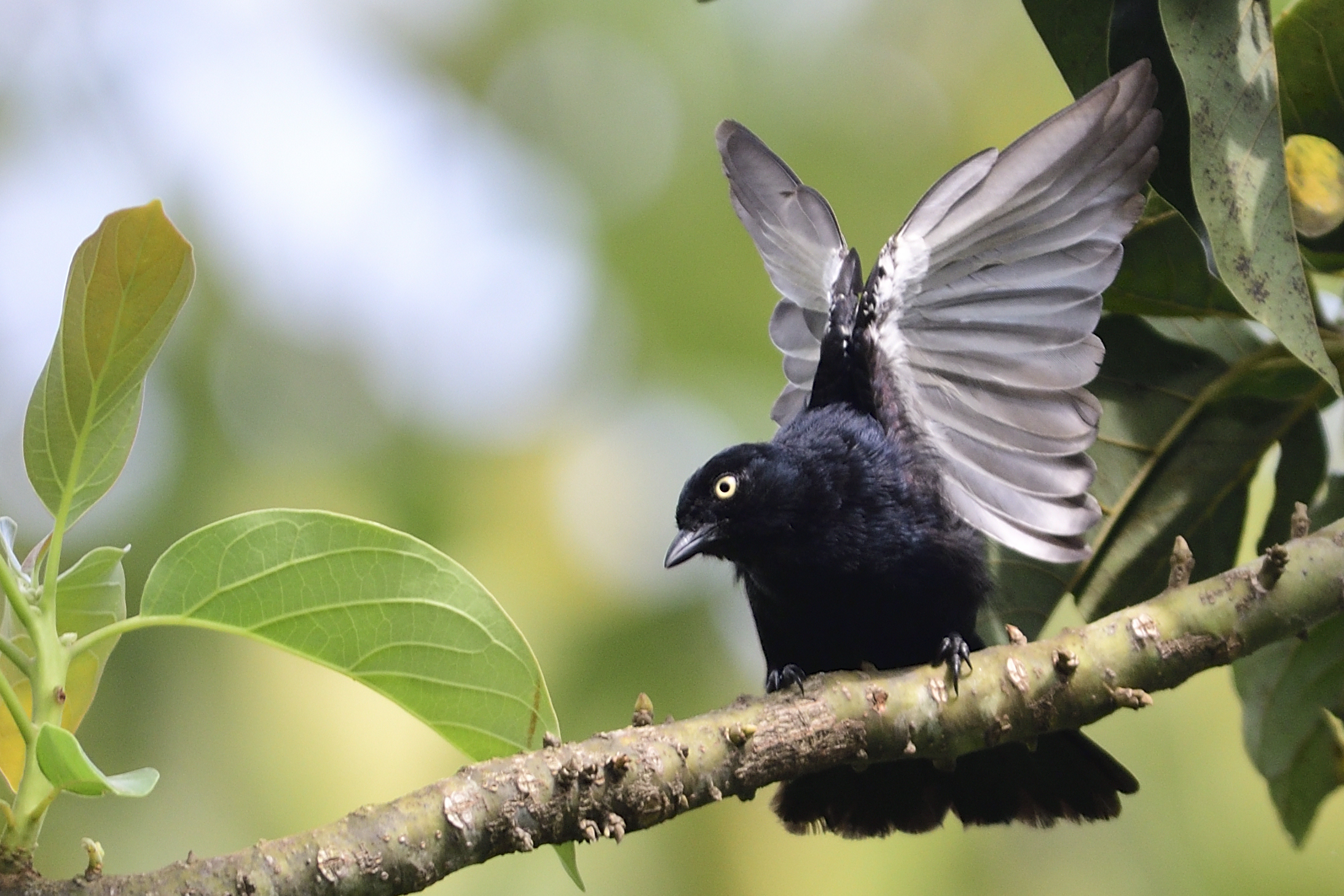
White-winged Black Tit, Parus leucomelas – Lifer
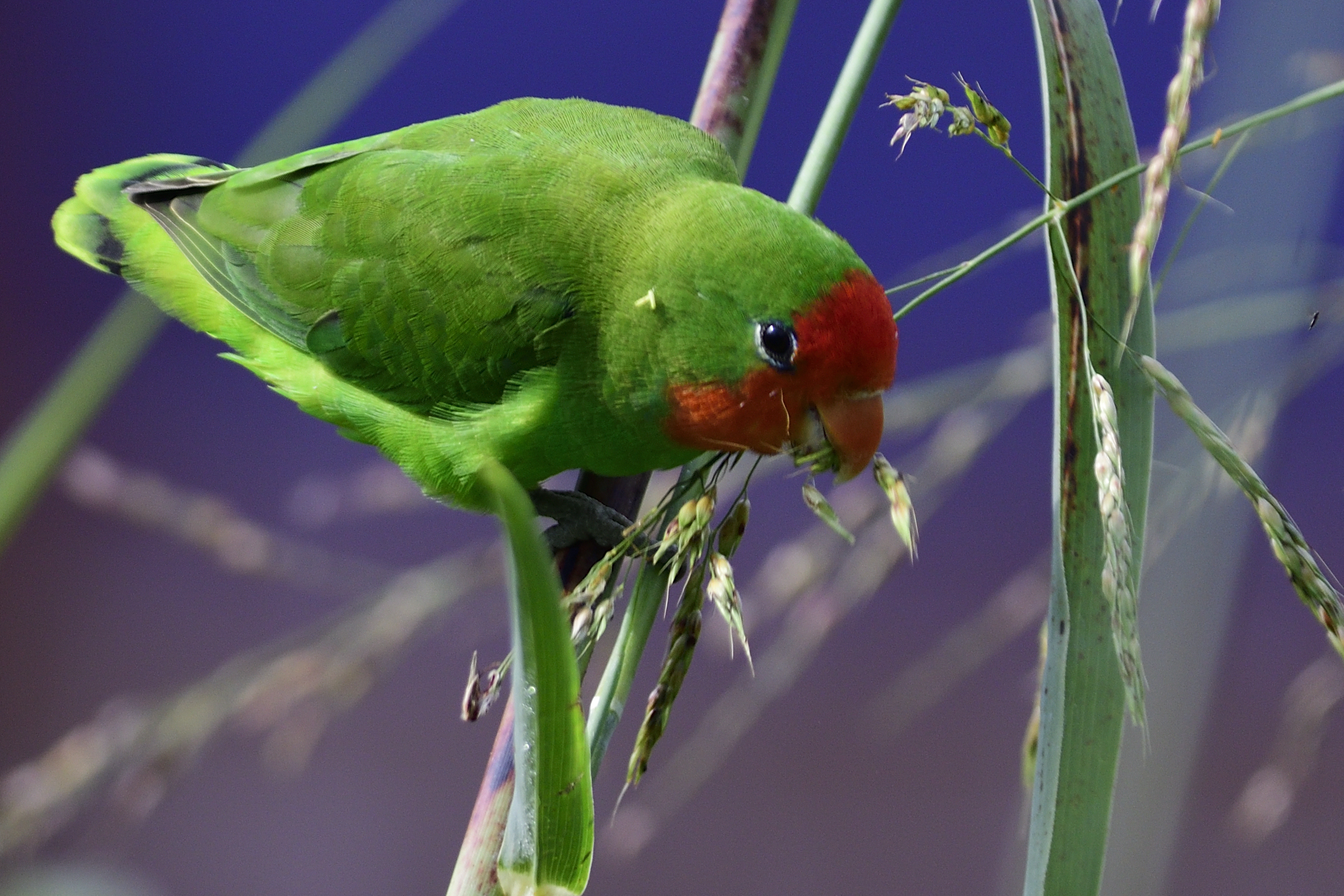
Red-headed Lovebird, Agapornis pullarius
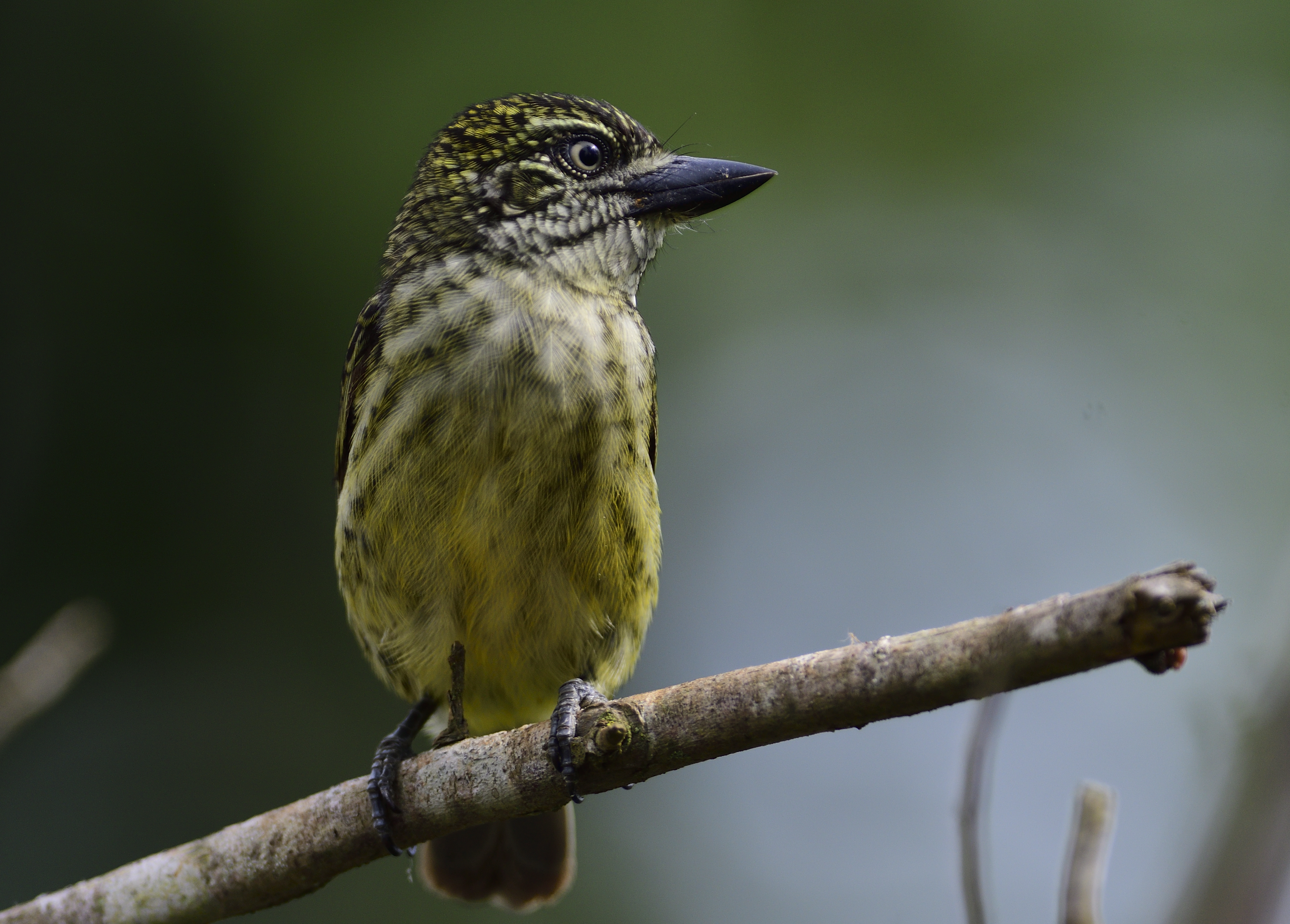
Speckled Tinkerbird- Pogoniulus scolopaceus
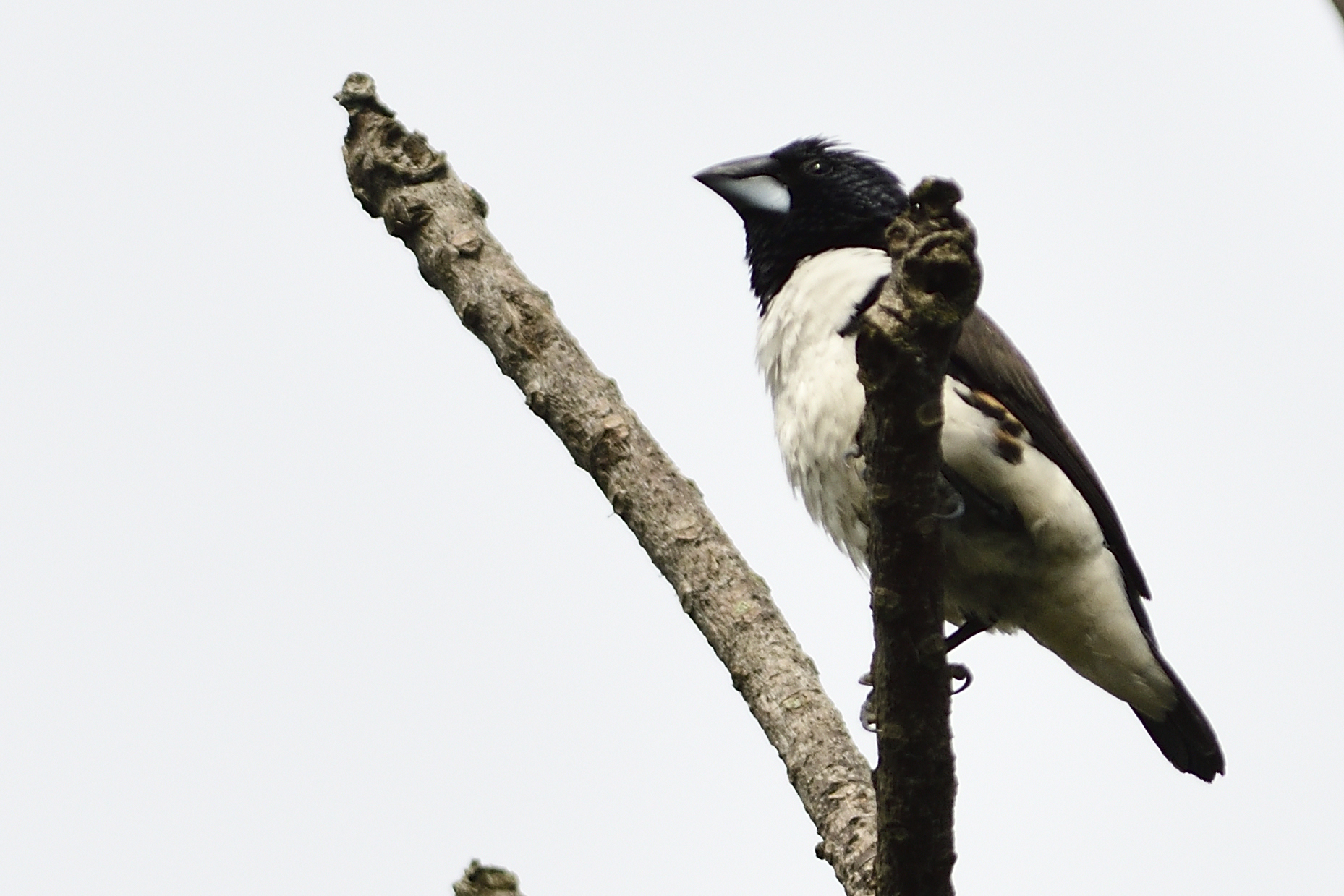
Magpie Mannikin – Spermestes fringilloides
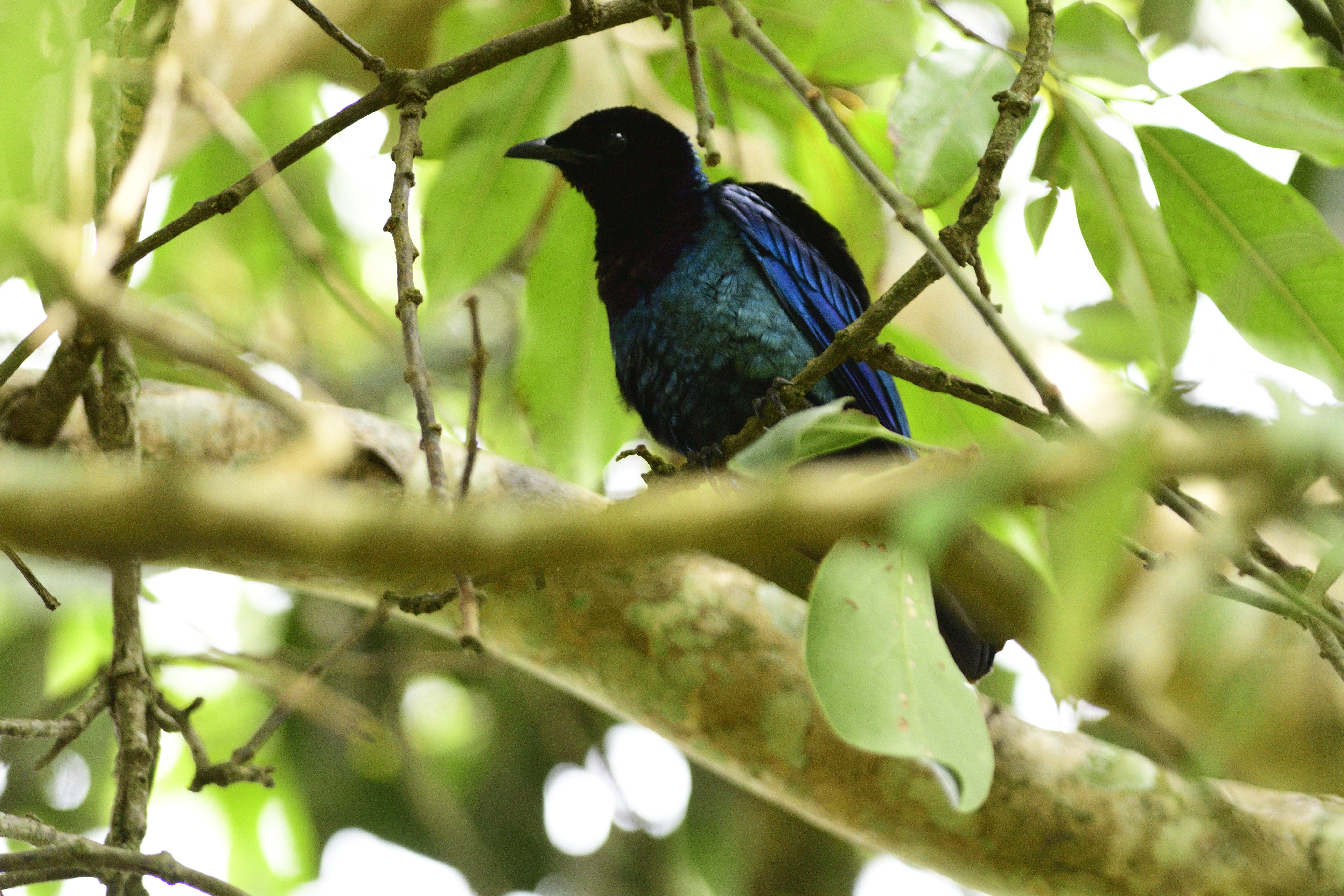
Purple-headed Starling, Hylopsar purpureiceps – Lifer
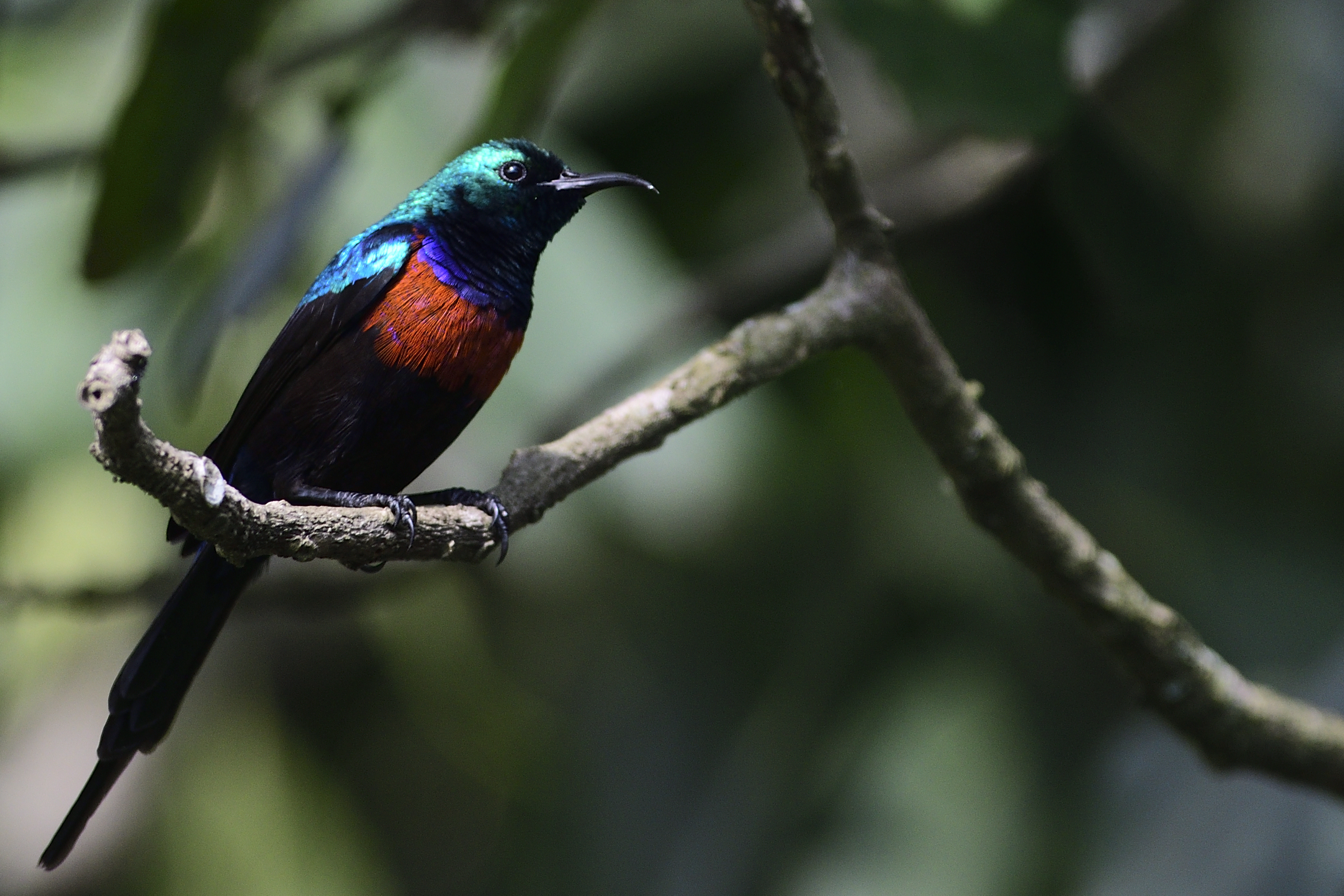
Red-chested Sunbird, Cinnyris erythrocercus – Endemic to NE Africa
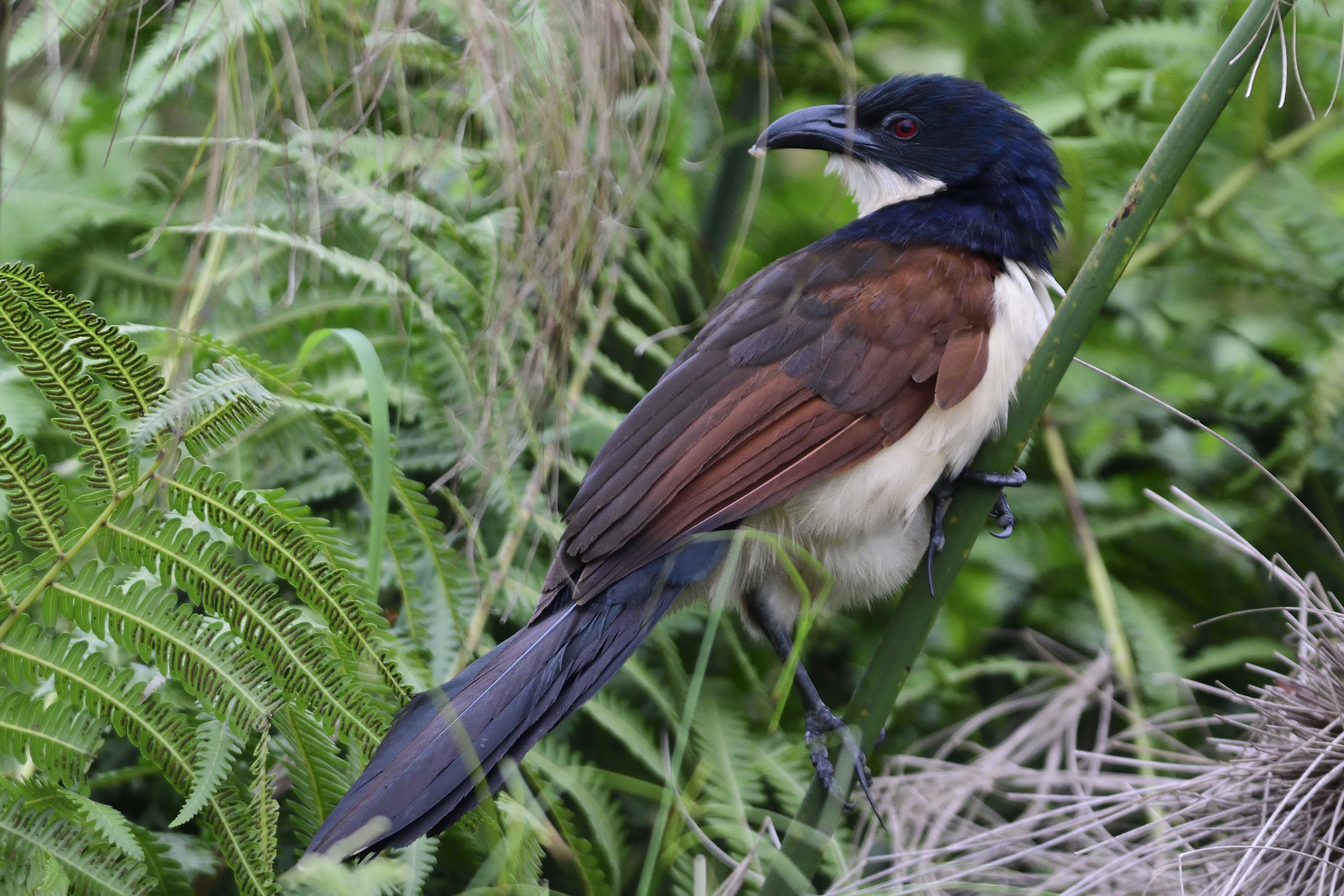
Blue-headed Coucal, Centropus monachus
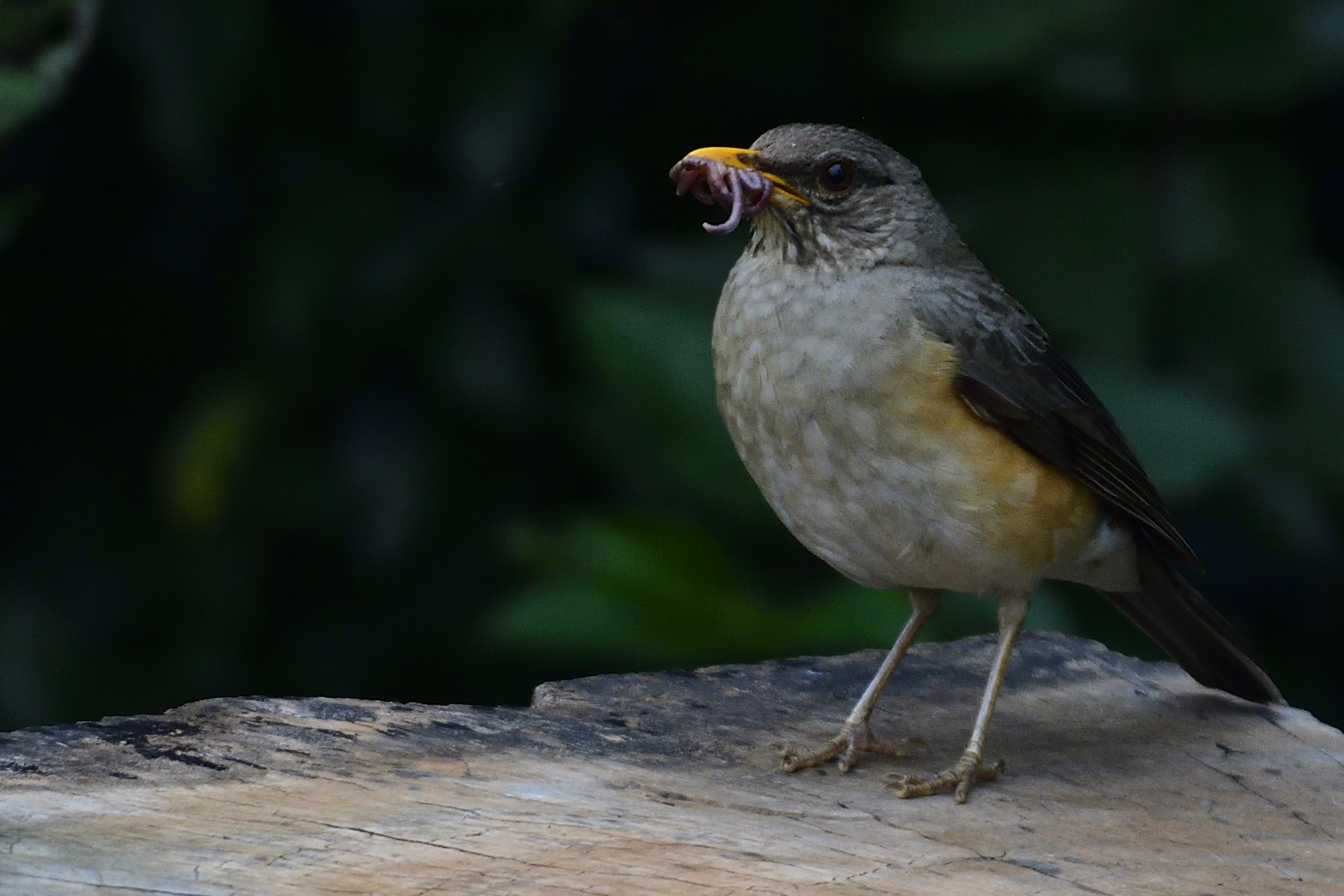
African Thrush, Turdus pelios
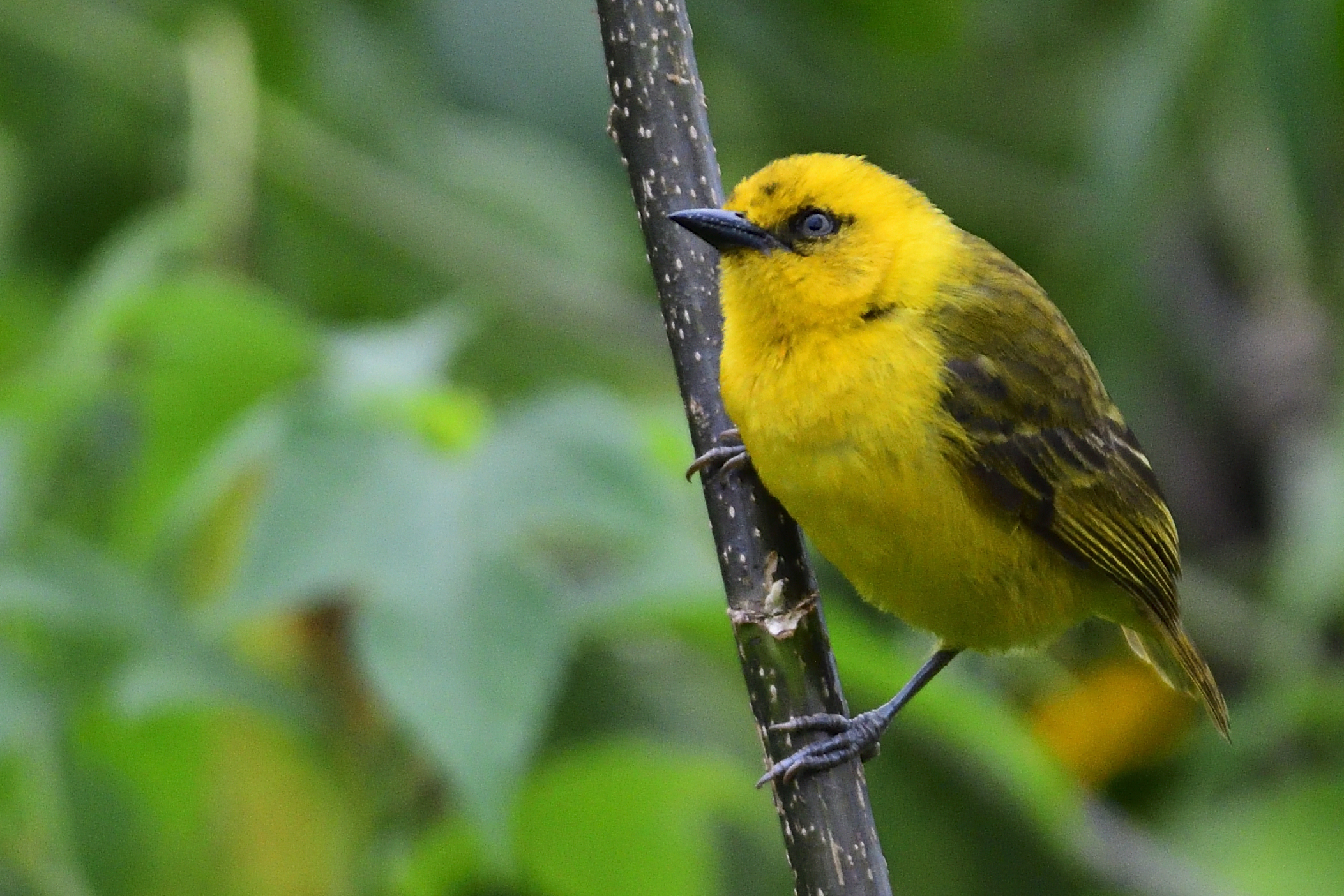
Slender-billed Weaver (female) – Ploceus pelzelni
Day 9, Tuesday, June 4, Entebbe to Murchison´s Fall.
We had a long drive today all the way to Muchison´s fall. We stopped on the way to pick up Sherry a friend of Judith. We did a little bit of birding around the campsite, but did not find anything of interest.
Day 10, Wednesday, June 5, Full day in Murchison´s Fall
We started early in order to cross the river. While waiting for the ferry, I observed two male Black-necked Weavers in an intense combat. After crossing the river, we had several sightings of Abyssinian Ground-Hornbill, followed by both Martial and Tawny Eagles. Other interesting sightings were Northern Carmine Bee-eaters, Black-bellied Bustard, Grey-backed Fiscal, Grey Kestrel, African Wattled and Black-headed Lapwings, Piapiac, 3 sightings of Shoebill, Rüppel´s Starling, Speckle-fronted Weaver and Black-billed Wood-Dove. We returned with the last ferry and went back to camp.
Some Pictures from Day 10:
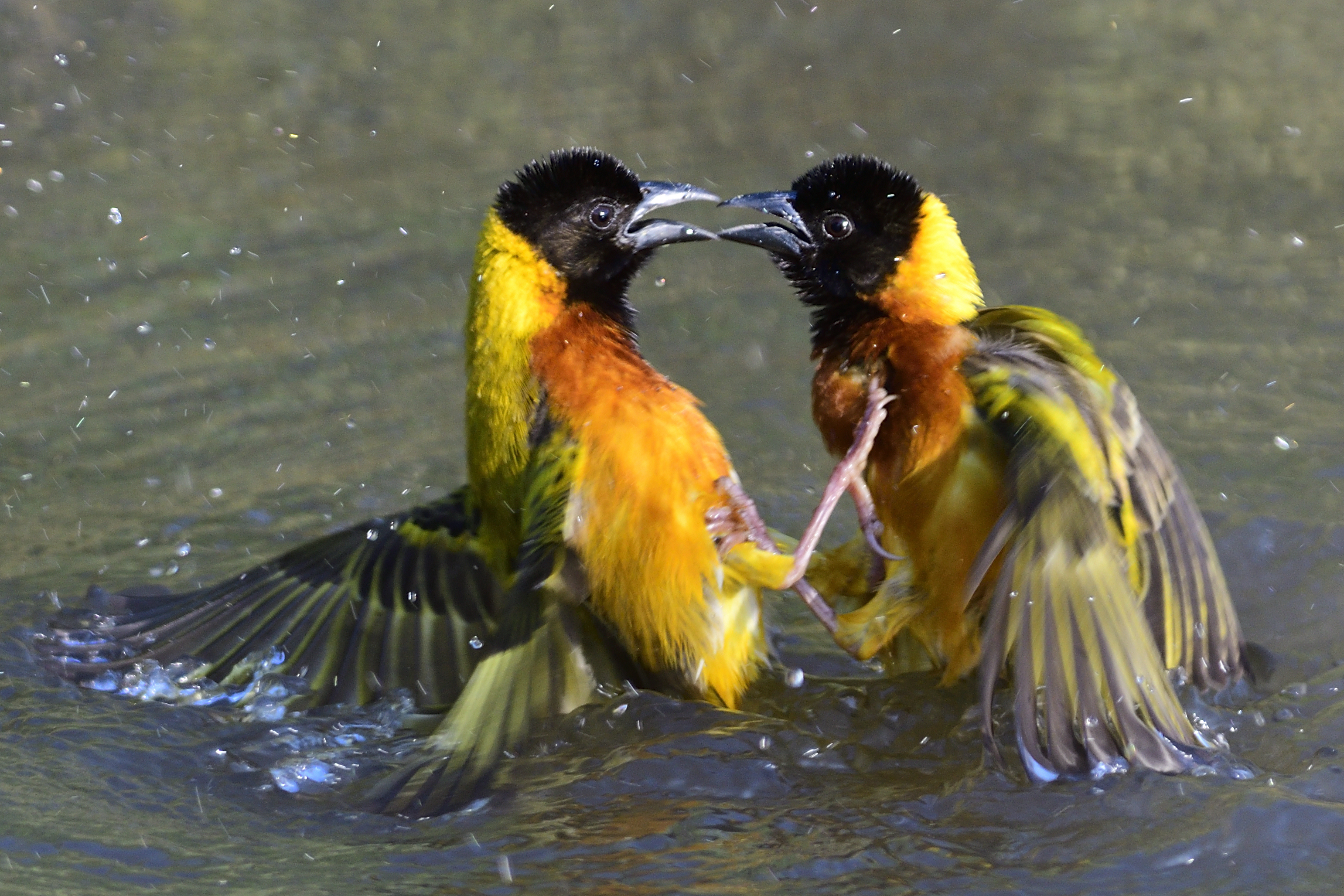
Black-headed (Yellow-backed) Weaver, Ploceus melanocephalus
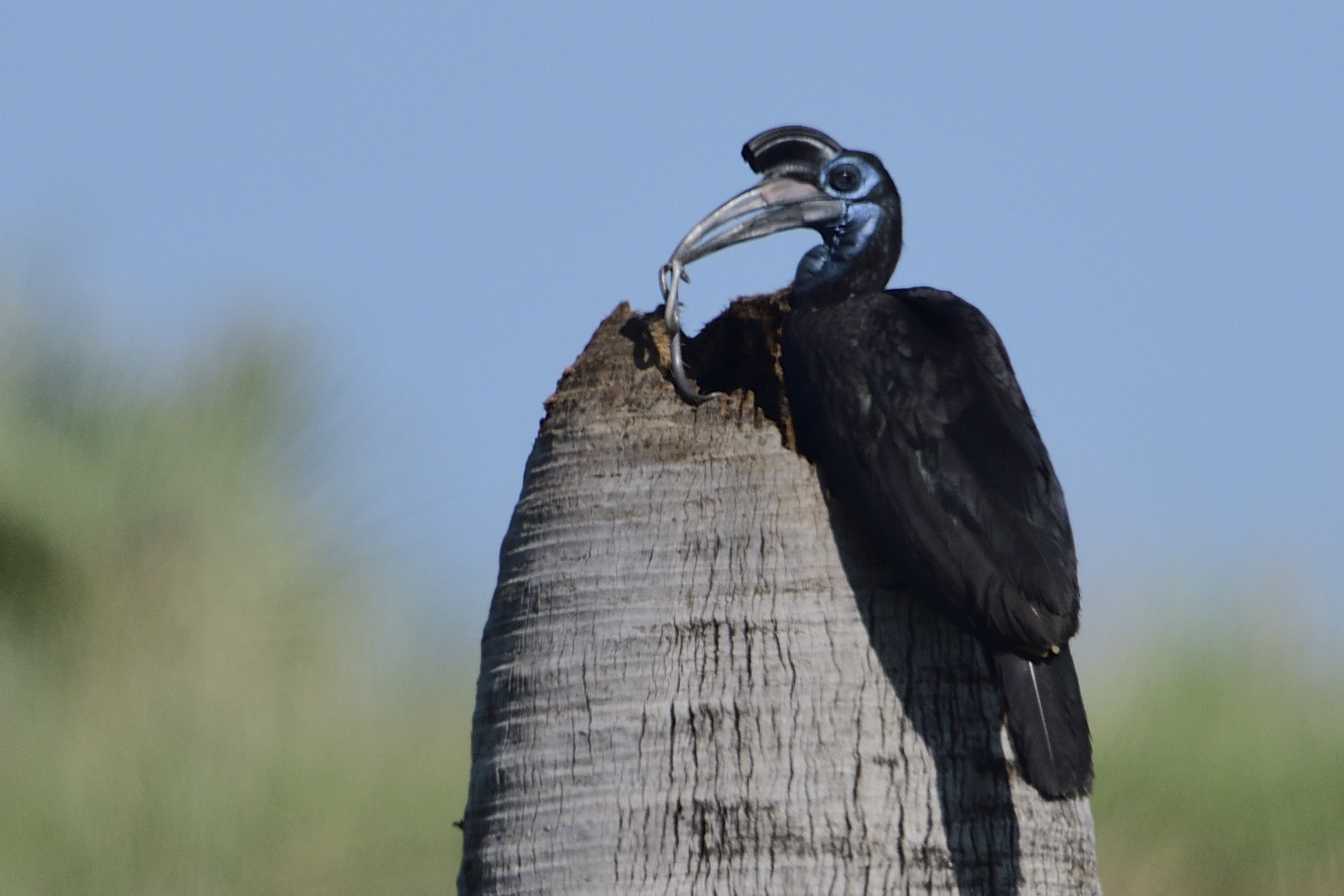
Abyssinian Ground-Hornbill, Bocorvus abyssinicus – Lifer
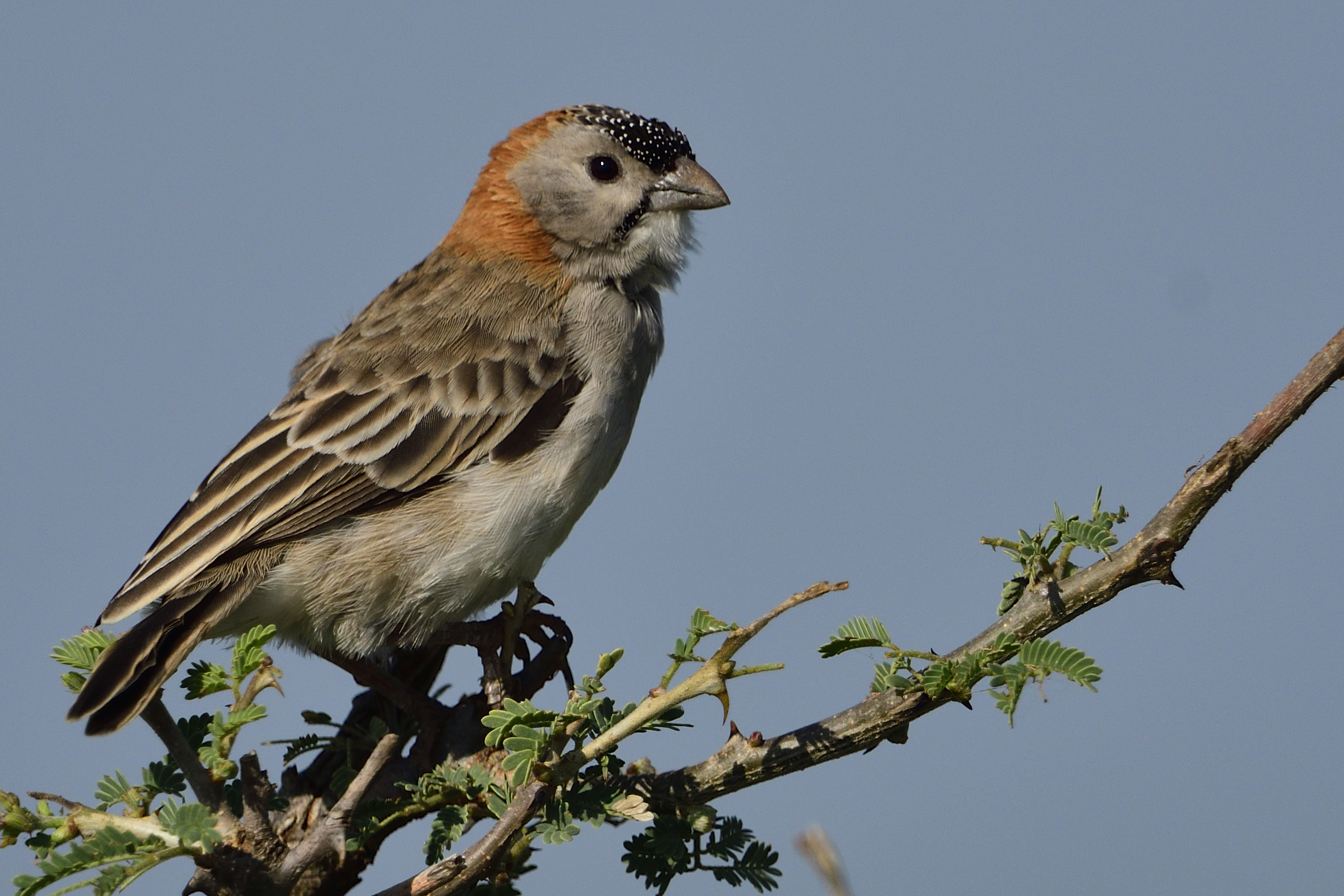
Speckle-fronted Weaver, Sporopipes frontalis
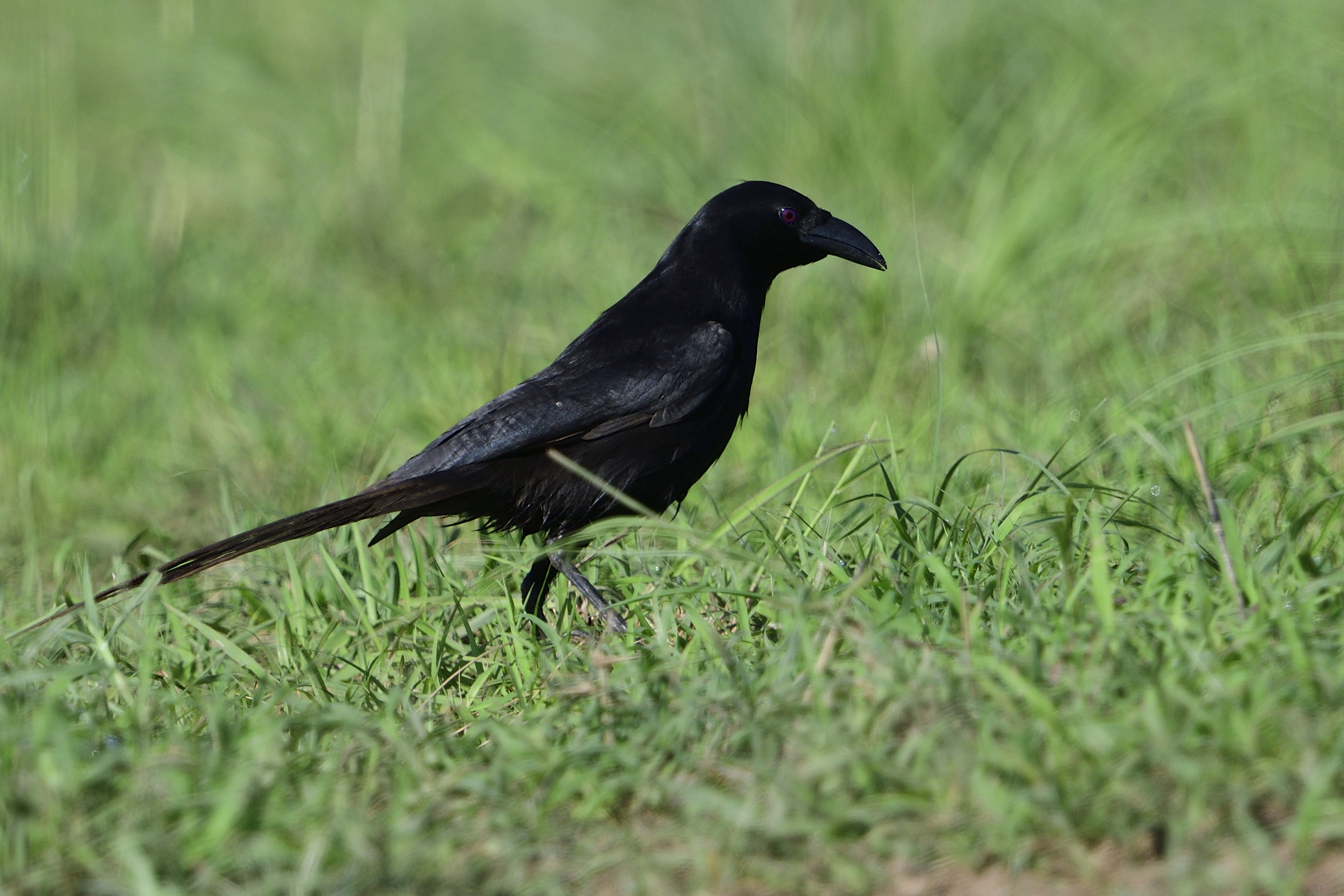
Piapiac, Ptilostomus afer – Lifer
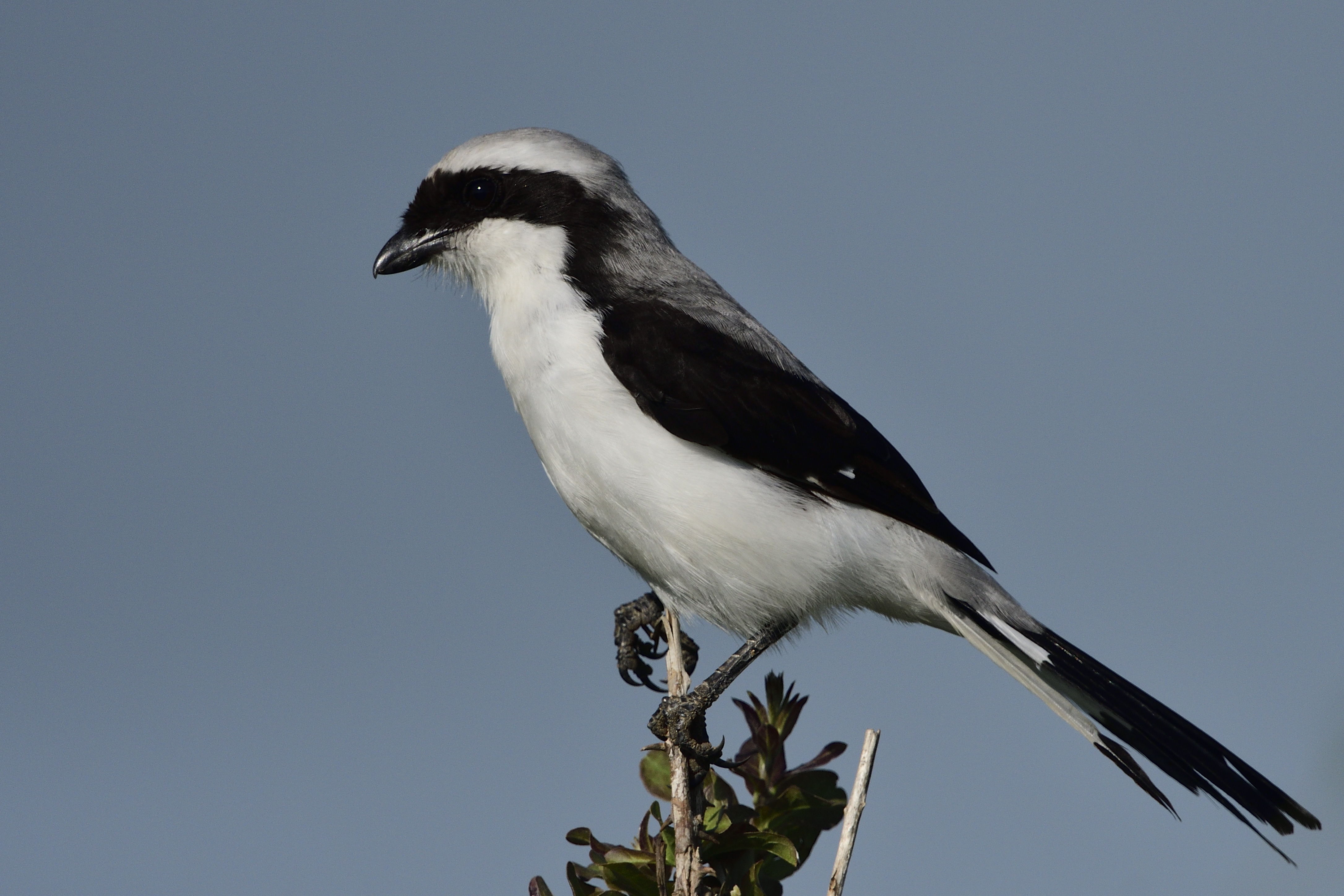
Grey-backed Fiscal, Lanius excubitroides
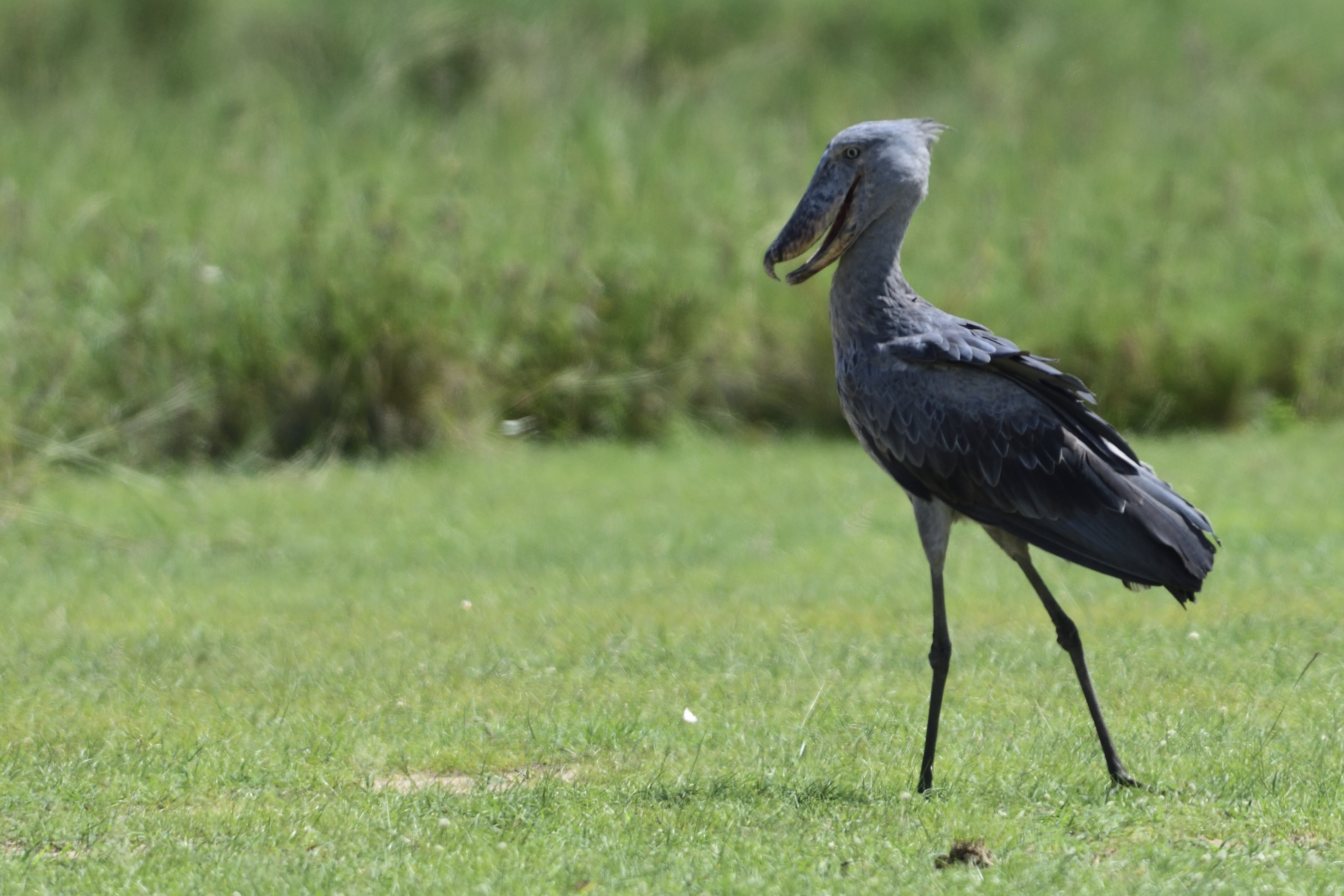
Shoebill, Balaeniceps rex – Lifer
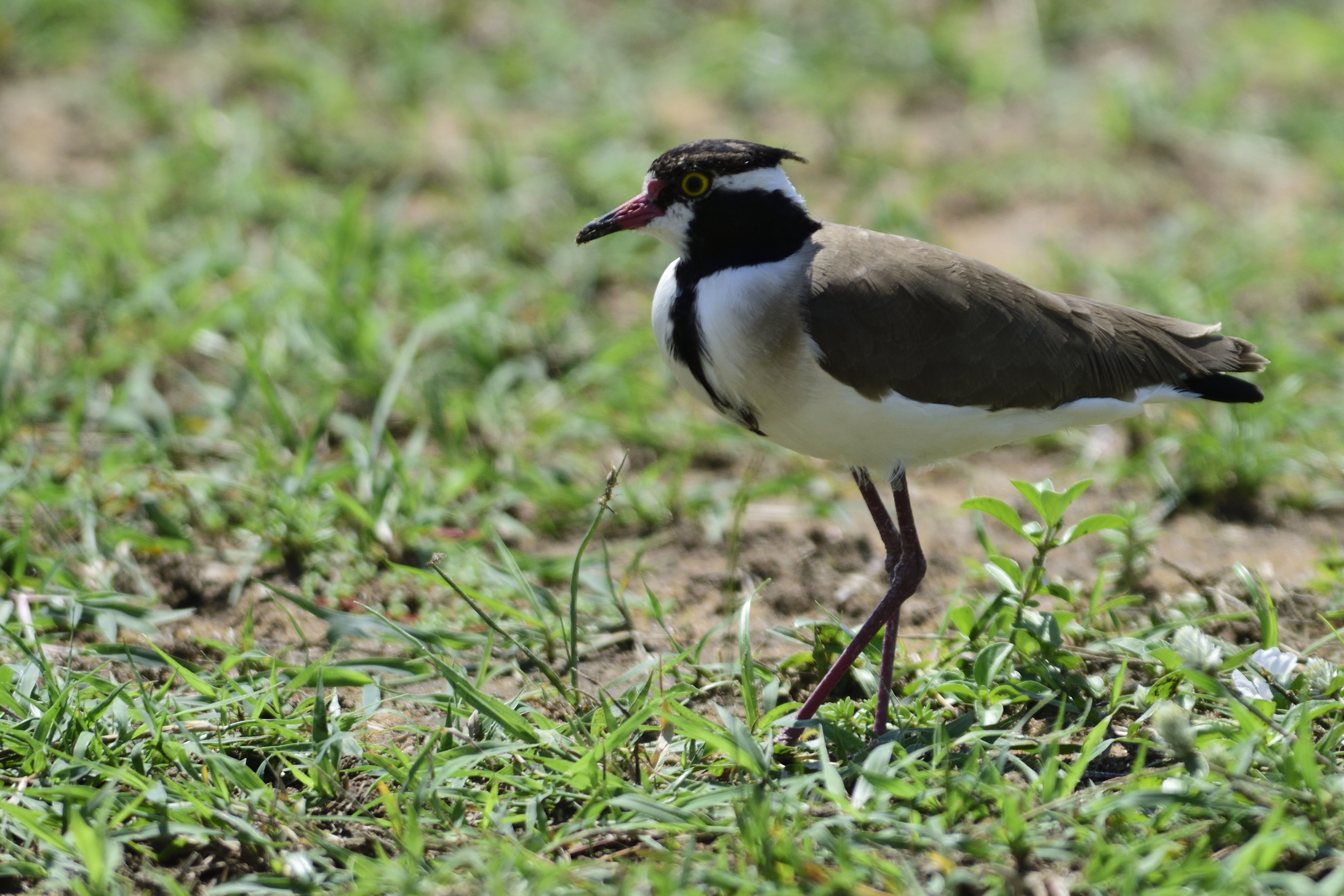
Black-headed Lapwing, Vanellus tectus
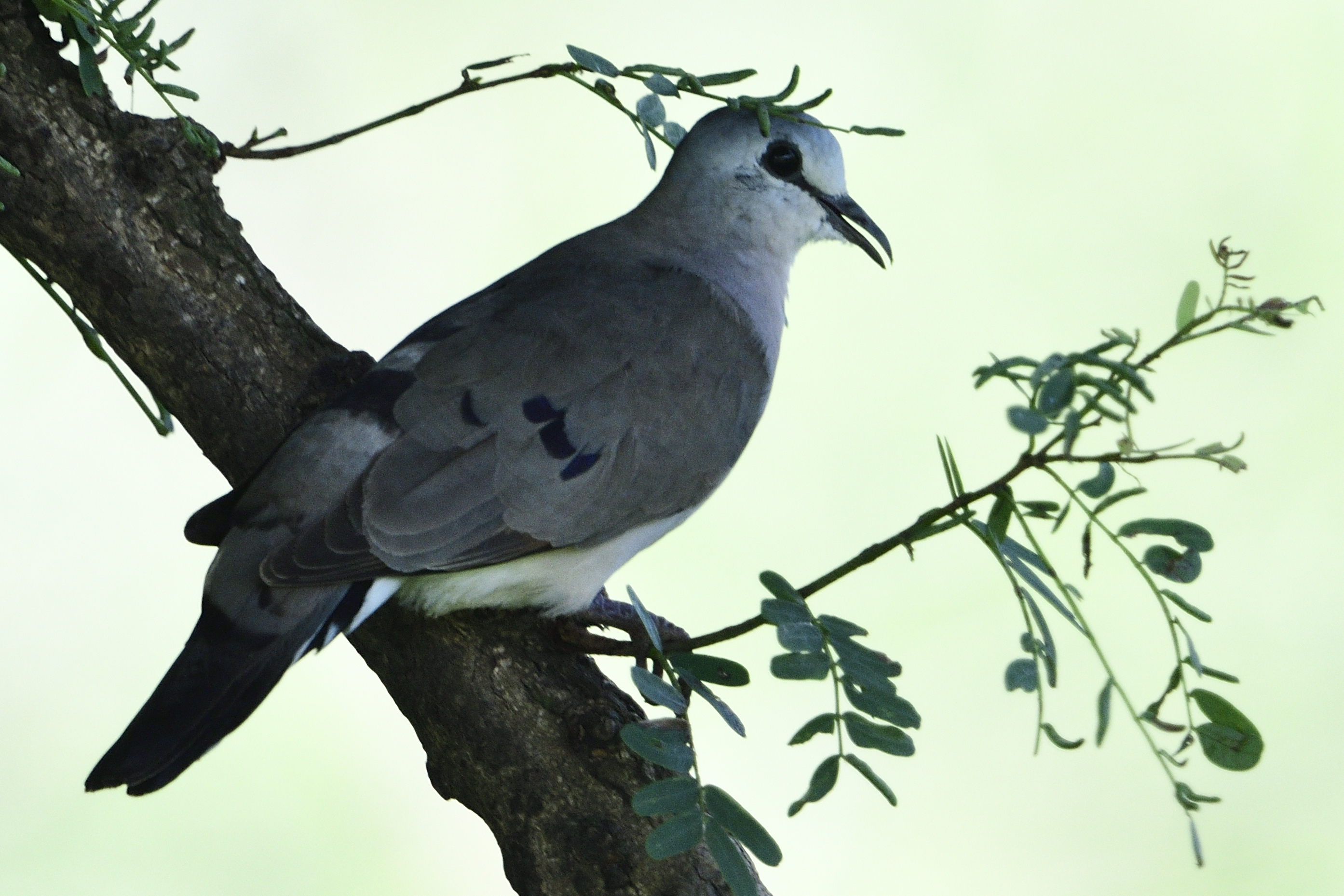
Black-billed Wood-Dove, Turtur abyssinicus – Lifer
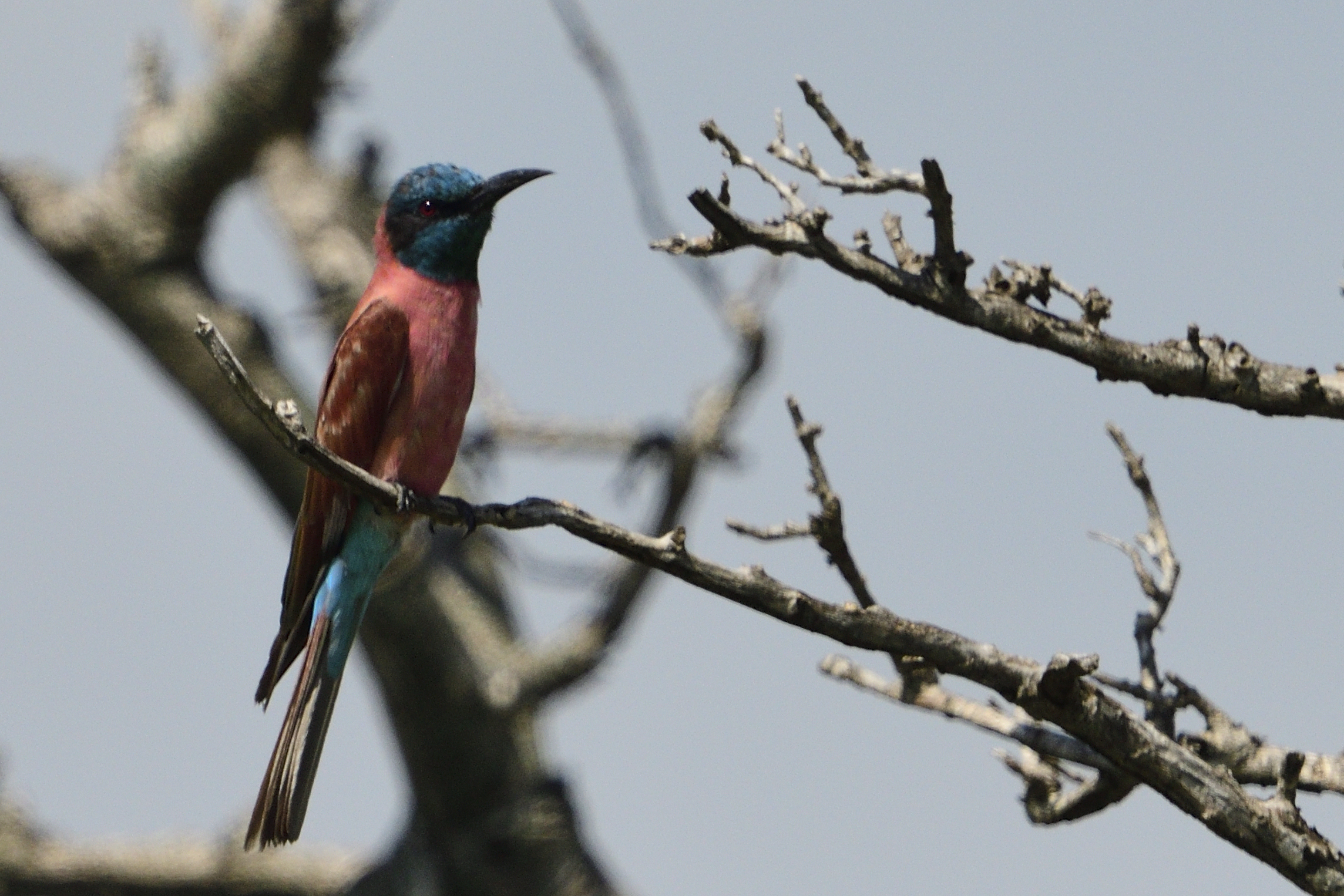
Northern Carmine Bee-eater, Merops nubicus
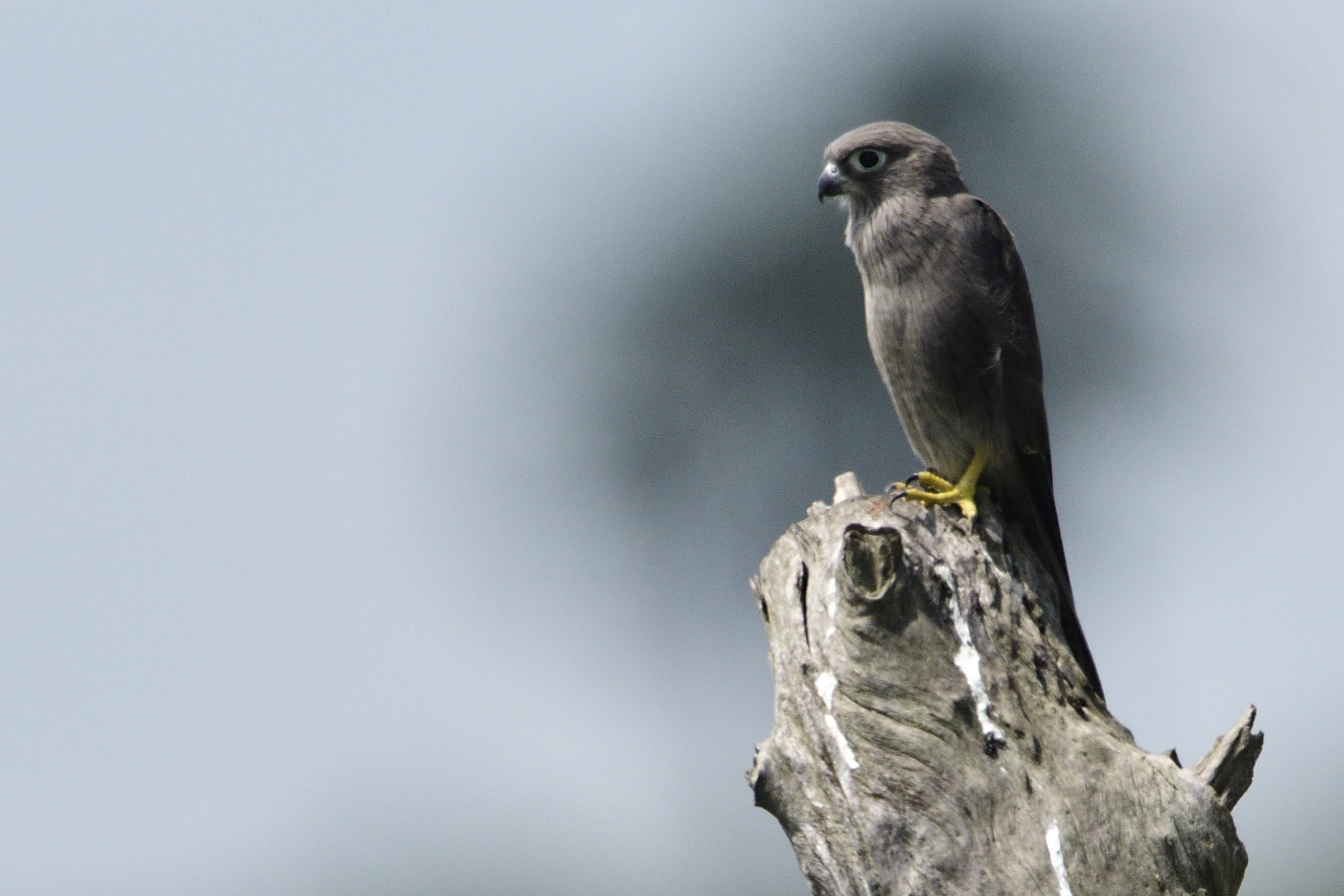
Grey Kestrel, Falco ardosiaceus
Day 11, Thursday, June 6, Murchison´s Falls National Park Full Day.
Today, I had arranged for a boat cruise in a small private boat up the river to the falls itself. One of the targets where the Red-throated Bee-eater. It did not disappoint and offered numerous photo opportunities. We did not see that many birds on the way up, most interesting: Goliath Heron, Saddle-billed Stork and of course plenty of Rock Pratincoles under the falls itself. In the afternoon, we decided to try a boat ride below from the ferry point. We did not want to go all the way since we were running out of time, but still ticked a few species including African Marsh Harrier, Allen´s Gallinule, Purple Heron and Northern Brown-throated Weaver. We returned to camp for our last night in Murchison´s. It is a nice park, but the number of exiting birds were not brilliant.
Some pictures from Day 11:
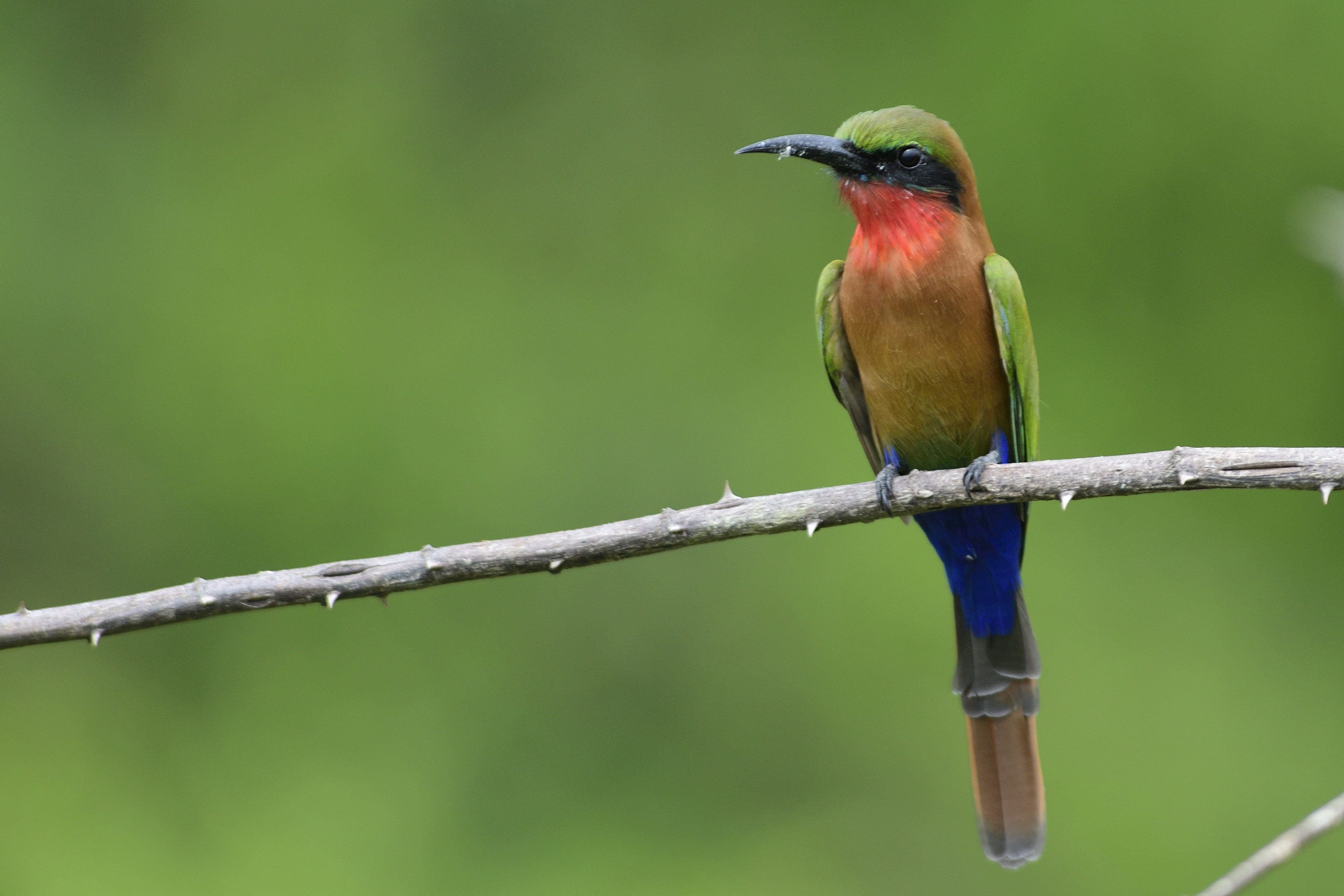
Red-throated Bee-eater, Merops bulocki – Lifer
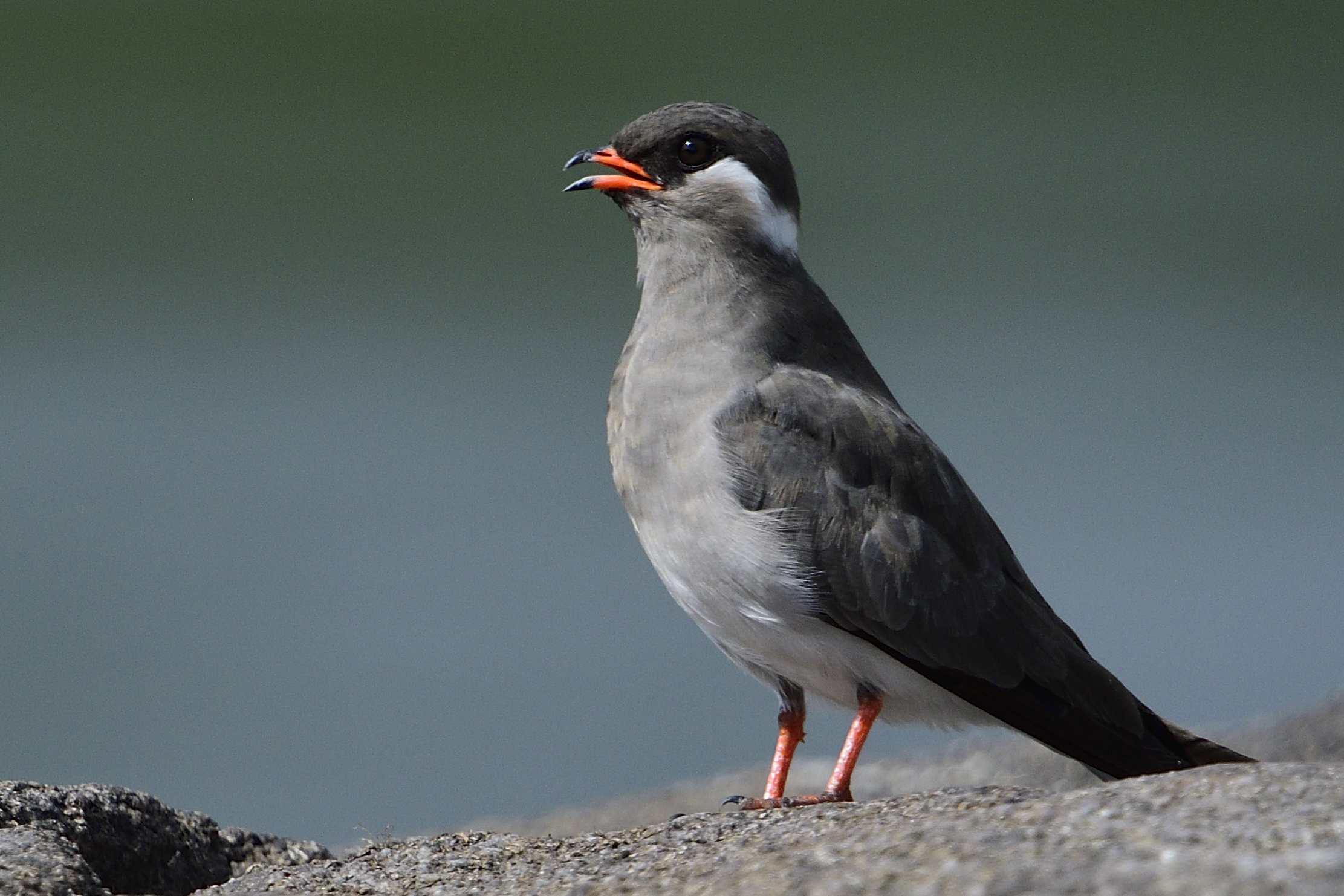
Rock Pratincole, Glareola nuchalis
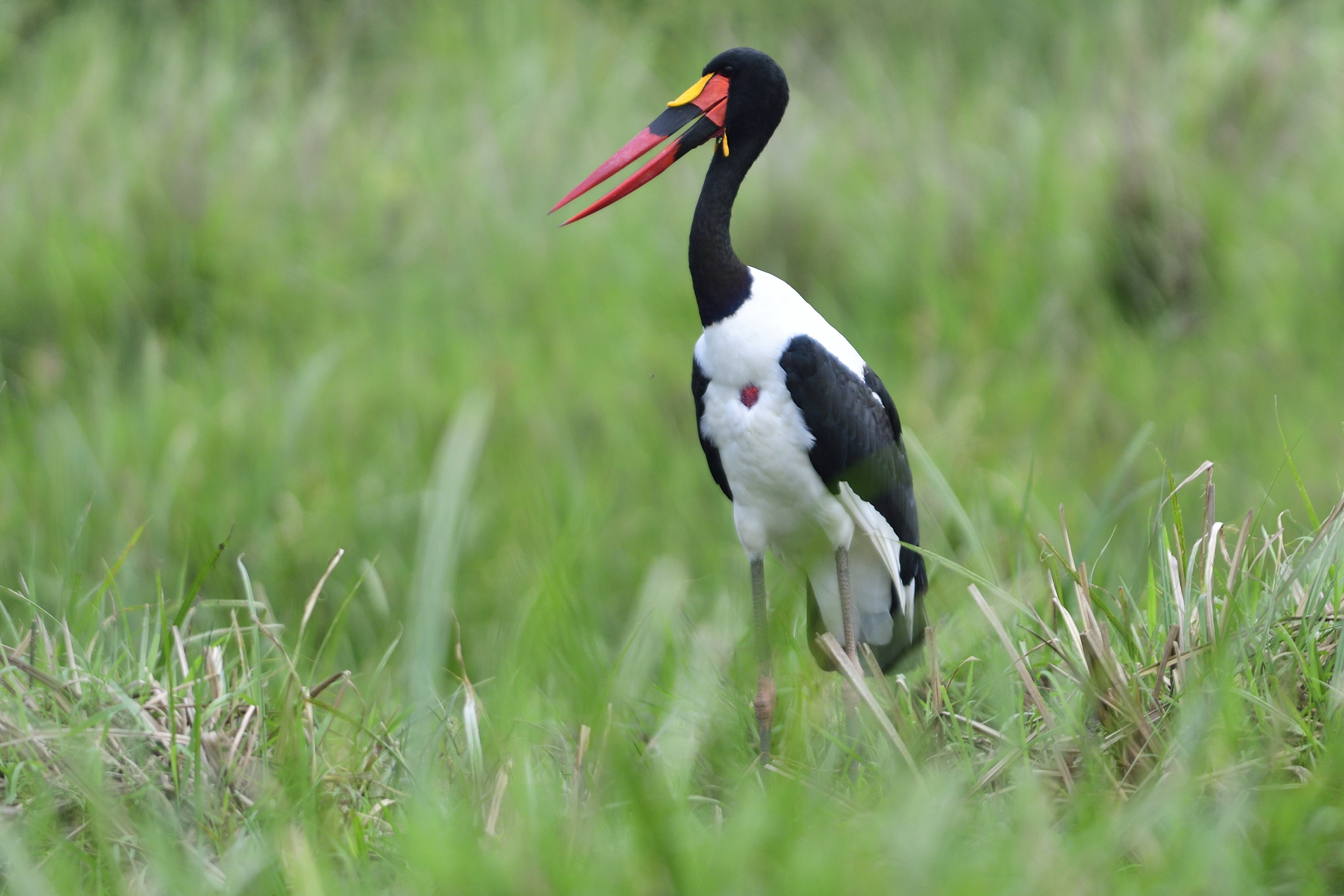
Saddle-billed Stork, Ephippioorhyncus senegalensis
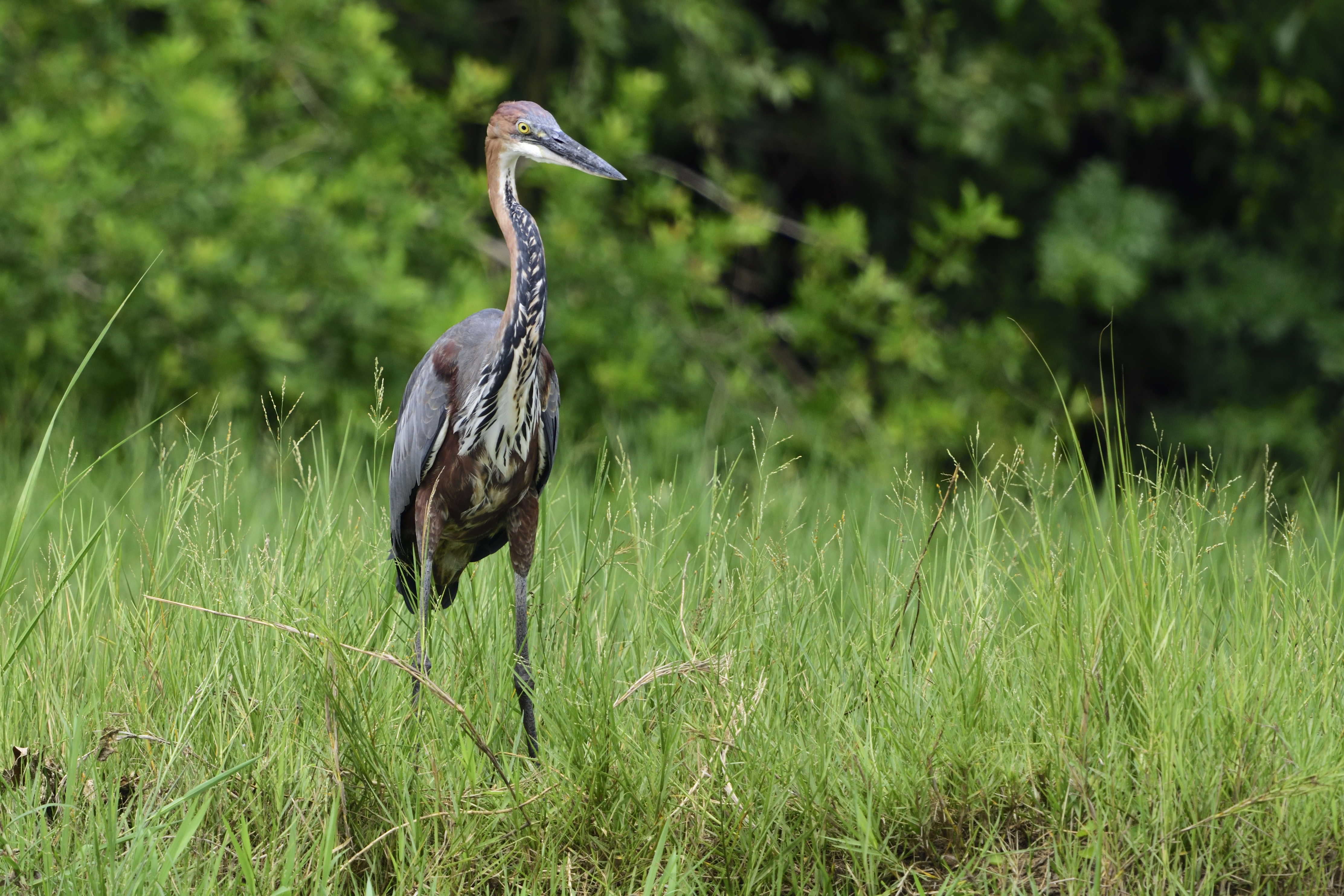
Goliath Heron, Ardea goliath
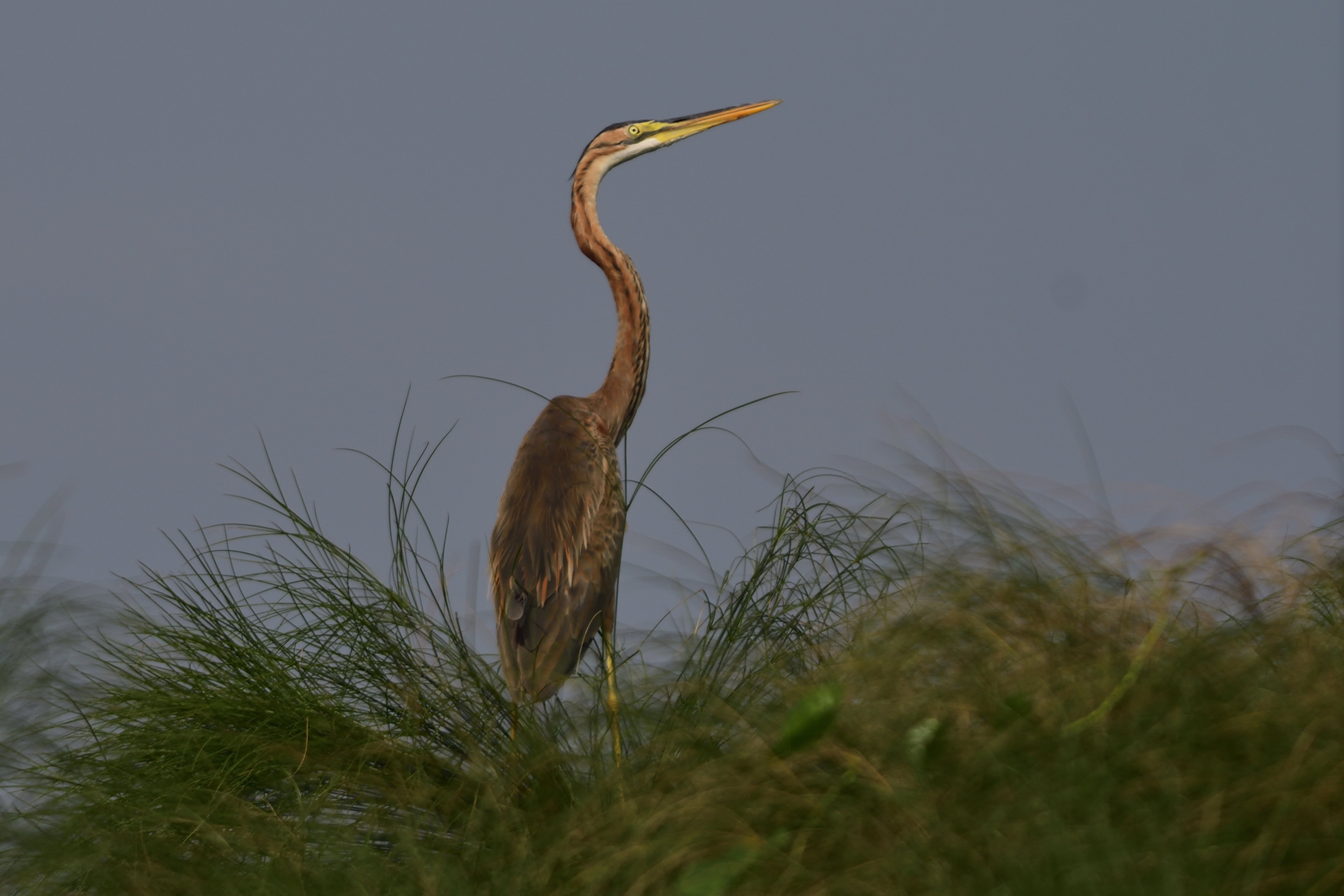
Purple Heron, Ardea purpurea
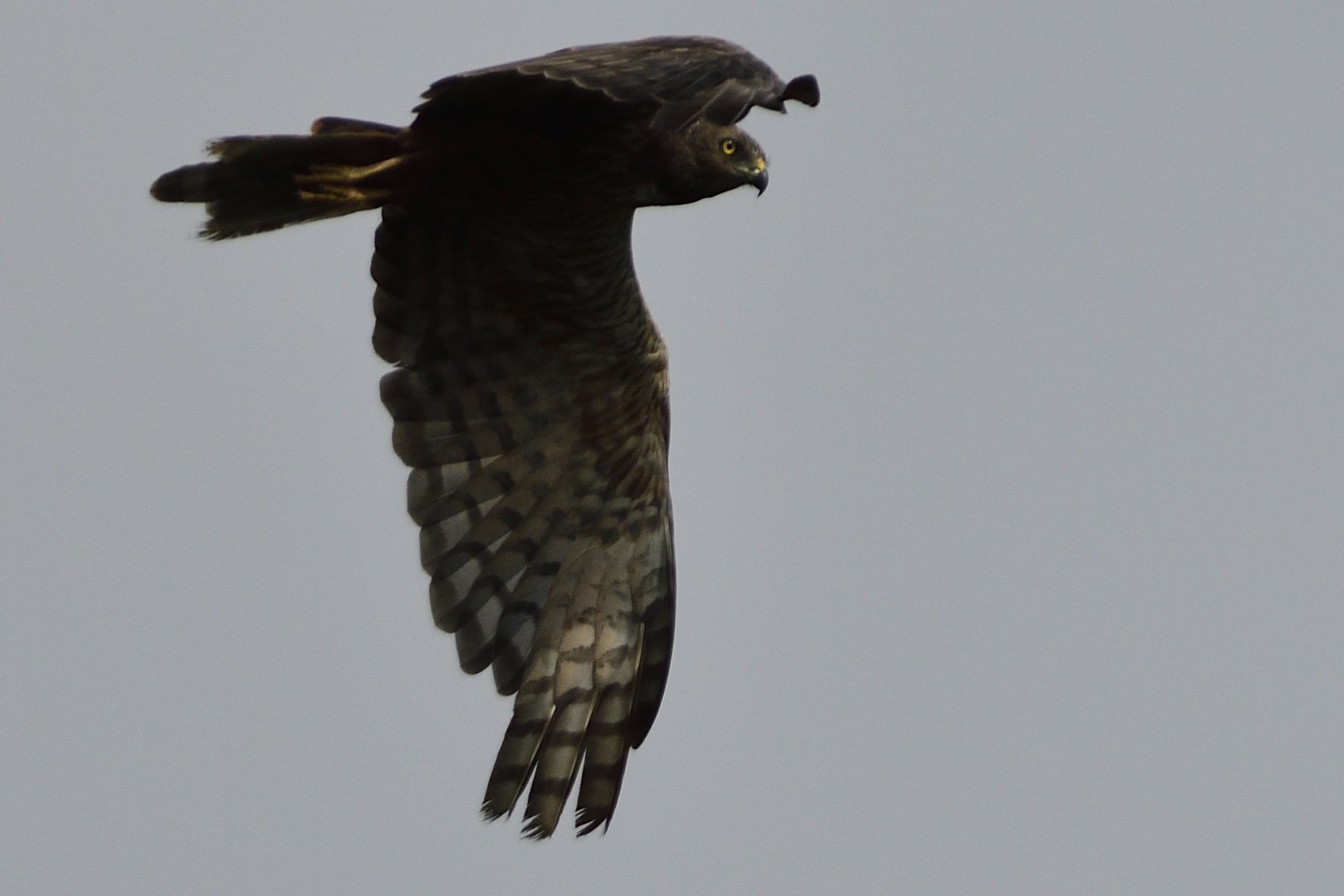
African Marsh-Harrier, Circus macrourus
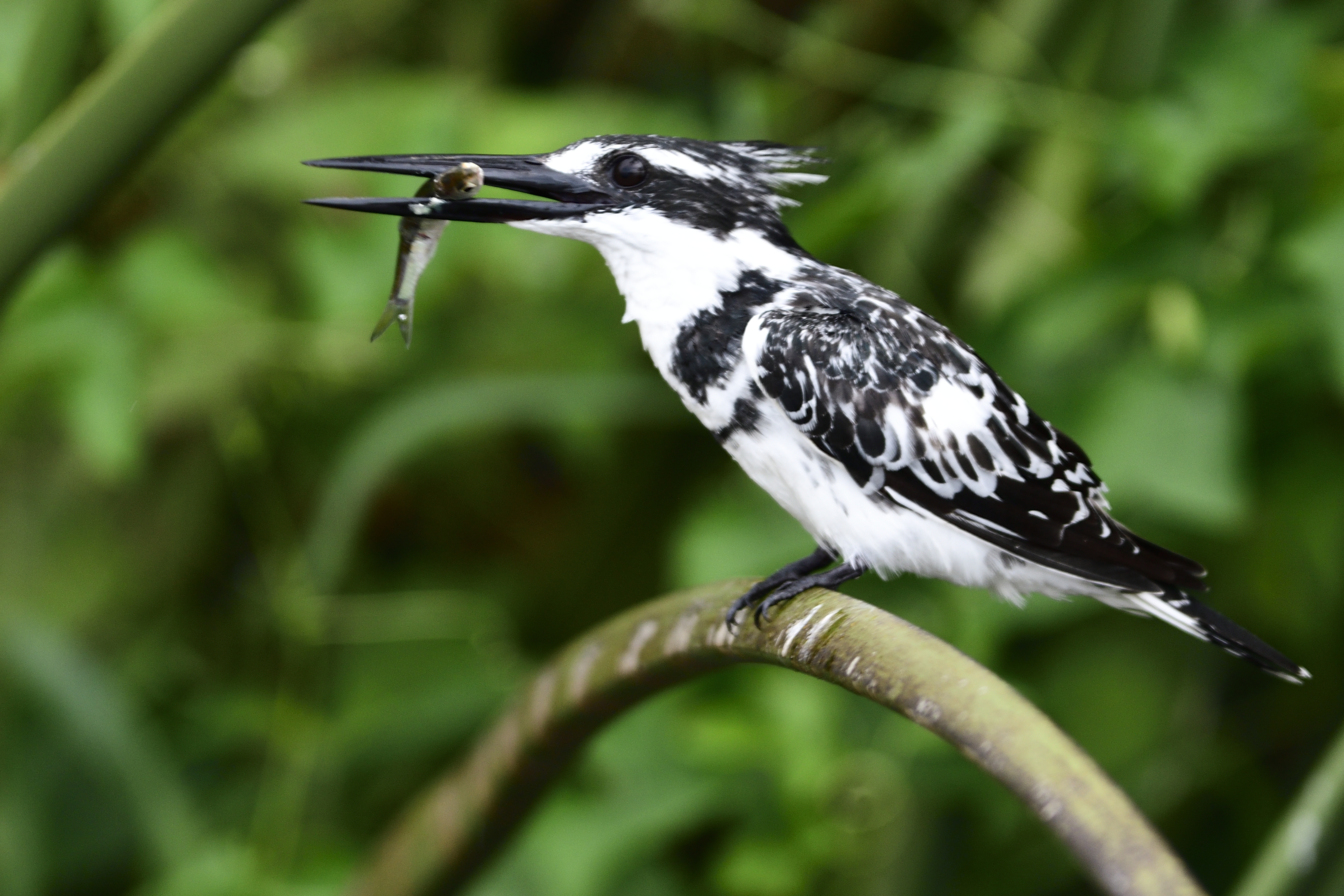
Pied Kingfisher, Ceryle rudis
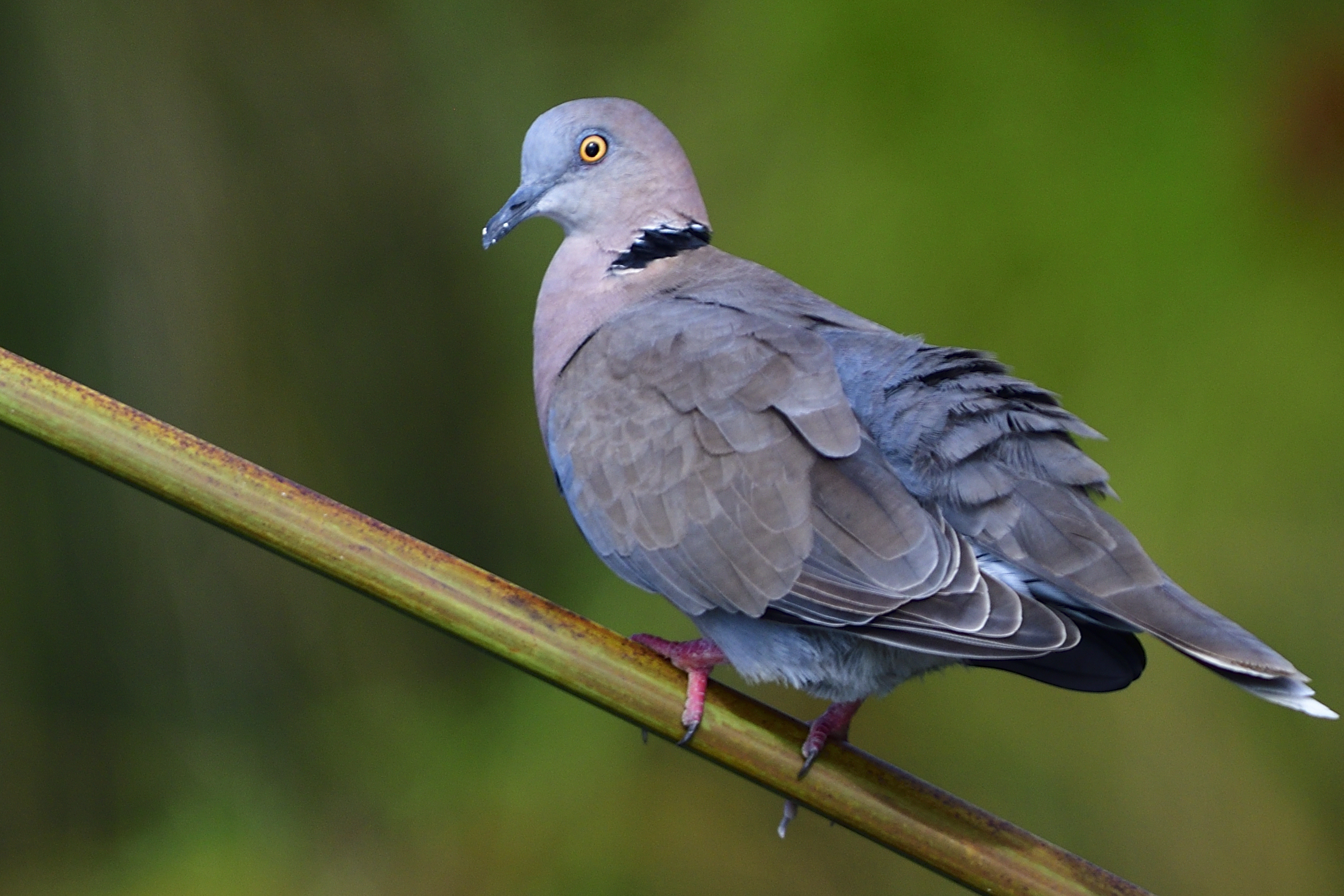
African Mourning Dove, Streptopelia decipiens
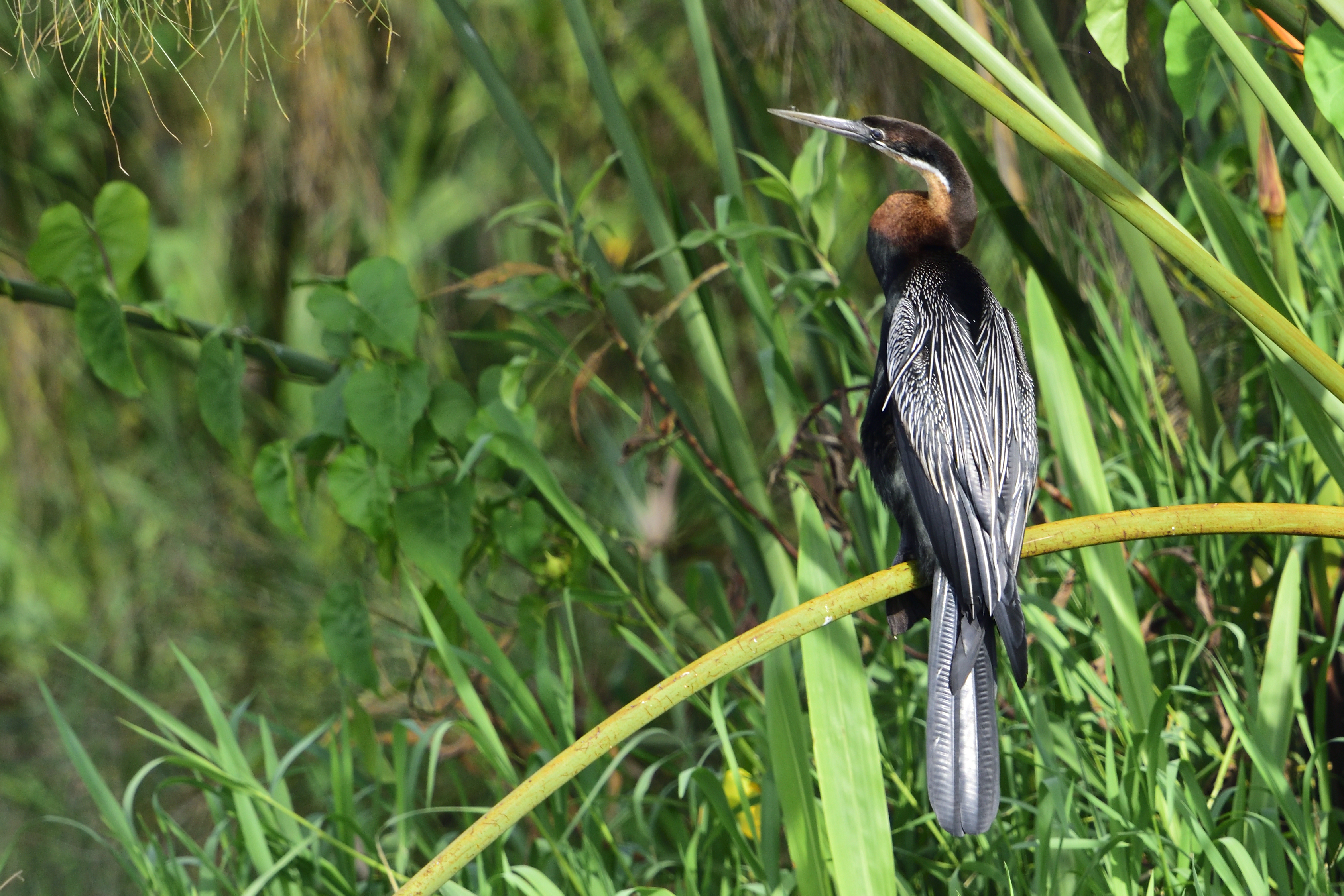
African Darter, Anhinga rufa
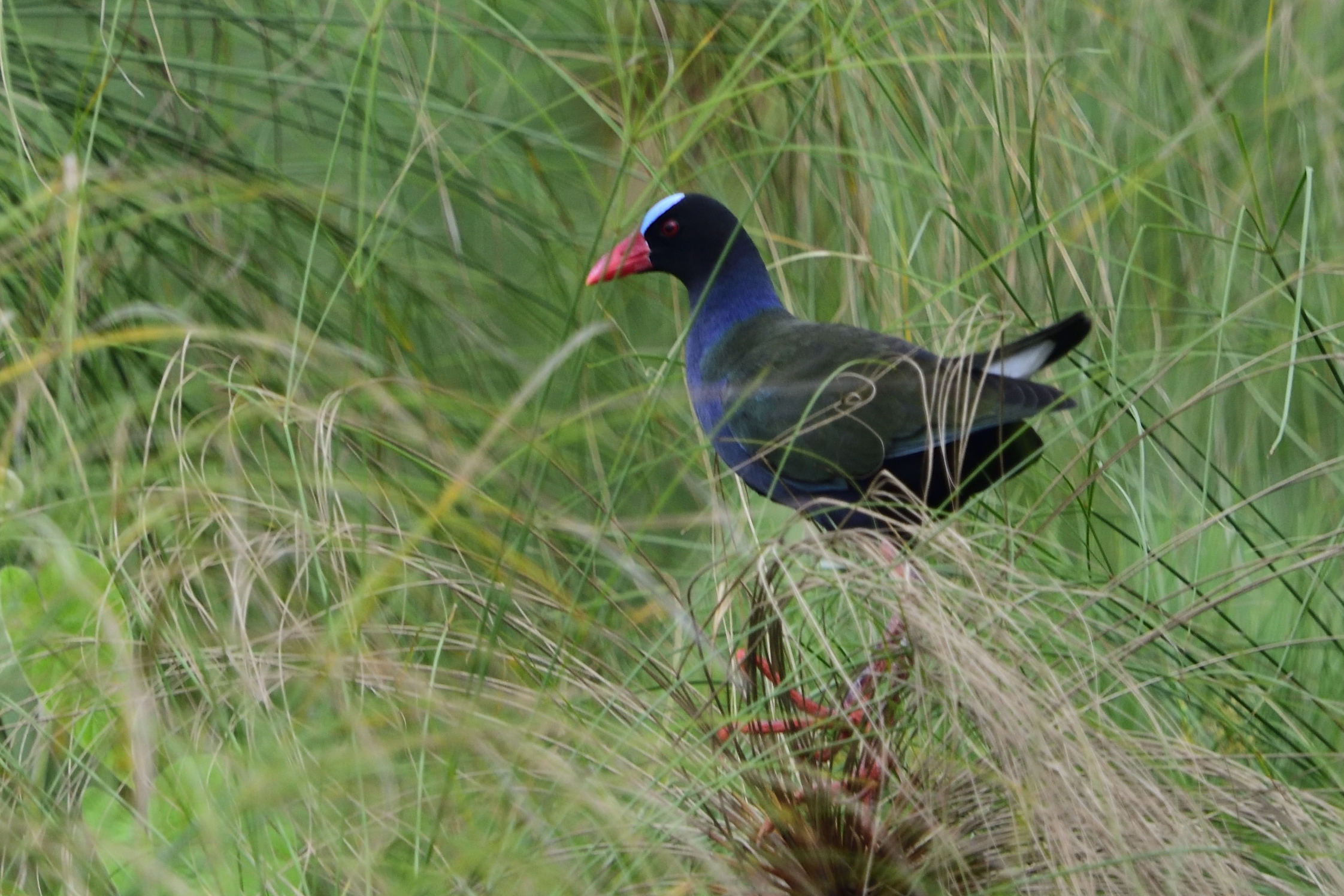
Allen´s Gallinule, Purphyrio alleni
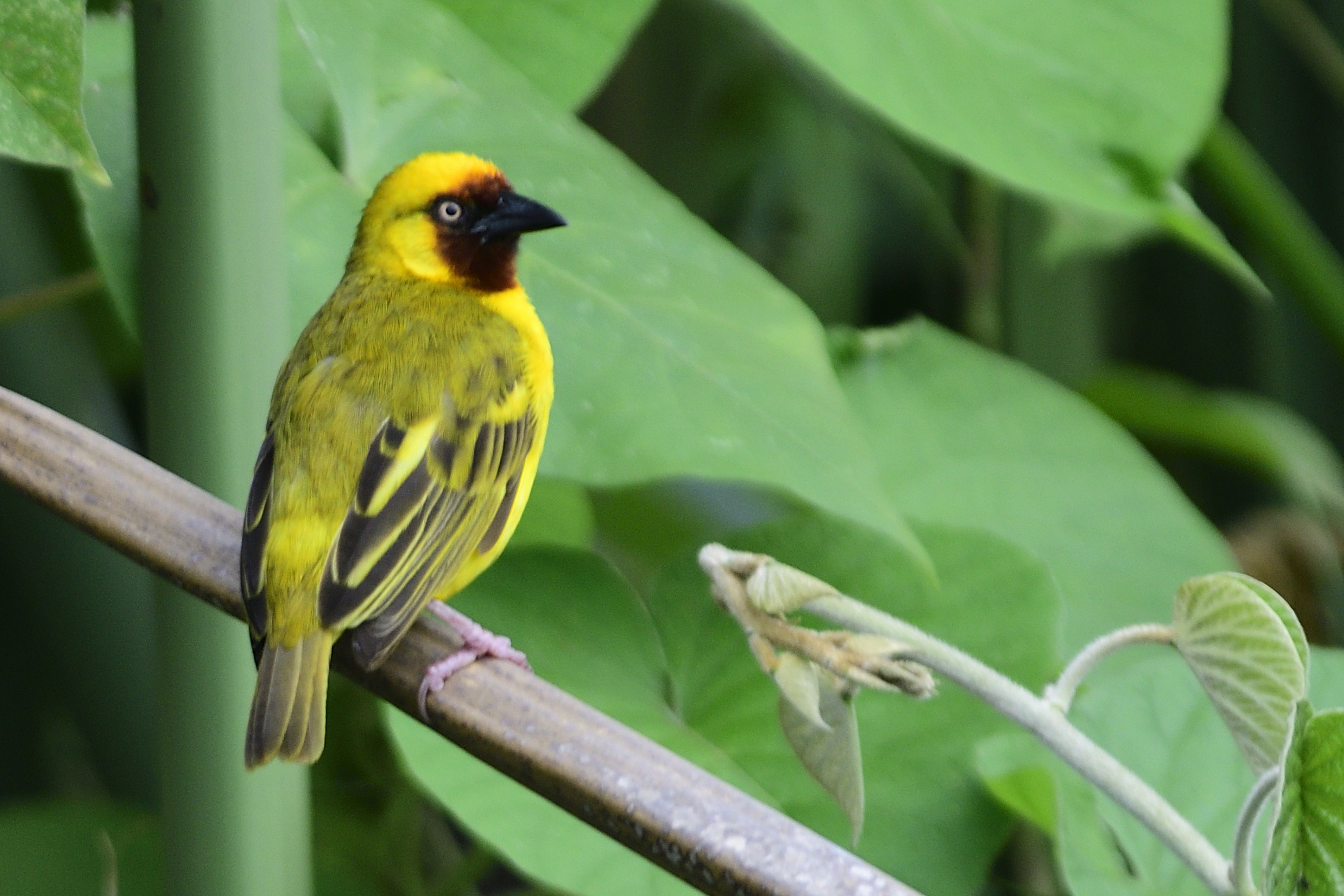
Northern Brown-throated Weaver, Ploceus castanops – Endemic to E Africa
Day 12, Friday, June 7, Murchison Falls to Masindi.
We left the Camp early and headed for Bugungu Forest on the outskirts of the park towards Masindi. The forest is known for their Chimpaneese, but also for a rich birdlife. The first good bird and also the main target was the Puvel´s Illadopsis. followed by another target Nahan´s Partridge. Other good birds included Dusky Long-tailed Cuckoo, Fire-crested Alethe, White-thighed Hornbill, Chestnut Wattle-eye, Uganda Woodland-Warbler, and Narina Trogon. We kept on driving towards some Shambas west of Masindi, and found some very nice species including a special race of Red-collared Widowbird (see picture), Yellow-mantled Widowbird, Copper Sunbird and Black Bishop. We drove back to the hotel for lunch and returned to the Shambas for the afternoon. More birds to be seen: Senegal Thick-knee, Grey-headed Oliveback and Cardinal Quelea. We returned to the hotel for the night.
Pictures of some birds from Day 12
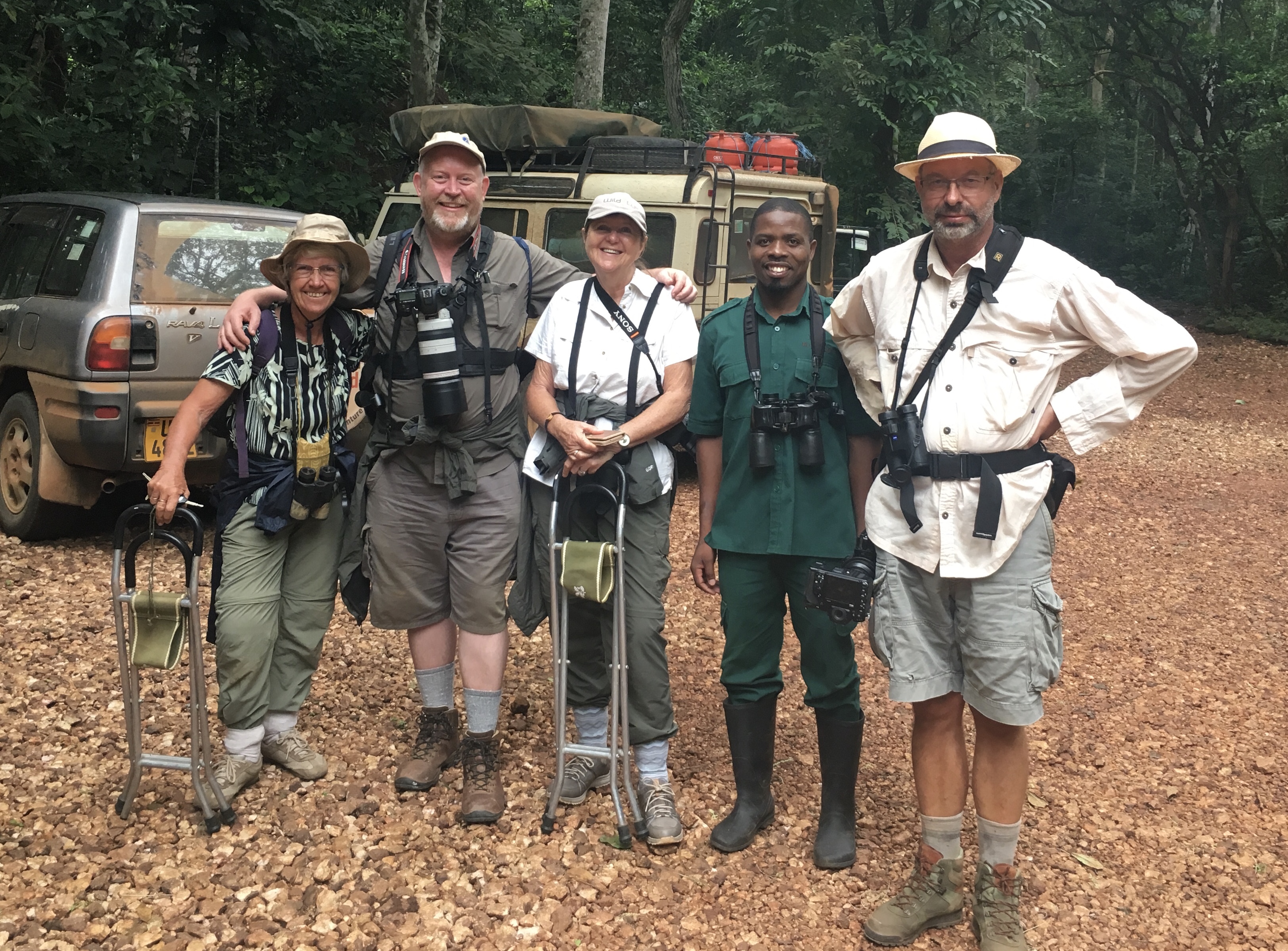
Ready for the Bugungu Forest: Judith, Adam, Sherry, the guide and me
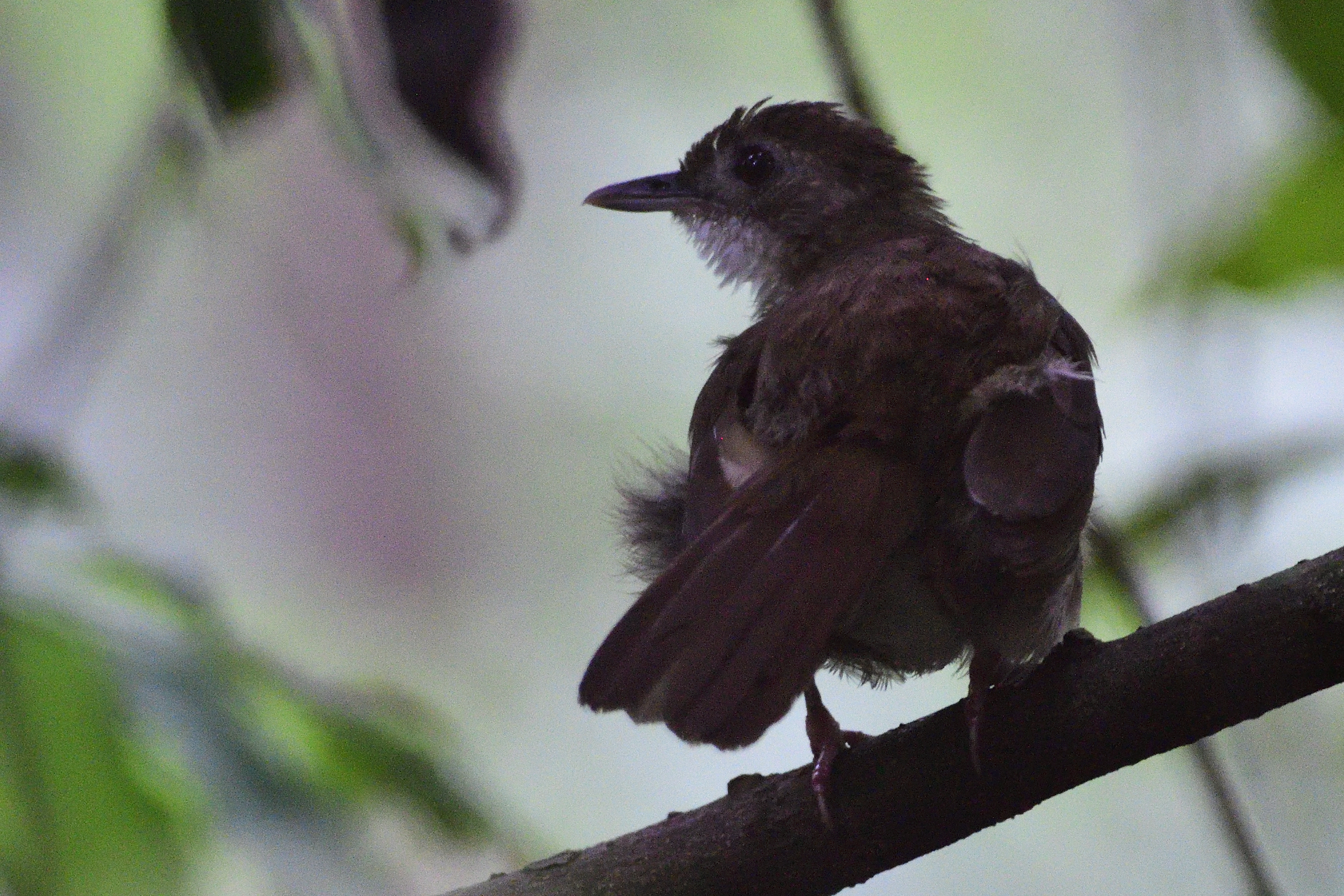
Puvel´s Illadopsis, Illadopsis puveli – lifer
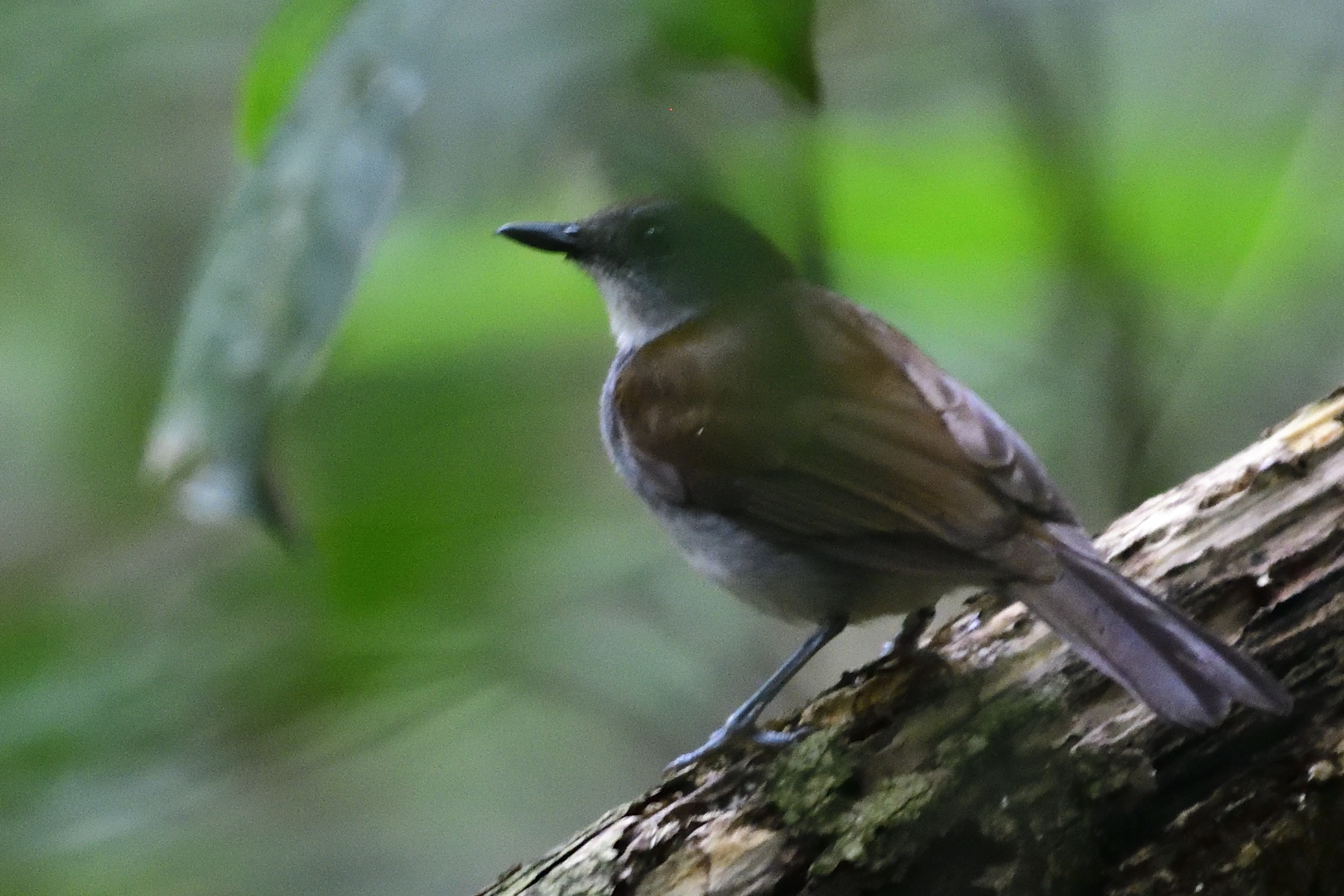
Fire-crested Alethe, Alethe castanea – Lifer
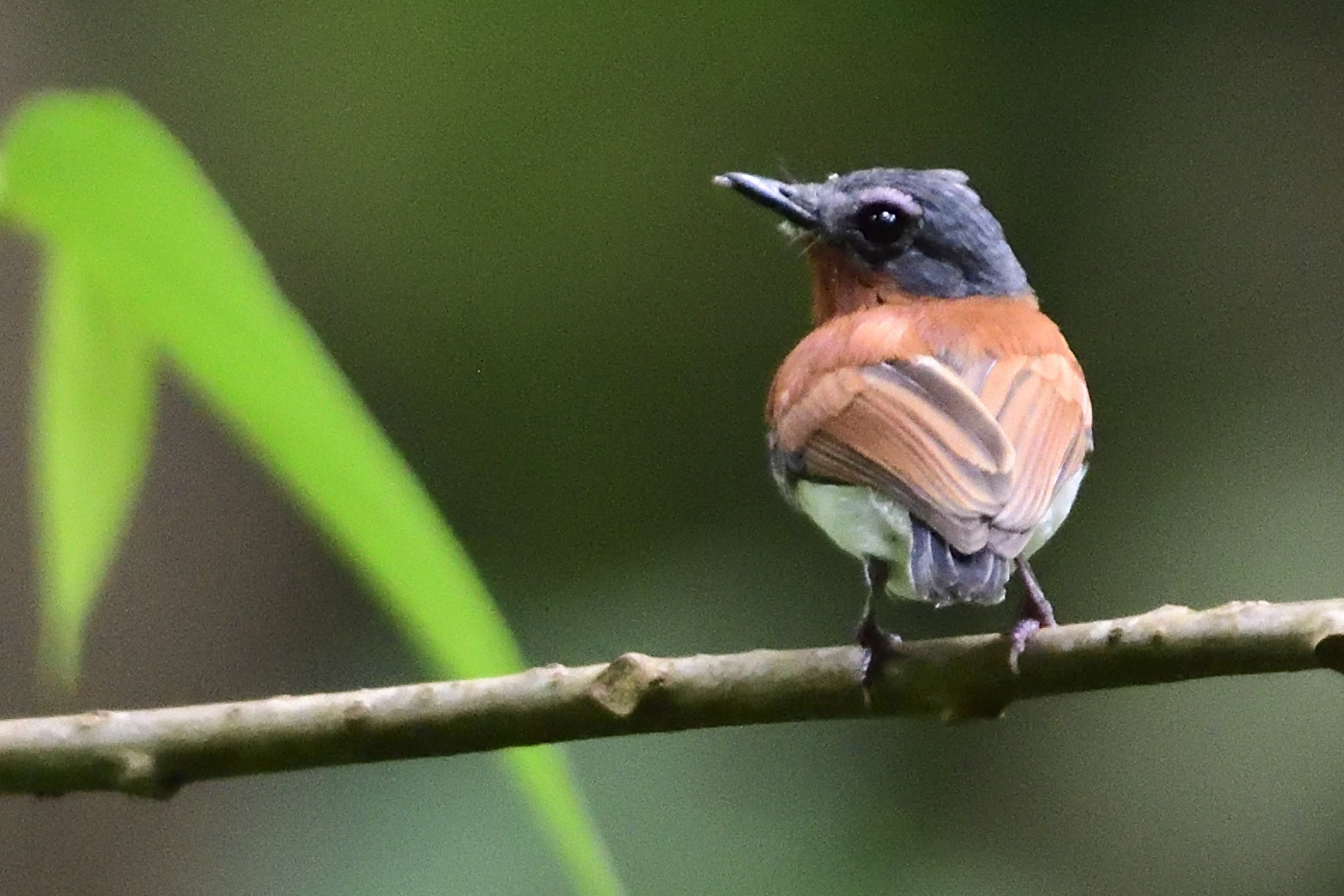
Chestnut Wattle-eye, Platysteira castanea
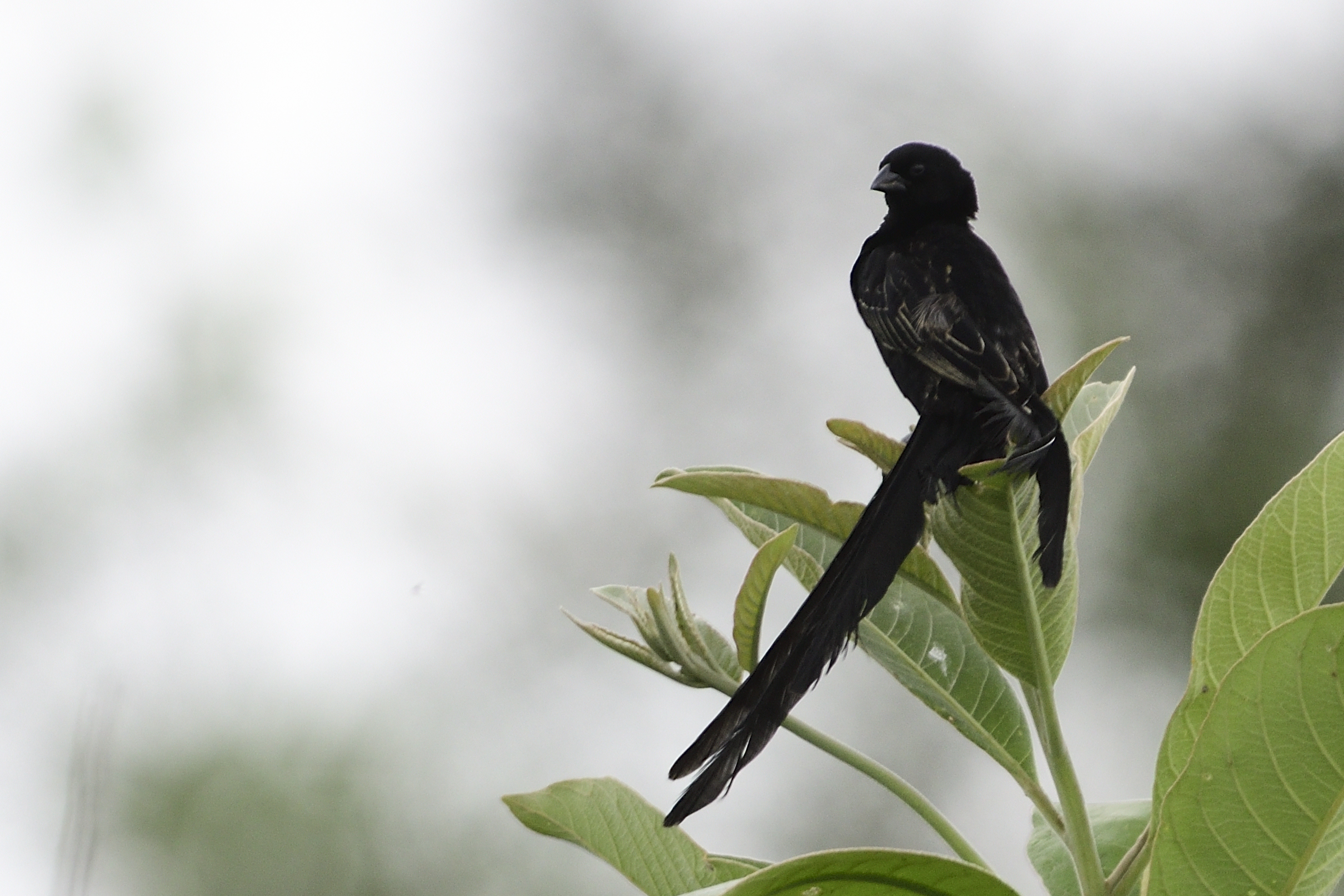
Red-collared Widowbird, Euplectes ardens
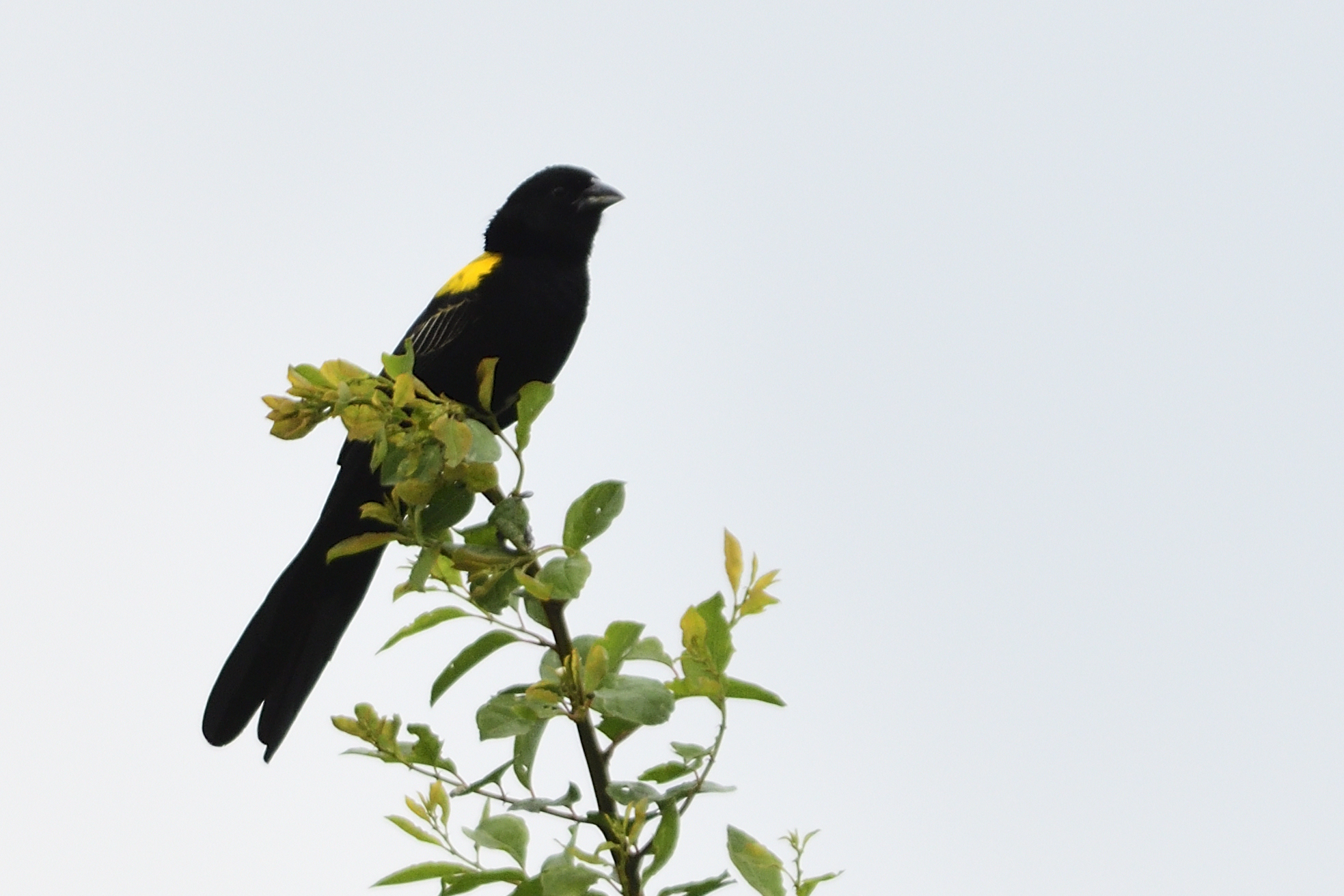
Yellow-mantled Widowbird, Euplectes macrourus
Day 13, Saturday, June 8, Masindi – Royal Mile – Masindi
Today we were to explore the legendary Royal Mile. We left early and was in the forest by 6.30. We very soon heard the unmistakable calls of Nahan´s Partridge. We managed to lure them in for some good views, but alas no pictures. The birding on this day was a little disappointing. We saw quite a few species, but did not get many photographic opportunities. The birds were either high in the canopy or far away. However we managed to collect quite a few species including a very good sighting of Chimps. Little Grey Greenbul, Grey-headed Nigrita, Yellow-whiskered Greenbul, African Pygmy Kingfisher, Uganda Woodland Warbler, Black-and-white Casqued Hornbill, Little Greenbul, Forest Robin, Scaly-breasted Illadopsis, Jameson´s Wattle-eye, Green Hylia, African Dwarf Kingfisher, White-thighed Hornbill, Chestnut Wattle-eye, White-spotted Flufftail, Dusky Long-tailed Cuckoo, Western Nicator, Fraser´s Forest Flycatcher, Slender-billed Greenbul, Olive-green Camaroptera, Spotted Greenbul, Yellow-crested Woodpecker, Blue-throated Roller, Sabine´s Spinetail, Willcock´s Honeyguide, Western Oriole, Purple-headed Starling, Chocolate-backed Kingfisher, Blue-breasted Kingfisher were all recorded. We left the forest and birded some Shambas just outside the forest. We again encountered White-breasted Nigrita and White-thighed Hornbill. Other good birds: Whistling Cisticola, Brown-backed Scrub Robin and Brown Twinspot. On the way back to the hotel, we spotted a strange looking Cuckoo. It turned out to be a Black Cuckoo of the race gabonensis. We returned to the hotel for lunch. After lunch, Adam and I had to go to an ATM. On a wire just outside the ATM, Adam spotted a Lesser Blue-eared Starling. We birded the Shambas west of Masindi in the afternoon, but nothing new showed up.
Some pictures from Day 13
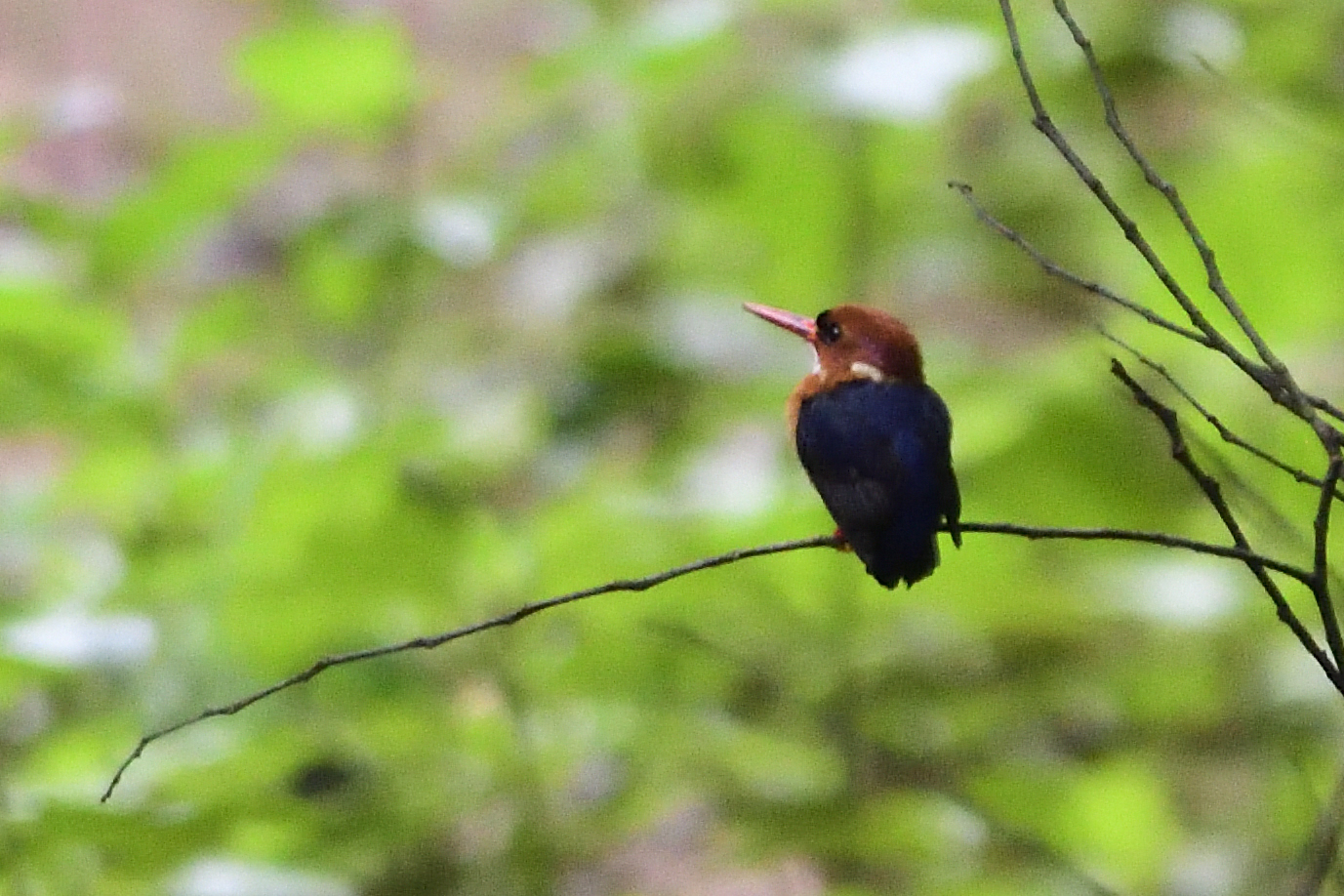
African Dwarf Kingfisher, Ispidina lecontei – Lifer
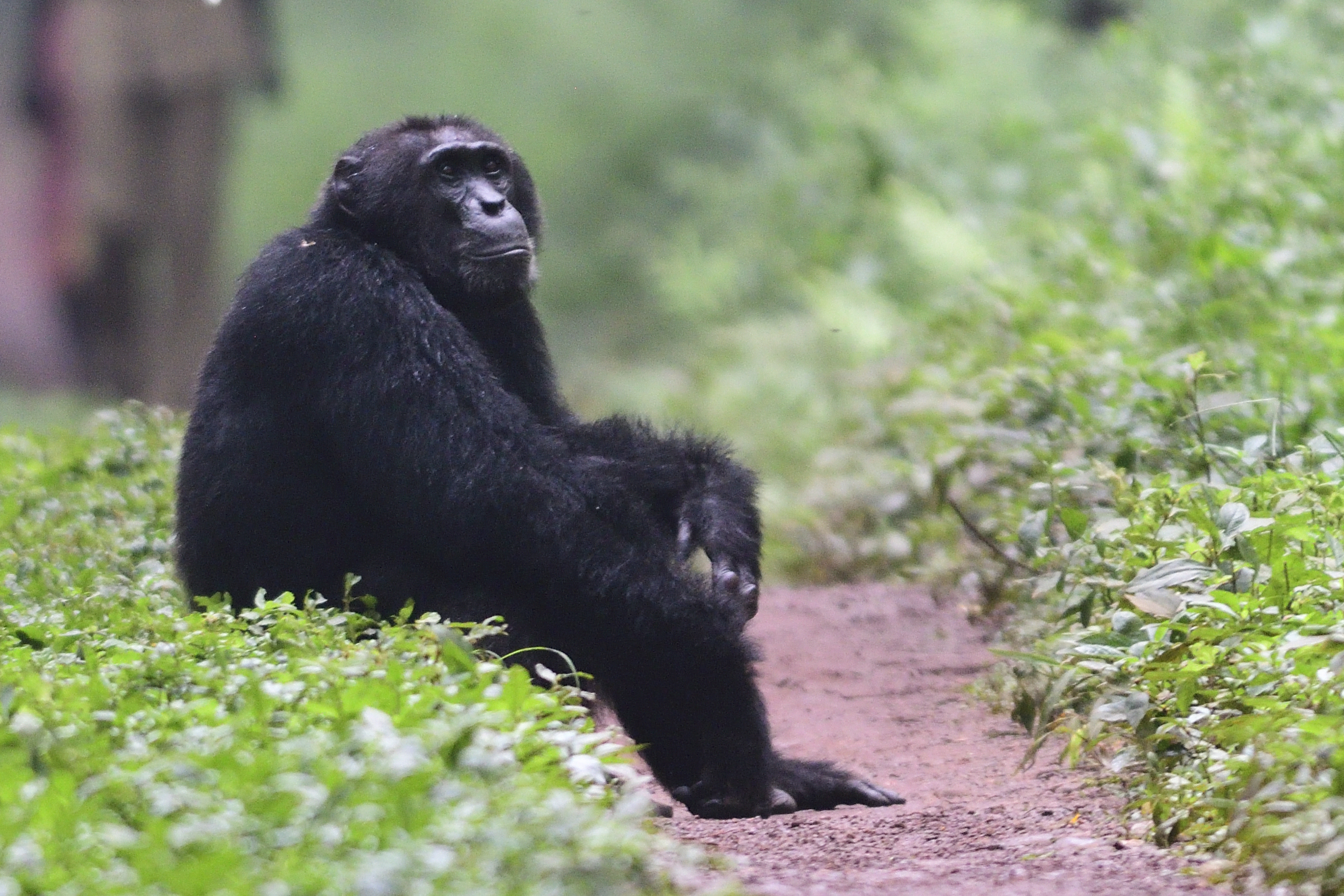
A relaxing Chimp
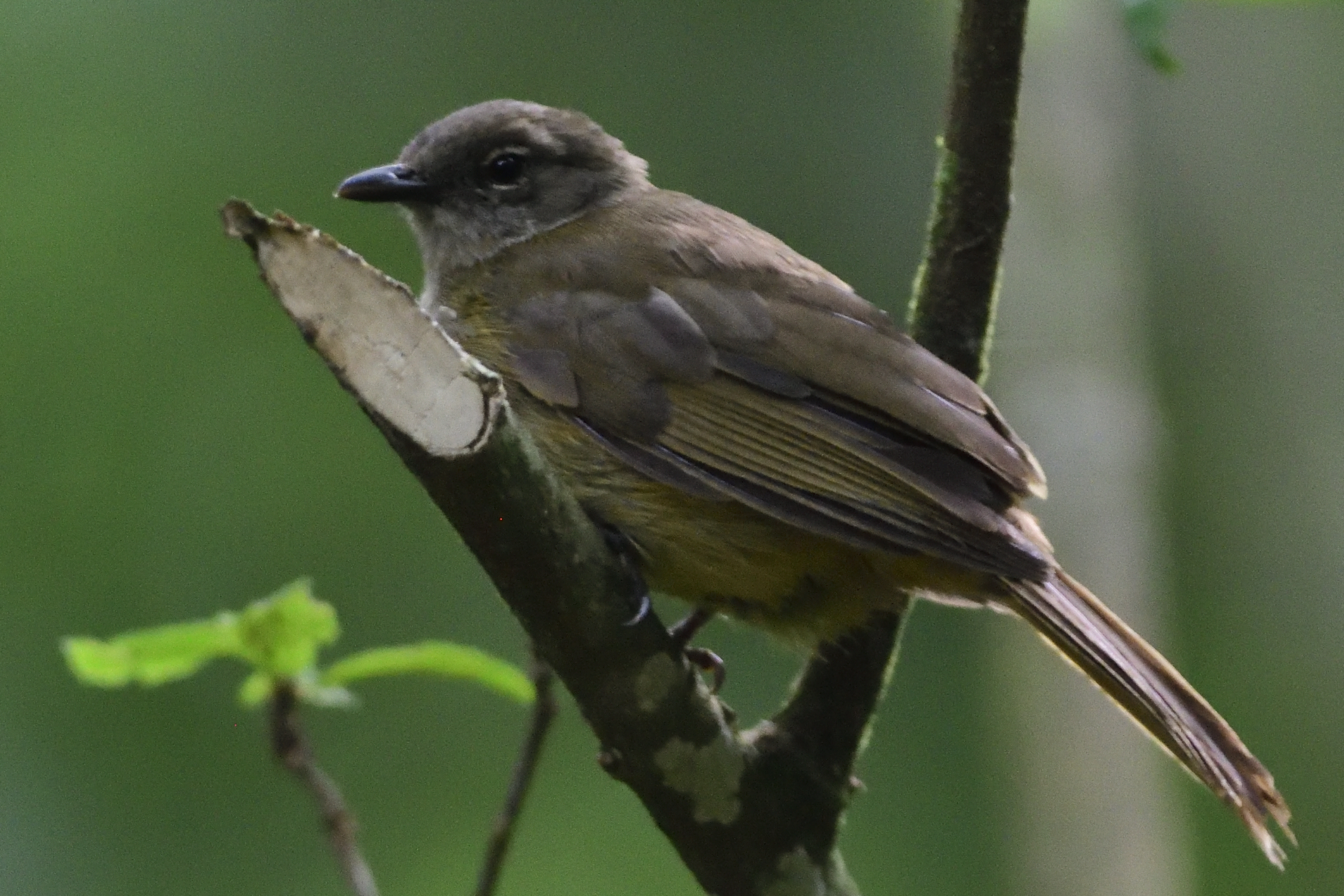
Little Grey Greenbul, Eurillas gracilis
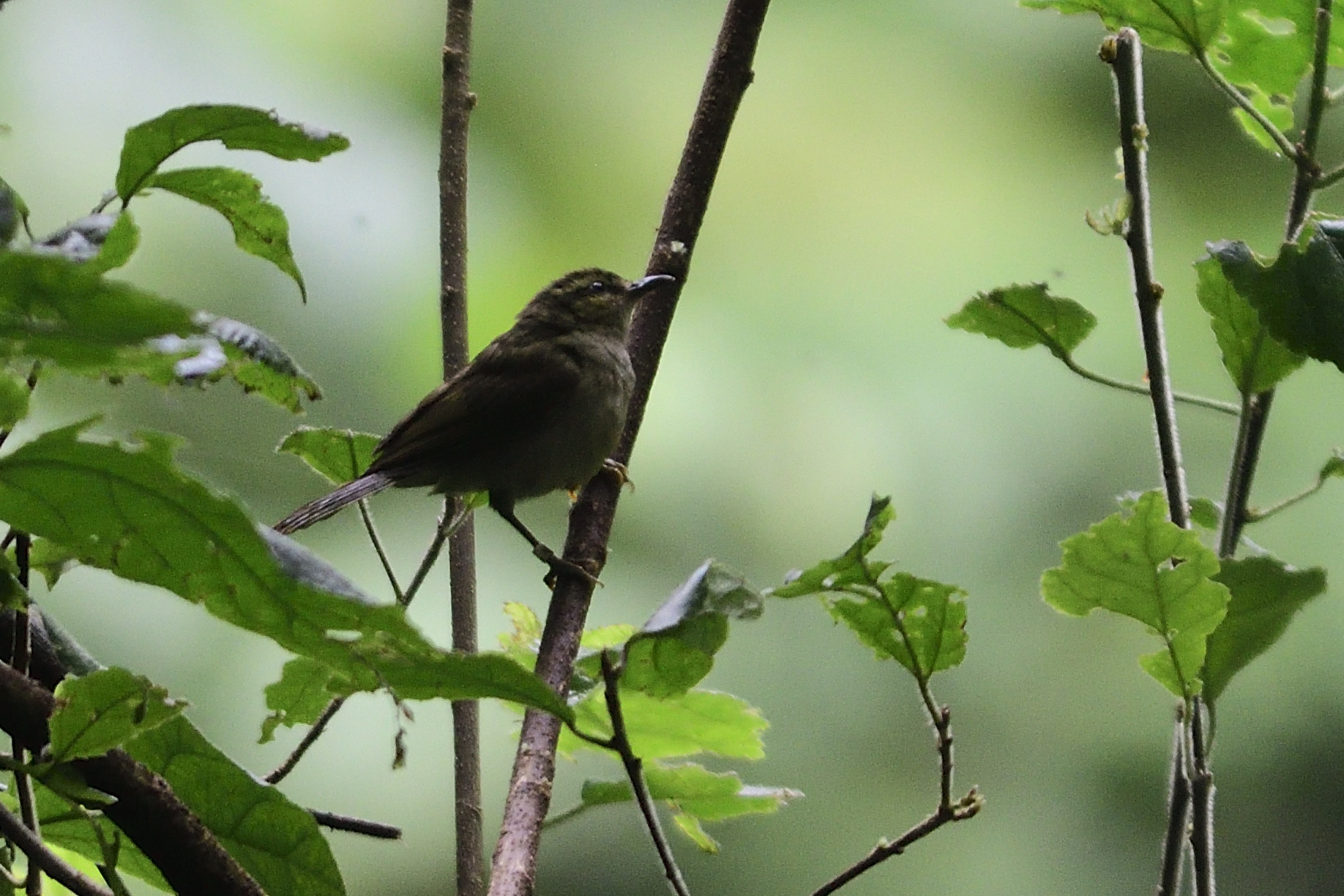
Green Hylia, Hylia prasina – Photo Lifer
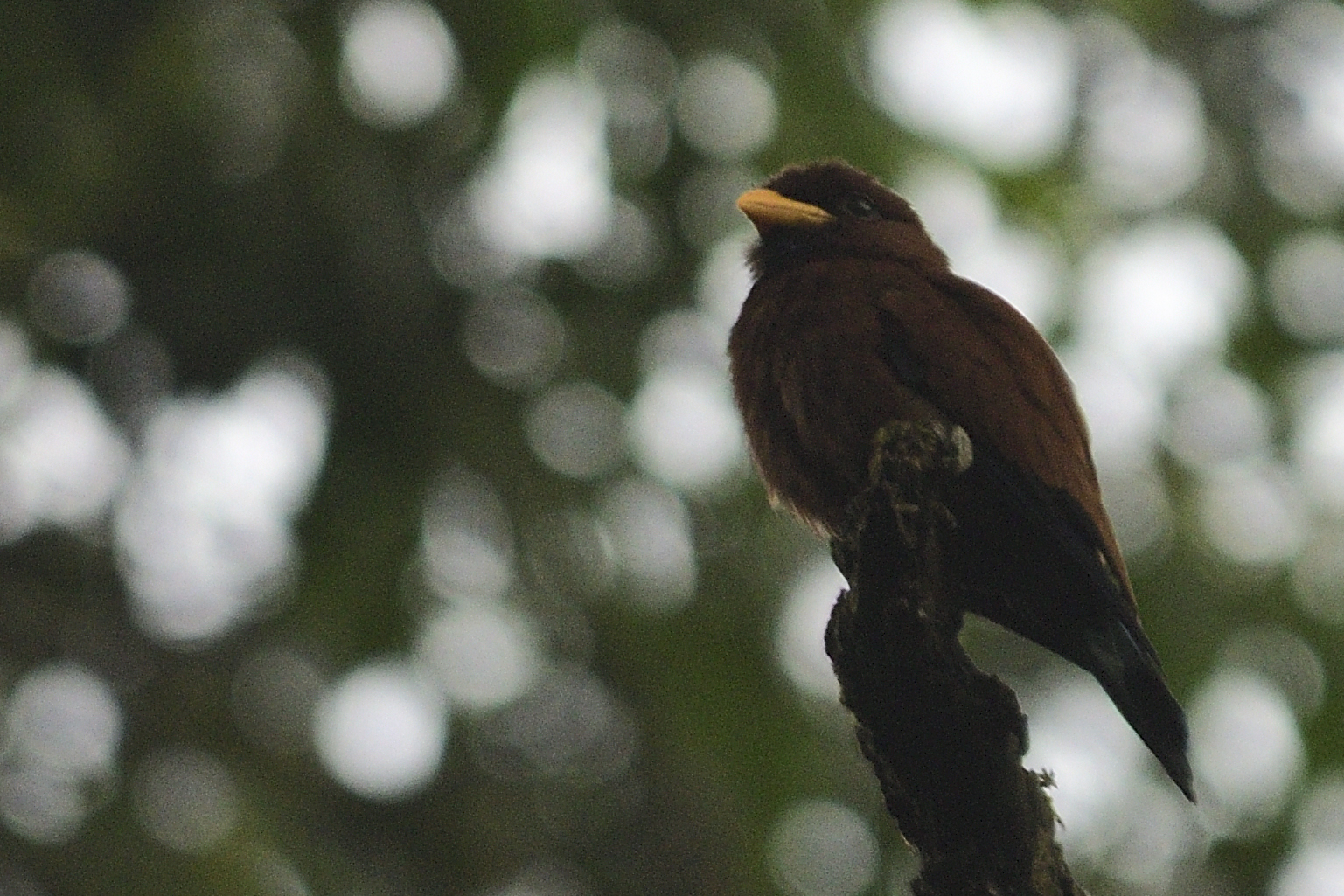
Blue-throated Roller, Eurystomus gularis – Lifer
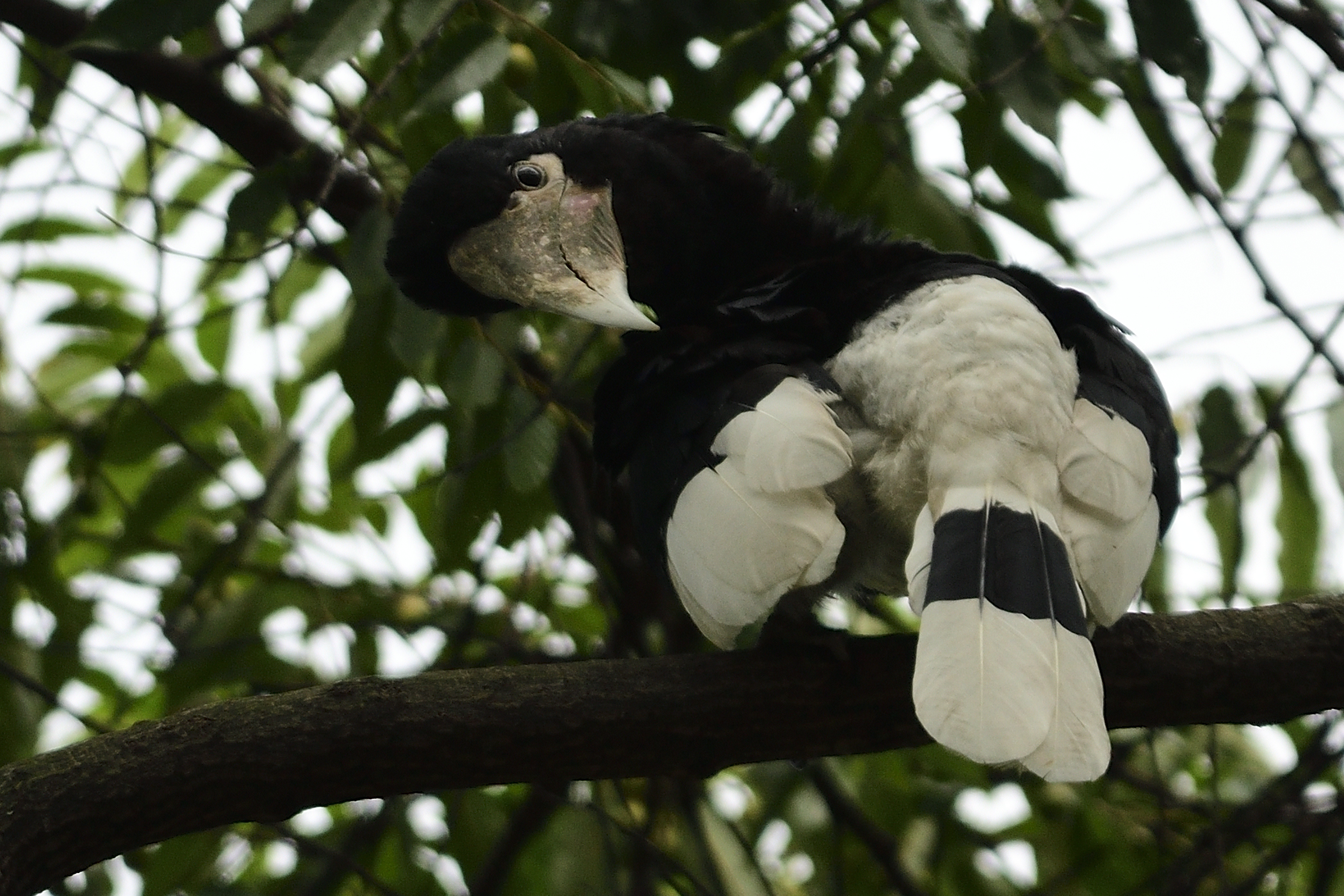
White-thighed Hornbill, Bycanistes albotibialis – Lifer
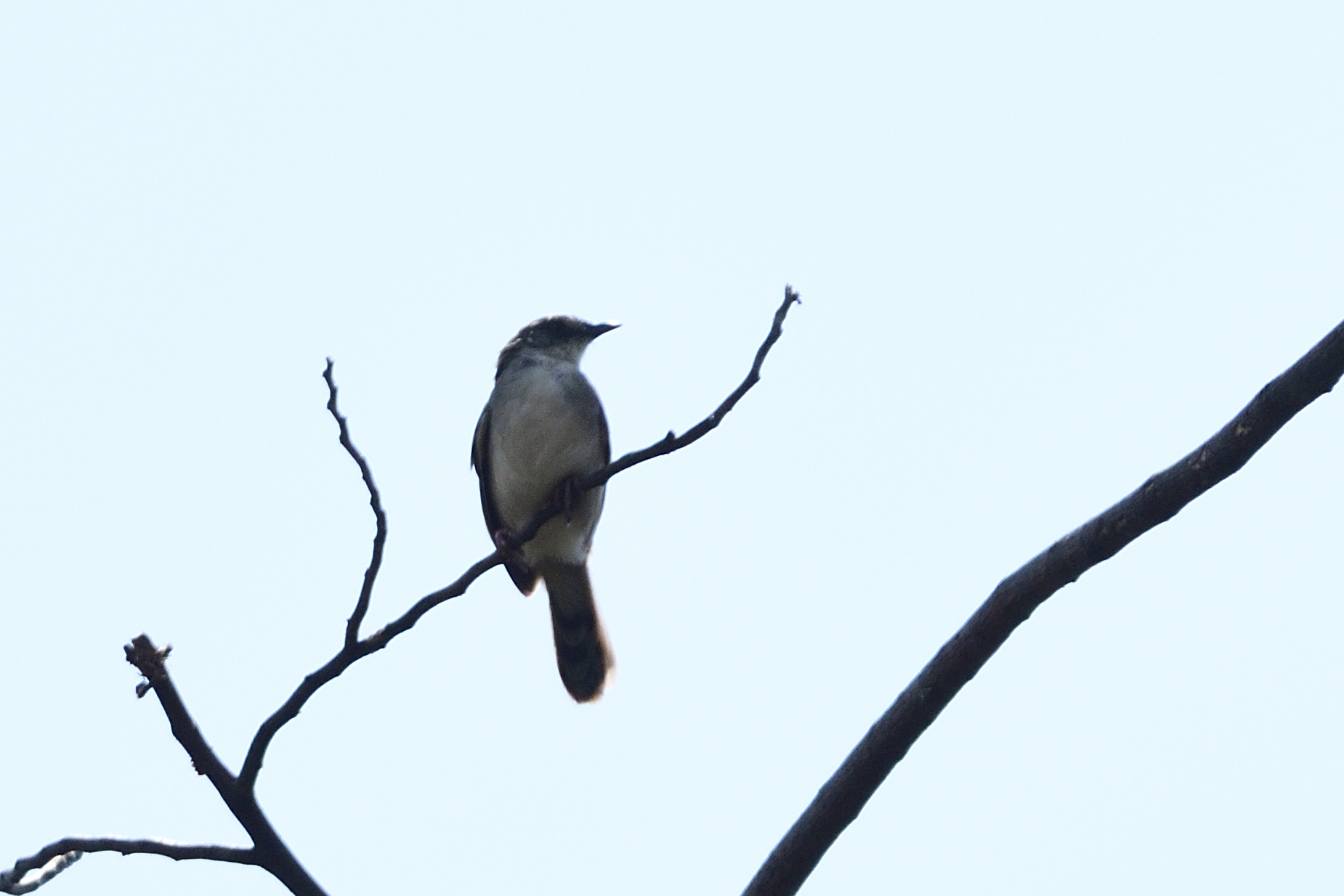
Whistling Cisticola, Cisticola lateralis – Lifer
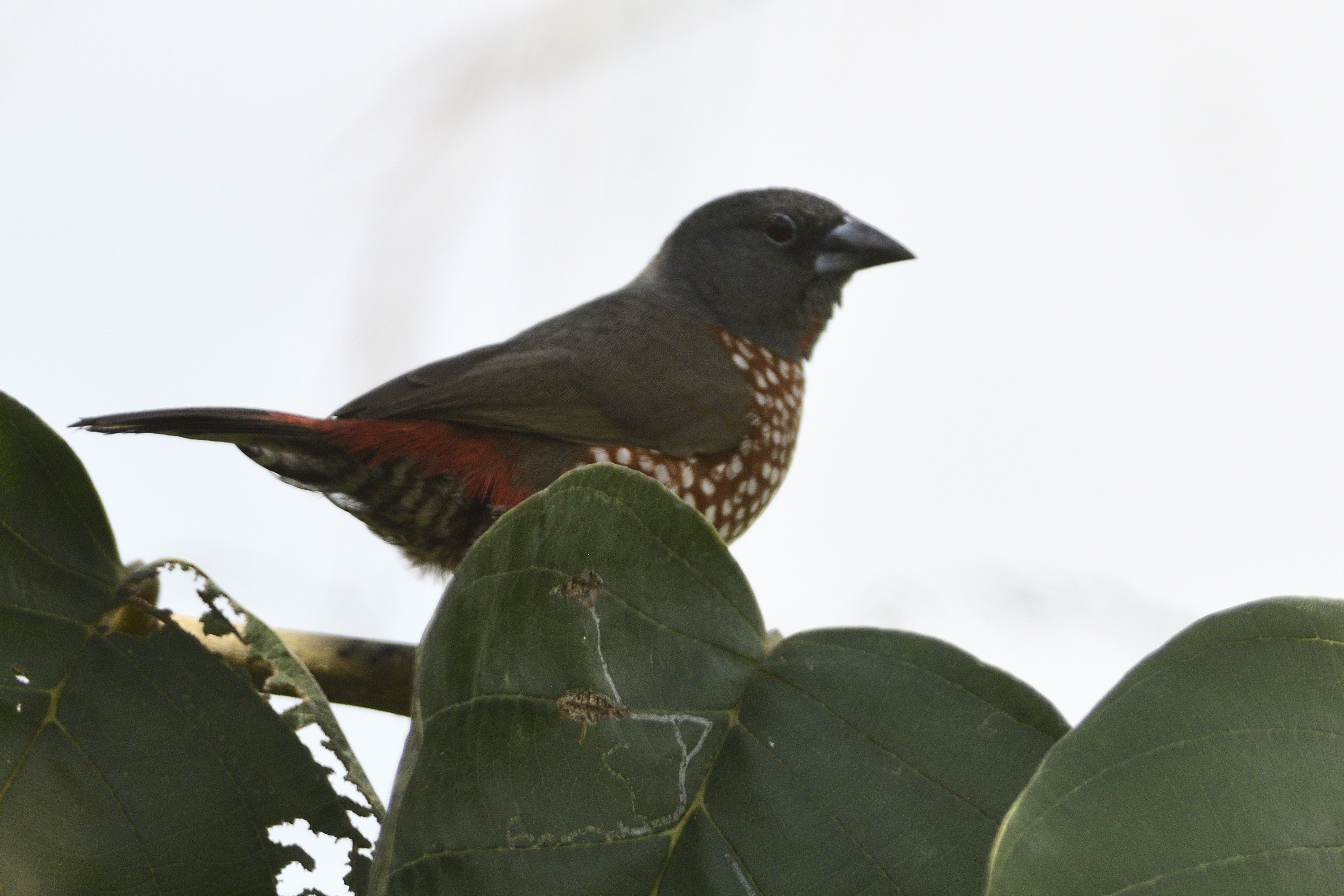
Brown Twinspot, Clytospiza monteiri – Lifer
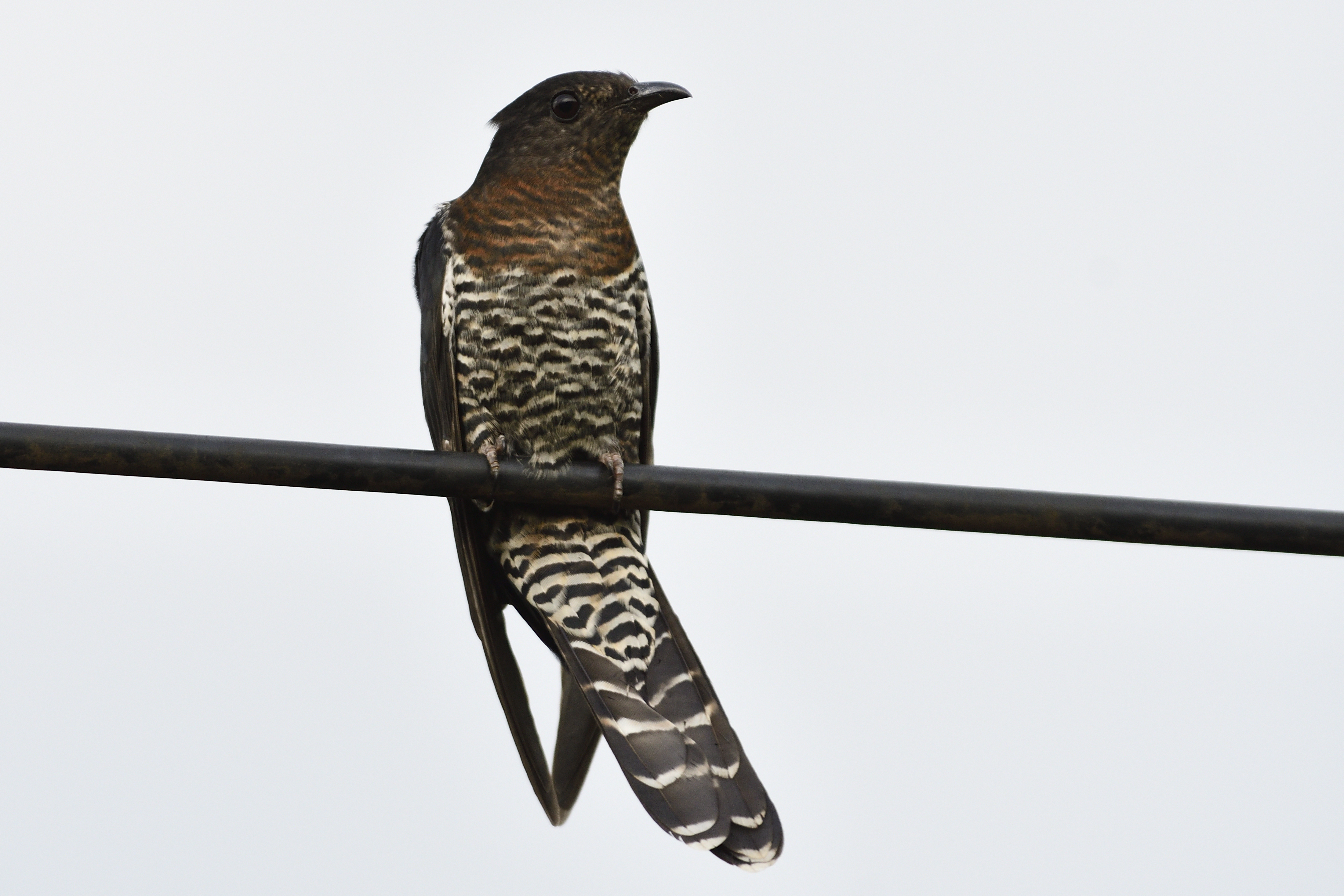
Black Cuckoo, Cuculus clamosus Race gabonensis
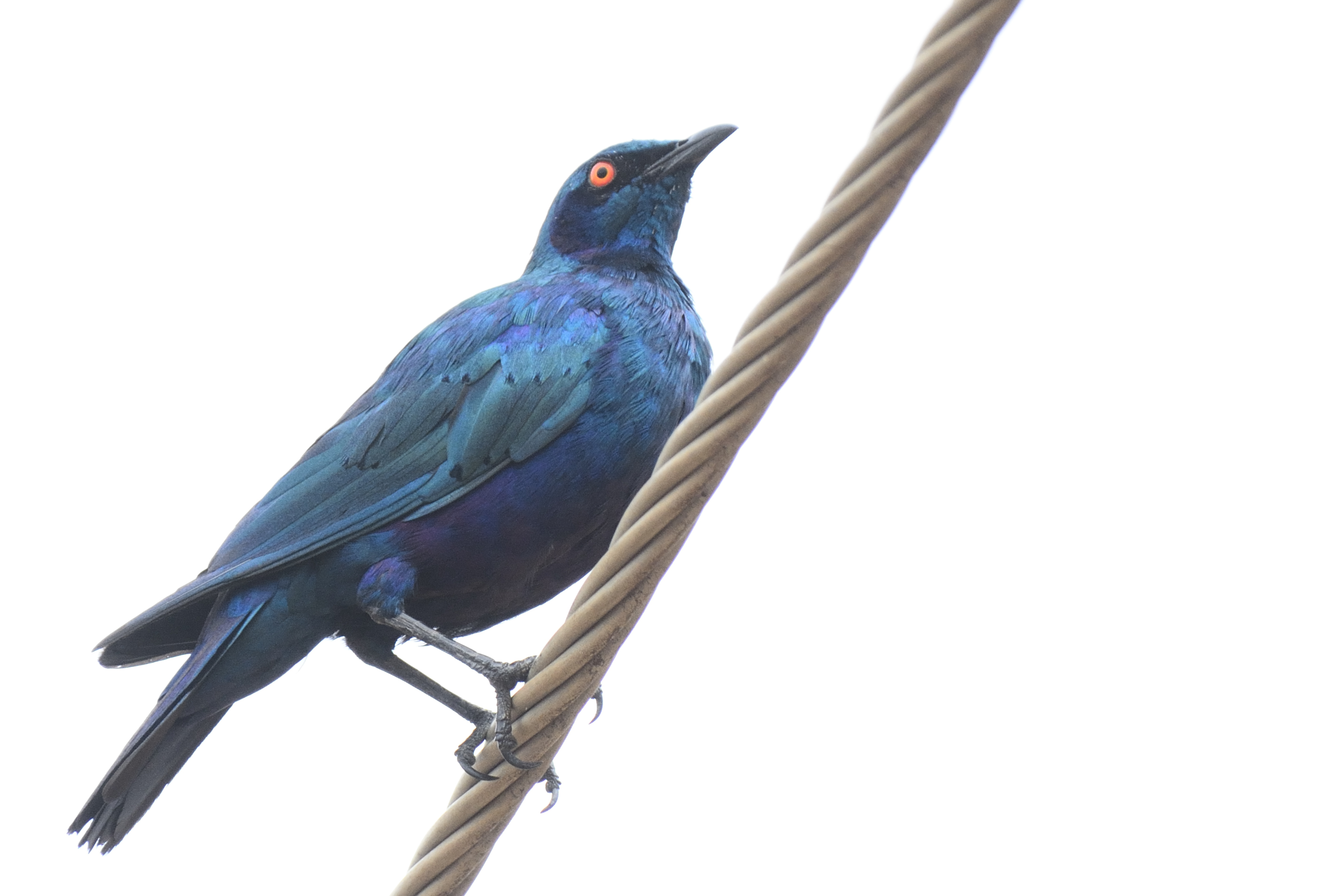
Lesser Blue-eared Starling, Lamprotornis chloropterus – Lifer
Day 14, Sunday June 9 – Masindi to Entebbe
It was time to leave Masindi. We drove back to Entebbe. Adam stayed over with Sherry and I took a hotel in town. I decided to go back to Entebbe Botanical garden to see if I could get some better pictures of the Orange Weaver, but it was not cooperating. Instead, I ended up just having a nice stroll in the gardens and pointing my camera at a few birds.
Some pictures from day 14:
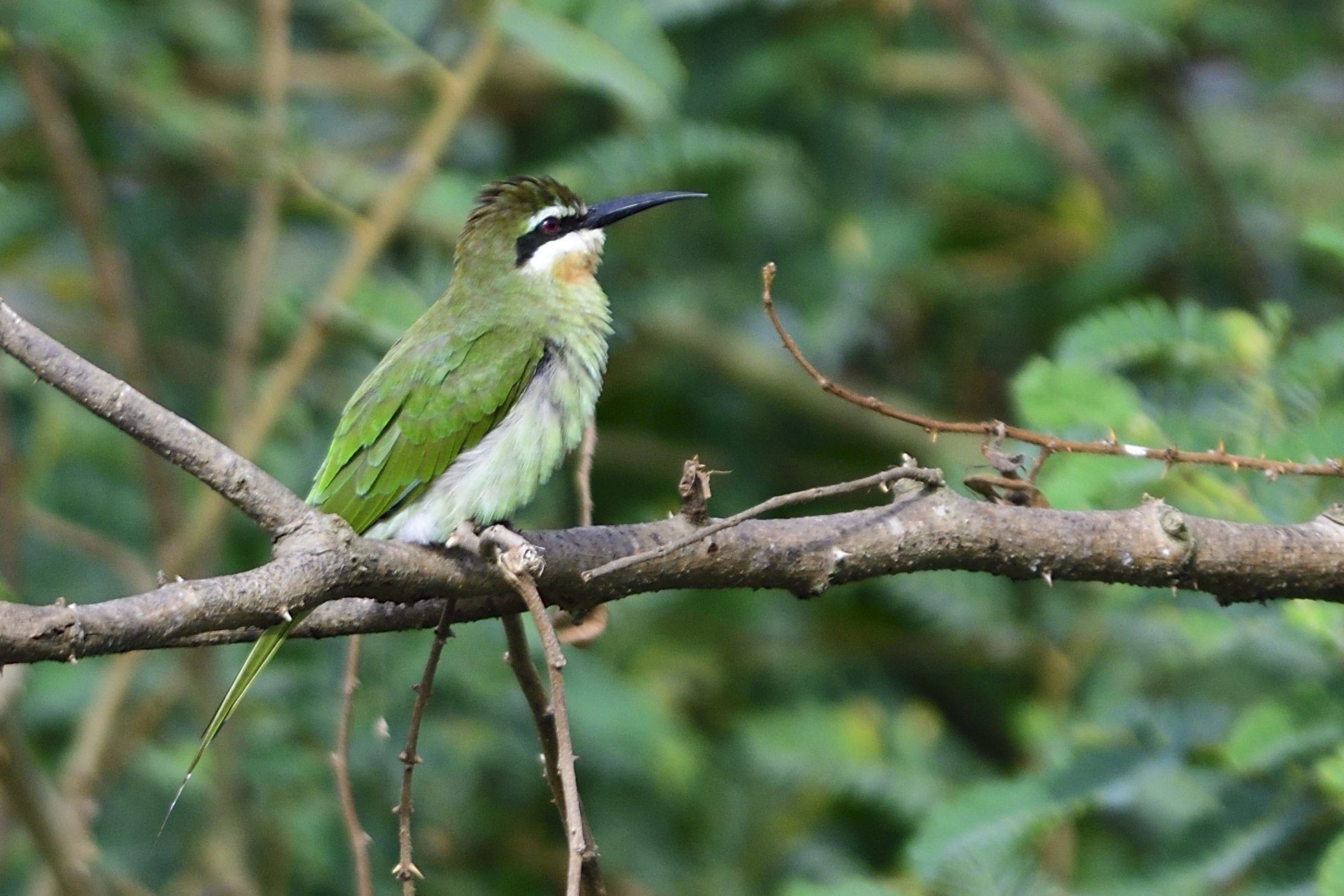
White-throated Bee-eater, Merops albicollis
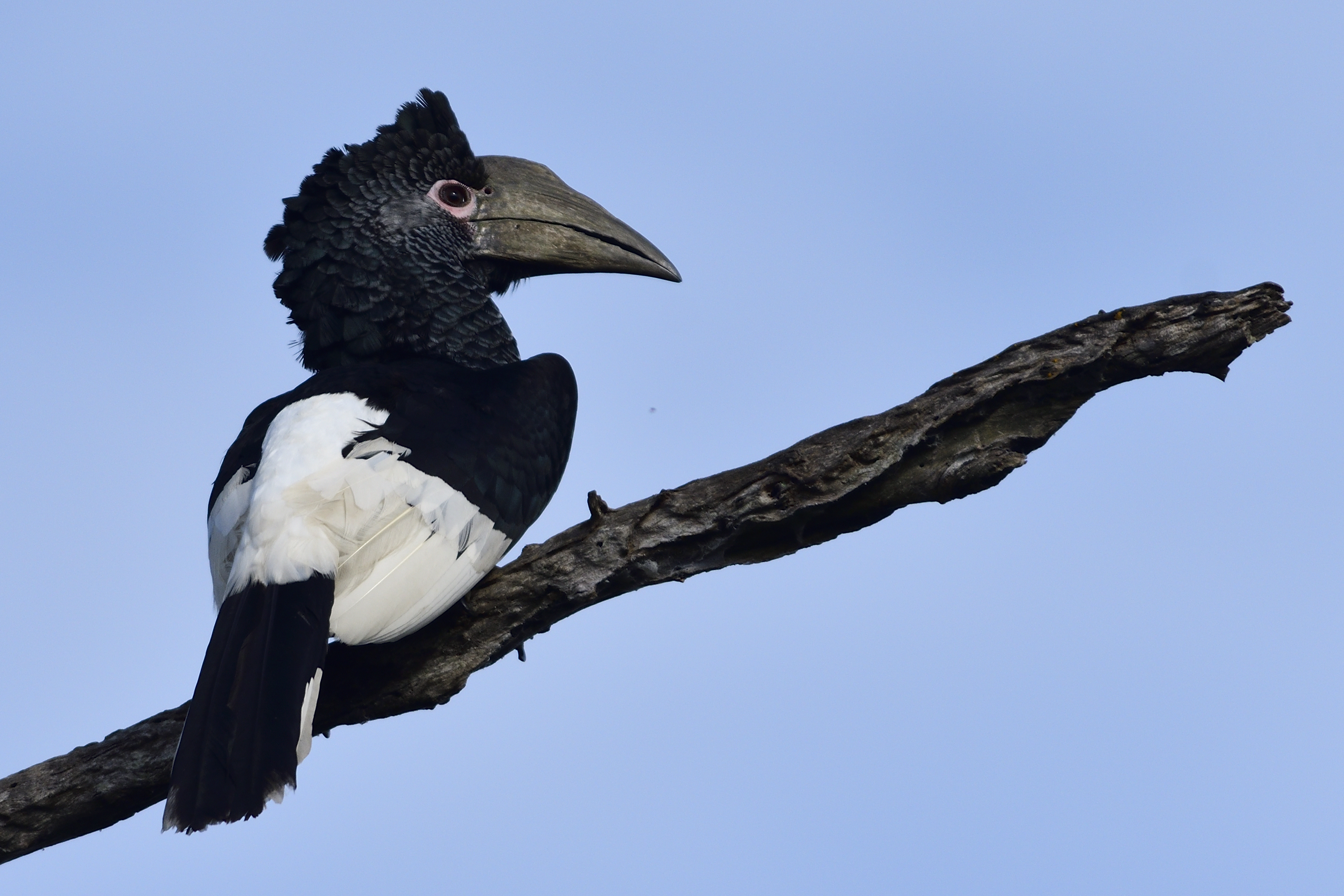
Black-and-white Casqued Hornbill, Bycanistes subcylindricus
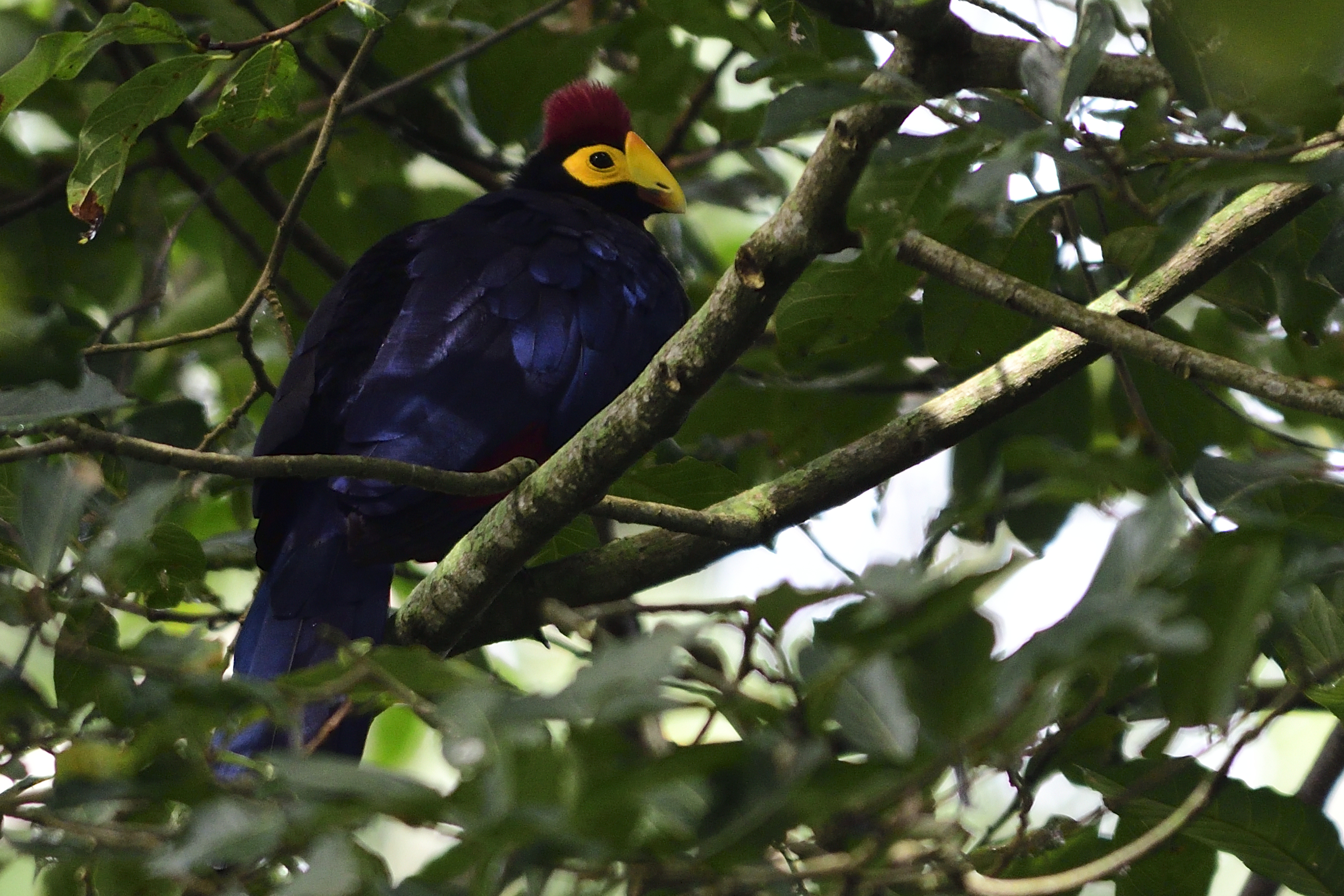
Ross´s Turaco, Musophaga rossae
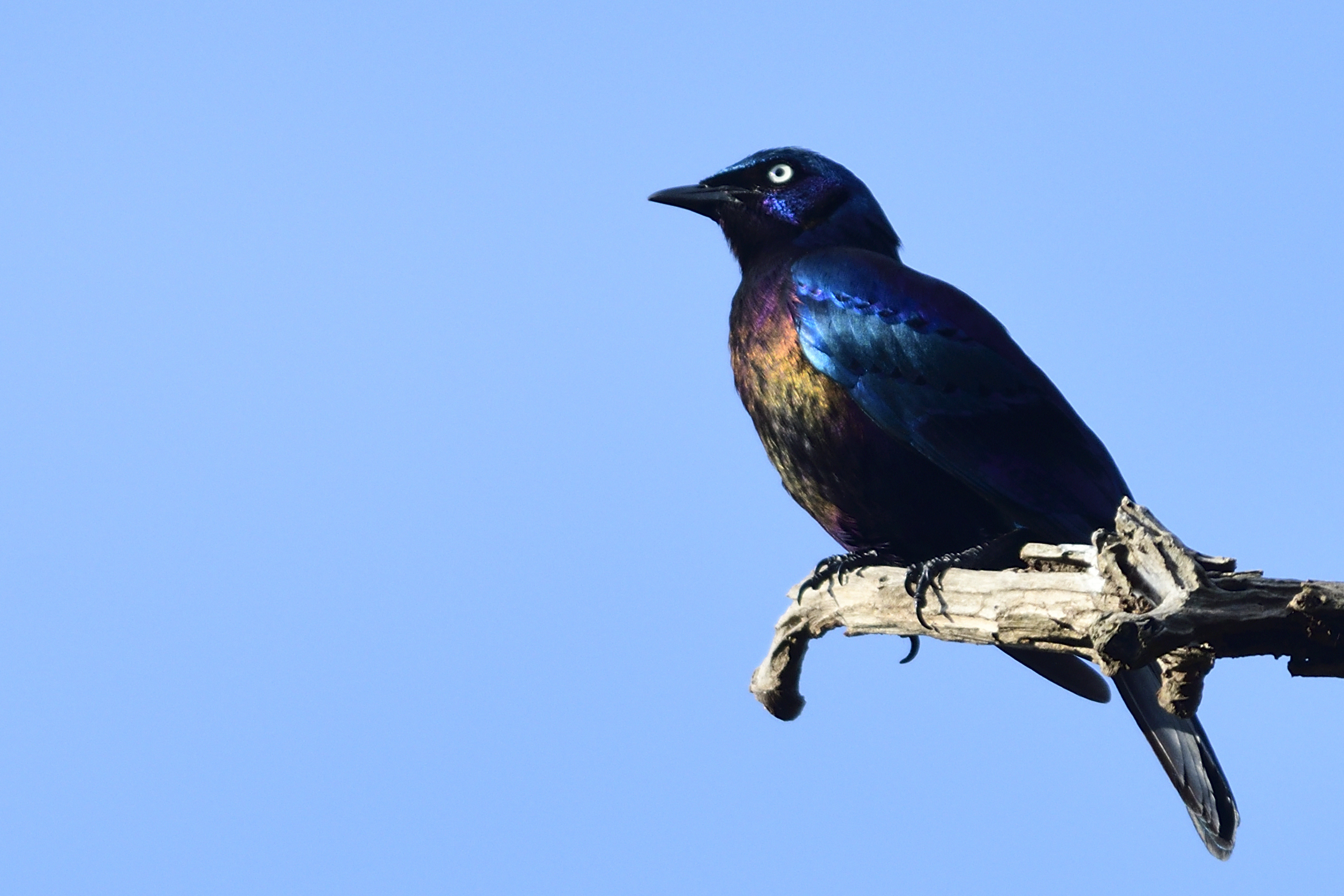
Splendid Starling, Lamprotornis splendidus
This ends Part 1 of the epic Uganda and Rwanda trip. Stay tuned for Part 2 coming up soon. It was a fantastic trip, my first time in Uganda, but still a lot more birds out there so I will be back.